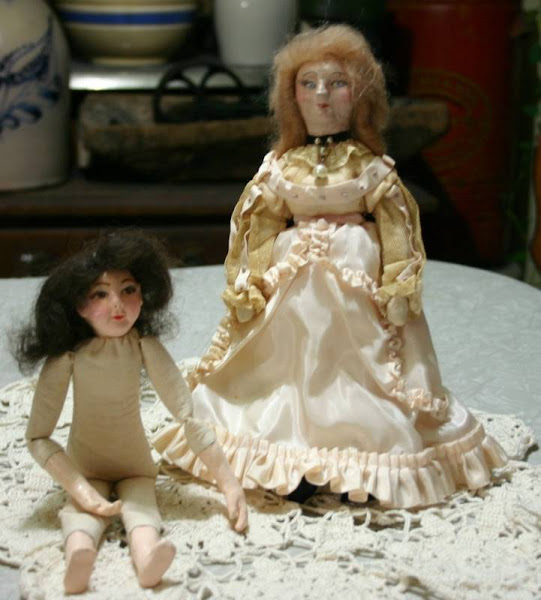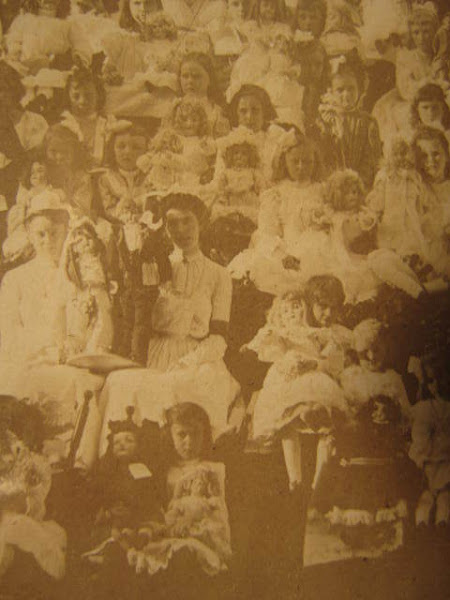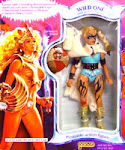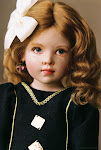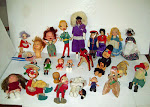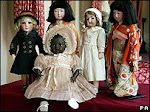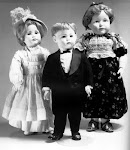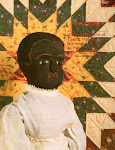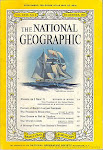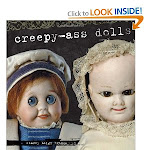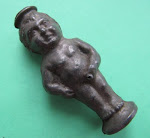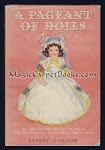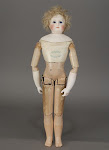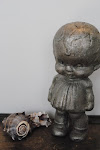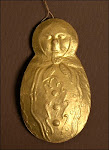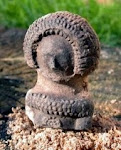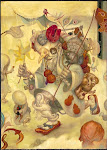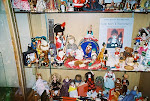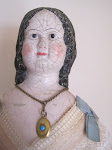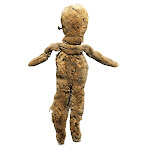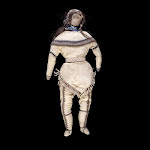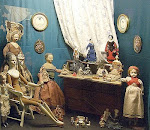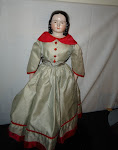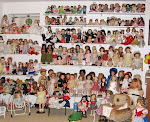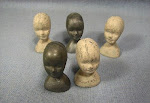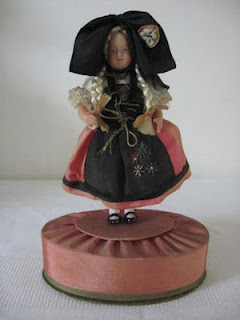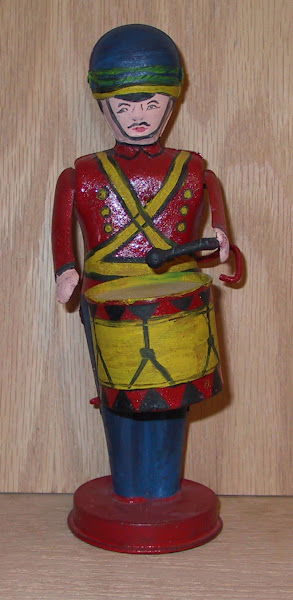For those who love Tonner; enjoy!
Having trouble viewing this email?
Click here
http://campaign.r20.constantcontact.com/render?llr=b8clxgcab&v=001SbPU0nO9dPDvhIounHha8CfZMhC5kKSzdL1bDUKn1rmvCyOTmQk88n2zKi7ADyWTb5eBq-XatNjR5p-0IvIKkN_OaEBeUBLnT7ndlQ5BIK5Z2pGW78_LFg_NF1jahUBxBfE6fgJoh5St60lWNo9xLeyEda6BYiJfFchhUuExWhHIhYKUFpjSB_uWf00VZz5Yo0A1ezG2qWWpmbEeC5BzSSu0Vjdc8b3G6IM0o5nlyOmZyQHYrXLS3AArIFejRBfXGIeWlhHOT5s%3D
~~~~~~~~~~~~~~~~~~~~~~~~~~~~~~~~~~~~~~~~~~~~~~~~~~~~~~~~~~~~~~~~~~~~~~~~~~~~~~~~
December 30, 2011
Hi Collectors!
Start the new year right with our BRAND NEW site! The countdown to our new site
has begun: Only 4 more days to go until January 3rd, 2012!!
We've compiled some very important Tonner Tidbits for you, so print this out
and
hang it on your fridge (no seriously!):
* The new site will live here: www.tonnerdoll.com [http://r20.rs6.net/tn.jsp?llr=b8clxgcab&et=1109023635061&s=14814&e=001MMfoXZRkAQ6iGNmqVmLKzXsJu-KF7HZ53E6UXi2Vye4-4TOXENM4IKRdDVV_wZAvKE-Ra7rbVrZMtDLl1mcxK9sbqjzrMUrI54F25tAOi35WVJE0SA_CuQ==]
.
* You will get to choose a new password on our new site, even if you're already
registered on our current site. It's super-duper easy! Follow these
instructions:
* Go to our new site: www.tonnerdoll.com [http://r20.rs6.net/tn.jsp?llr=b8clxgcab&et=1109023635061&s=14814&e=001MMfoXZRkAQ6iGNmqVmLKzXsJu-KF7HZ53E6UXi2Vye4-4TOXENM4IKRdDVV_wZAvKE-Ra7rbVrZMtDLl1mcxK9sbqjzrMUrI54F25tAOi35WVJE0SA_CuQ==]
(on or after the Launch Day, of course!)
* In the upper right hand corner near the TD shopping bag, click LOG ON.
* Enter the email that you use to sign on to the old site.
* Click I FORGOT MY PASSWORD. Now, an email will be sent to you with a link
that
you must click. Clicking this link will take you back to www.tonnerdoll.com,
[http://r20.rs6.net/tn.jsp?llr=b8clxgcab&et=1109023635061&s=14814&e=001MMfoXZRkAQ7Q-Zdstaef9E_ZIl9Mq_8Lo7yof12DNpNg0-SJ6F6ssgBV8mDrYrnbOGIoFwIJXWufMGSfz0CBcqZ1VGuxuZjpVsL4DABKtlBHSCTdrFk0eg==]
where you'll get to reset your password! Easy as 123!
* Now, peruse the new site, enjoy the brand NEW hub for all things Tonner, and
shop
your little vinyl heart out!
* Please note that any bookmarks you have saved on your web browser will not be
valid, as the data will no longer live at that spot on the internet! Don't
worry,
it has a much better home...
* The first time you visit our NEW website, please allow it a few moments to
load
on your screen. You see, your web browser will be so ecstatic to show you our
NEW
site that in it's excitement, there may be a slight delay before it gets itself
together and displays the page. We blame the machine.
Tune into Facebook and our blog to join in the countdown fun!
Best,
Team Tonner
P.S. If you haven't checked out our brand new doll photo-sharing site yet, get
thee
to www.dollduels.com [http://r20.rs6.net/tn.jsp?llr=b8clxgcab&et=1109023635061&s=14814&e=001MMfoXZRkAQ7gpBkIOt45kBIrLfJzdGOjp6yU0uc7l1O1bUVzREunbenHmkJ_LVQJlR6kJUKvkGkYAlRATfZvOMNq2ph8hfV_cZyfTJp6EG4KylbD5yIEiQ==]
and get inspired!!
~~~~~~~~~~~~~~~~~~~~~~~~~~~~~~~~~~~~~~~~~~~~~~~~~~~~~~~~~~~~~~~~~~~~~~~~~~~~~~~~
Find us on Facebook [http://r20.rs6.net/tn.jsp?llr=b8clxgcab&et=1109023635061&s=14814&e=001MMfoXZRkAQ71SMb0mHxw23Xf9dY3peURCvkZrggFvTUSbfffWs1EojMqNLROCxQQ--dkw6g_NPgVWC5N4gO7rmMY85Zm3lsS8KNaTL-ZbPQWDCgjnvo5HuYVSXYxGDZV]
Follow us on Twitter [http://r20.rs6.net/tn.jsp?llr=b8clxgcab&et=1109023635061&s=14814&e=001MMfoXZRkAQ6GIwY7BD_kARy1VneSNCk7v2WqMjDaF8JmPSx8RA2gx0ATsg05Maizzv3ursDk8PlHBppXXubGsIYBwut9F1w-0pvTWDnoMB-xZyRiGwnn0h75YKXiDDCdwekaookhH1E=]
View our videos on YouTube [http://r20.rs6.net/tn.jsp?llr=b8clxgcab&et=1109023635061&s=14814&e=001MMfoXZRkAQ6A1htBgi4BRH9F3F-pxDB480-LT-PmFAz-Muu4_zmRkNAw02C0tjbsawSAQa9AMF-MbdpckExHVgUA0nZYAHYgfRYez9_Ao611CQBtAksLOupu-gD2NBrTOxbR1PT6g8HtQGzYoPjYOCluZLnAjFOaQN-356iMwho=]
Visit our blog [http://r20.rs6.net/tn.jsp?llr=b8clxgcab&et=1109023635061&s=14814&e=001MMfoXZRkAQ6Hg5G6GNHpsRxkgC9NZgG8MSx744ctN6htpKdt7g_cmkfxfbb8rnfsNya7l1Dgs54wxZGP4u6KdjooZ4Z0sFUM5CCkMIuSkyLq2NpkX3gcDYp46aqmkt3t]
Follow us on Facebook, Twitter, You Tube, and our Tonner Blog!
~~~~~~~~~~~~~~~~~~~~~~~~~~~~~~~~~~~~~~~~~~~~~~~~~~~~~~~~~~~~~~~~~~~~~~~~~~~~~~~~
~~~~~~~~~~~~~~~~~~~~~~~~~~~~~~~~~~~~~~~~~~~~~~~~~~~~~~~~~~~~~~~~~~~~~~~~~~~~~~~~
Forward email
http://ui.constantcontact.com/sa/fwtf.jsp?llr=b8clxgcab&m=1101884918625&ea=etsag1998@aol.com&a=1109023635061
This email was sent to etsag1998@aol.com by info@tonnerdirect.com.
Update Profile/Email Address
http://visitor.constantcontact.com/do?p=oo&mse=001P3AZIpApn2BdrvJb1dNyIhic73CtXuXAOKRYvxfL3FU%3D&t=001XEBHgsNq5ES-CMEvaUCJtg%3D%3D&reason=001IqezpQbqEsU%3D&llr=b8clxgcab
Instant removal with SafeUnsubscribe(TM)
http://visitor.constantcontact.com/do?p=un&mse=001P3AZIpApn2BdrvJb1dNyIhic73CtXuXAOKRYvxfL3FU%3D&t=001XEBHgsNq5ES-CMEvaUCJtg%3D%3D&reason=001IqezpQbqEsU%3D&llr=b8clxgcab
Privacy Policy:
http://ui.constantcontact.com/roving/CCPrivacyPolicy.jsp
Online Marketing by
Constant Contact(R)
www.constantcontact.com
Tonner Direct | 301 Wall Street | Kingston | NY | 12401
Friday, December 30, 2011
Thursday, December 29, 2011
Haga Dockan
Looking for information about a 15 in. Swedish celluloid doll in her original box. This is the informaton on her box. Here are some photos of other dolls of this type. The first is of the doll and her box:
Repair tips
From an online newsletter with a link for the rest of the article:
http://collectdolls.about.com/library/weekly/aa081800a.htm?nl=1
Restoration tips:
"DOLL RESTORATION AND CONSERVATION: WHAT YOU NEED TO KNOW" > Page 1, 2, 3, 4, 5, 6, 7,
Doll Restoration and Conservation
What you need to know
"Conservation differs from restoration by aiming to preserve and clarify what survives, rather than replace what is missing."
"Conservation is a race against time"
"Do nothing that cannot be undone" (Bettyanne Twigg, UFDC President)
There is an epidemic in doll collecting--an epidemic of doll restoration. This epidemic has been fostered by the easy, open market of eBay and other online auction houses, which has allowed collectors to easily sell items from their collections (as well as their garage sale and estate sale finds). Naturally, a vintage or antique doll that is photo-ready with a perky dress, bright painted features and a neat hairdo is going to sell quicker than a doll with aged-looking clothing, faded paint and flaws. So, collectors by the thousands are taking their vintage and antique dolls that are not in mint condition, and they are doing everything in their power to make the doll and its outfit more perfect--they curl and style the hair, they wash, bleach and starch the doll costume (or replace it entirely, whether it is original to the doll or not), and they repair tears and repaint facial features.
Now, I am not NECESSARILY saying there is anything wrong with this....what I AM saying is that there is a right way to restore a doll that preserves its originality, historical value, and that does not damage a doll. On the other hand, careless restoration can actually damage the value of the doll, and also destroy any historical value it might have. I agree strongly with, and cannot emphasize enough, the importance of the UFDC motto on doll conservation and restoration: "Do nothing that cannot be undone."
Additionally, a vital aspect of doll collecting is often overlooked by eager doll collectors--conservation of their dolls. To conserve dolls is to preserve them--to fight against the damaging forces of temperature, light, insects, dirt, dust and time. Conservation, properly done and understood, will help your treasures last your lifetime, and hopefully to also last for generations to come.
This multi-part article will help you navigate the topics of doll restoration and conservation. There are sections on conservation/restoration of bisque dolls, vinyl dolls, doll costumes, doll wigs and paper preservation. There is also an extensive bibliography, and links to sites with further information on these topics. I have taken the information in this article from many sources--my own experience, the experience of my husband who has taken an in-depth course in porcelain and composition repair, and courses on restoration and conservation taken at UFDC conventions given by well-known doll conservationist (and UFDC president!) Bettyanne Twigg, and also given by the conservator at the Strong Museum in Rochester, NY.
DEFINITIONS
The following definitions are not necessarily the ONLY ones--some people would call preservation and conservation the same process. I will use preservation and conservation interchangeably here.
Preservation: Protect a doll from destructive forces--heat, light, insects, dust and dirt.
Conservation: Treat something which already happened and HALT the problem (string a doll, treat an insect infestation, re-set eyes that have fallen out, stop further melting of silks, etc.)
Restoration: Replace or fix something NOT on a doll, or improve something on a doll. Cleaning dirty outfits, add a new finger, restyle/add a wig, repaint a doll.
General Principles of Doll Restoration
How Severe Should The Restoration Be?: I've mentioned it in the introduction, and I'll mention it here again--do NOTHING that cannot be undone--at least to any vintage or antique doll with historical value--most antique dolls, vintage dolls with original clothing an presentation, etc. Now, obviously if you have a vintage Barbie that is a basket case--no face paint, vinyl splits, hair a mess, no original clothing--the doll has little or NO historical (or other!) value, and that is a perfect candidate for no-holds barred restoration including perhaps treatments and repainting that cannot be undone! The only caveat I have here is if you DO restore a doll that is a total basket case, PLEASE employ the proper ethics and make sure that all such restoration is disclosed upon the sale of the doll.
Wash Your Hands! Wash your hands quite a bit while you are working with vintage or antique dolls-or wear gloves. Oils from your hands transfer to dolls and doll clothing. You don't SEE the oils, but the oils attract bugs, mold, and dirt. Some people use baby wipes to clean their hands--I use plain soap (such as ivory) and water only since I am worried about types of residue that baby wipes may leave on dolls and their clothes. Another reason to use gloves when working with dolls is to protect yourself from substances that can be ON new, unfamiliar your dolls--You should use gloves to protect yourself when working with unfamiliar dolls (you don't know if pesticides have been used, etc.) I will admit that I have a hard time following this advice, as I hate to wear gloves when I am working.
SEE What You are Doing: Use white cloths to clean dolls so you can SEE what the effect is--are you lifting just dirt from the doll, or also paints, too? And, only work in a very well lighted area; if you have daylight corrected bulbs, that is ideal.
Be Prepared: Have everything before you (tools, materials, etc). set out before you start. Don't eat/drink while you are working (bad things from the doll can get in your food and drink--bugs, chemicals, even pesticide residues--you DON'T know what treatments/problems a doll ahs before you get it!) AND, trust me, coffee spilled all over a composition doll or body you are working on WILL damage it.
Ventilation!: Only repair dolls with proper ventilation--some of the items that are used for cleaning and restoring dolls can give off harmful fumes.
Keep a Trail....If you take a doll completely apart, sketch things before you do this so you can get them back together again (this is particularly important for dolls with complicated bodies that need restringing).
Ethics of Selling a Restored Doll: If you sell a doll, you MUST disclose any changes made to the doll--any repainting, repairs, added materials (new eyes, wig). For certain vintage dolls such as vintage Barbie, even restyling the hair effects the value and should be disclosed; so does washing the clothing. However, you do not have to disclose basic conservation measures such as cleaning dolls. For antique dolls, washing of clothing and restyling of wigs is generally not required to be disclosed.
Don't miss the rest of the articles (below!) in this series--find out everything from how to clean a composition doll, to how to repair a split in a vinyl Barbie doll, to how to clean doll clothes safely, and also where to find LOTS of additional information!
Second Page > General Principles of Doll Conservation: How To Make Your Treasures Last! > Page 1, 2, 3, 4, 5, 6, 7
Third Page > Tips For Successful Doll Restoration > Page 1, 2, 3, 4, 5, 6, 7
http://collectdolls.about.com/library/weekly/aa081800a.htm?nl=1
Restoration tips:
"DOLL RESTORATION AND CONSERVATION: WHAT YOU NEED TO KNOW" > Page 1, 2, 3, 4, 5, 6, 7,
Doll Restoration and Conservation
What you need to know
"Conservation differs from restoration by aiming to preserve and clarify what survives, rather than replace what is missing."
"Conservation is a race against time"
"Do nothing that cannot be undone" (Bettyanne Twigg, UFDC President)
There is an epidemic in doll collecting--an epidemic of doll restoration. This epidemic has been fostered by the easy, open market of eBay and other online auction houses, which has allowed collectors to easily sell items from their collections (as well as their garage sale and estate sale finds). Naturally, a vintage or antique doll that is photo-ready with a perky dress, bright painted features and a neat hairdo is going to sell quicker than a doll with aged-looking clothing, faded paint and flaws. So, collectors by the thousands are taking their vintage and antique dolls that are not in mint condition, and they are doing everything in their power to make the doll and its outfit more perfect--they curl and style the hair, they wash, bleach and starch the doll costume (or replace it entirely, whether it is original to the doll or not), and they repair tears and repaint facial features.
Now, I am not NECESSARILY saying there is anything wrong with this....what I AM saying is that there is a right way to restore a doll that preserves its originality, historical value, and that does not damage a doll. On the other hand, careless restoration can actually damage the value of the doll, and also destroy any historical value it might have. I agree strongly with, and cannot emphasize enough, the importance of the UFDC motto on doll conservation and restoration: "Do nothing that cannot be undone."
Additionally, a vital aspect of doll collecting is often overlooked by eager doll collectors--conservation of their dolls. To conserve dolls is to preserve them--to fight against the damaging forces of temperature, light, insects, dirt, dust and time. Conservation, properly done and understood, will help your treasures last your lifetime, and hopefully to also last for generations to come.
This multi-part article will help you navigate the topics of doll restoration and conservation. There are sections on conservation/restoration of bisque dolls, vinyl dolls, doll costumes, doll wigs and paper preservation. There is also an extensive bibliography, and links to sites with further information on these topics. I have taken the information in this article from many sources--my own experience, the experience of my husband who has taken an in-depth course in porcelain and composition repair, and courses on restoration and conservation taken at UFDC conventions given by well-known doll conservationist (and UFDC president!) Bettyanne Twigg, and also given by the conservator at the Strong Museum in Rochester, NY.
DEFINITIONS
The following definitions are not necessarily the ONLY ones--some people would call preservation and conservation the same process. I will use preservation and conservation interchangeably here.
Preservation: Protect a doll from destructive forces--heat, light, insects, dust and dirt.
Conservation: Treat something which already happened and HALT the problem (string a doll, treat an insect infestation, re-set eyes that have fallen out, stop further melting of silks, etc.)
Restoration: Replace or fix something NOT on a doll, or improve something on a doll. Cleaning dirty outfits, add a new finger, restyle/add a wig, repaint a doll.
General Principles of Doll Restoration
How Severe Should The Restoration Be?: I've mentioned it in the introduction, and I'll mention it here again--do NOTHING that cannot be undone--at least to any vintage or antique doll with historical value--most antique dolls, vintage dolls with original clothing an presentation, etc. Now, obviously if you have a vintage Barbie that is a basket case--no face paint, vinyl splits, hair a mess, no original clothing--the doll has little or NO historical (or other!) value, and that is a perfect candidate for no-holds barred restoration including perhaps treatments and repainting that cannot be undone! The only caveat I have here is if you DO restore a doll that is a total basket case, PLEASE employ the proper ethics and make sure that all such restoration is disclosed upon the sale of the doll.
Wash Your Hands! Wash your hands quite a bit while you are working with vintage or antique dolls-or wear gloves. Oils from your hands transfer to dolls and doll clothing. You don't SEE the oils, but the oils attract bugs, mold, and dirt. Some people use baby wipes to clean their hands--I use plain soap (such as ivory) and water only since I am worried about types of residue that baby wipes may leave on dolls and their clothes. Another reason to use gloves when working with dolls is to protect yourself from substances that can be ON new, unfamiliar your dolls--You should use gloves to protect yourself when working with unfamiliar dolls (you don't know if pesticides have been used, etc.) I will admit that I have a hard time following this advice, as I hate to wear gloves when I am working.
SEE What You are Doing: Use white cloths to clean dolls so you can SEE what the effect is--are you lifting just dirt from the doll, or also paints, too? And, only work in a very well lighted area; if you have daylight corrected bulbs, that is ideal.
Be Prepared: Have everything before you (tools, materials, etc). set out before you start. Don't eat/drink while you are working (bad things from the doll can get in your food and drink--bugs, chemicals, even pesticide residues--you DON'T know what treatments/problems a doll ahs before you get it!) AND, trust me, coffee spilled all over a composition doll or body you are working on WILL damage it.
Ventilation!: Only repair dolls with proper ventilation--some of the items that are used for cleaning and restoring dolls can give off harmful fumes.
Keep a Trail....If you take a doll completely apart, sketch things before you do this so you can get them back together again (this is particularly important for dolls with complicated bodies that need restringing).
Ethics of Selling a Restored Doll: If you sell a doll, you MUST disclose any changes made to the doll--any repainting, repairs, added materials (new eyes, wig). For certain vintage dolls such as vintage Barbie, even restyling the hair effects the value and should be disclosed; so does washing the clothing. However, you do not have to disclose basic conservation measures such as cleaning dolls. For antique dolls, washing of clothing and restyling of wigs is generally not required to be disclosed.
Don't miss the rest of the articles (below!) in this series--find out everything from how to clean a composition doll, to how to repair a split in a vinyl Barbie doll, to how to clean doll clothes safely, and also where to find LOTS of additional information!
Second Page > General Principles of Doll Conservation: How To Make Your Treasures Last! > Page 1, 2, 3, 4, 5, 6, 7
Third Page > Tips For Successful Doll Restoration > Page 1, 2, 3, 4, 5, 6, 7
New Newsletter
From Denise Van Patten, your Guide to Doll Collecting
Happy New Year to all! Hard to believe that this is 2012, and will be my 14th year at Doll Collecting at About.com! This week, we take a look at New Year Resolutions for doll collectors, and also our series on doll repair and display. Until next year! Denise
New Year Resolutions for Doll Collectors
Its the start of a new year, which means its time to review everything in your life--including your doll collection. Here are my New Year Resolutions that every doll collector should make. ... Read more
See More About: doll insurance doll display doll shows
Doll Repair - Everything You Need To Know
If you take stock of your doll collection when taking down your decorations and makking your New Year resolutions, you may glance over at a stack of dolls needing repair, If so, you'll need to read this series on doll repair and conservation... Read more
See More About: doll conservation doll restoration doll repair
Doll Stands for Display
If you collect stamps, they sit in a stamp album. If you collect cars, they stand on their own four wheels. If you collect quilts, they hang on a wall. But, what about dolls? Dolls need to be displayed...and generally, that means that they need to be standing in a doll cabinet. Sure, you might... Read more
See More About: doll display doll cabinets doll accessories
New Series of Barbie Dolls of The World Just Released!
The Barbie Dolls of the World is one of the longest-running and best-selling Barbie doll series ever! The newest Barbie Dolls of The World series has just been released! Highlights... Read more
Happy New Year to all! Hard to believe that this is 2012, and will be my 14th year at Doll Collecting at About.com! This week, we take a look at New Year Resolutions for doll collectors, and also our series on doll repair and display. Until next year! Denise
New Year Resolutions for Doll Collectors
Its the start of a new year, which means its time to review everything in your life--including your doll collection. Here are my New Year Resolutions that every doll collector should make. ... Read more
See More About: doll insurance doll display doll shows
Doll Repair - Everything You Need To Know
If you take stock of your doll collection when taking down your decorations and makking your New Year resolutions, you may glance over at a stack of dolls needing repair, If so, you'll need to read this series on doll repair and conservation... Read more
See More About: doll conservation doll restoration doll repair
Doll Stands for Display
If you collect stamps, they sit in a stamp album. If you collect cars, they stand on their own four wheels. If you collect quilts, they hang on a wall. But, what about dolls? Dolls need to be displayed...and generally, that means that they need to be standing in a doll cabinet. Sure, you might... Read more
See More About: doll display doll cabinets doll accessories
New Series of Barbie Dolls of The World Just Released!
The Barbie Dolls of the World is one of the longest-running and best-selling Barbie doll series ever! The newest Barbie Dolls of The World series has just been released! Highlights... Read more
Friday, December 23, 2011
For Quilters
Something I love but don't get to do much of due to time contstraints; I am sharing my latest quilters newsletter. Enjoy! PS: The local quilters guild features a show where I've bought handmade cloth dolls, art dolls, and supplies, as well as quilting materials. Just another place to find dolls!
I recently attended Fall Quilt Market in Houston and saw previews of new and exciting products in the world of sewing and quilting notions. There are a few items coming out soon that will be of interest to you, and some current products that are so great, they deserve a second look. I have found that a great product is sometimes overlooked for a few markets before it is "discovered." Here are a few products I feel are worth checking out ...
In the Quilting World
Notions for Quilting
Quilt Market can be overwhelming. I usually have to walk the whole floor first, before I can actually see what's there. I am first and foremost, looking at the color trends of textiles so that I can bring you, our reader, the newest in quilting fabrics and design. I look for great designers I feel will be of interest to you, and I try to be ahead of the pack. My mission is to keep you inspired and to keep you quilting. Read more »
Tips & Tricks
Letters From Our Readers
It seems that our Tips & Tricks section has become the most popular part of our newsletter. If you have something you would like to share with your fellow quilters, please do. We will try to publish as many as we can. Read more »
Free Pattern
True Lover's Knot
True Lover's Knot is the perfect traditional pattern to explore a two-fabric quilt design. Working with two fabrics can be a lot of fun if you have the right contrast. Contrast is what makes the design "pop." Light and dark can be a striking combination. Read more »
Let's Bind It!
I hope you find the information from our readers helpful, and I hope you give some thought to some of the notions and sewing products we have mentioned in this newsletter. Some of the products may make your quilting much more enjoyable ... Read more »
Table of Contents
In the Quilting World
• Notions for Quilting
Tips & Tricks
Free Pattern
Let's Bind It!
Click here to browse through every page of the Clotilde catalog!
Follow Us On ...
Do you know someone who would enjoy receiving this newsletter? Forward it to a friend by clicking here.
Did you receive this message
I recently attended Fall Quilt Market in Houston and saw previews of new and exciting products in the world of sewing and quilting notions. There are a few items coming out soon that will be of interest to you, and some current products that are so great, they deserve a second look. I have found that a great product is sometimes overlooked for a few markets before it is "discovered." Here are a few products I feel are worth checking out ...
In the Quilting World
Notions for Quilting
Quilt Market can be overwhelming. I usually have to walk the whole floor first, before I can actually see what's there. I am first and foremost, looking at the color trends of textiles so that I can bring you, our reader, the newest in quilting fabrics and design. I look for great designers I feel will be of interest to you, and I try to be ahead of the pack. My mission is to keep you inspired and to keep you quilting. Read more »
Tips & Tricks
Letters From Our Readers
It seems that our Tips & Tricks section has become the most popular part of our newsletter. If you have something you would like to share with your fellow quilters, please do. We will try to publish as many as we can. Read more »
Free Pattern
True Lover's Knot
True Lover's Knot is the perfect traditional pattern to explore a two-fabric quilt design. Working with two fabrics can be a lot of fun if you have the right contrast. Contrast is what makes the design "pop." Light and dark can be a striking combination. Read more »
Let's Bind It!
I hope you find the information from our readers helpful, and I hope you give some thought to some of the notions and sewing products we have mentioned in this newsletter. Some of the products may make your quilting much more enjoyable ... Read more »
Table of Contents
In the Quilting World
• Notions for Quilting
Tips & Tricks
Free Pattern
Let's Bind It!
Click here to browse through every page of the Clotilde catalog!
Follow Us On ...
Do you know someone who would enjoy receiving this newsletter? Forward it to a friend by clicking here.
Did you receive this message
Thursday, December 22, 2011
Things we Like for the Holidays
1. Lights and displays of all types
1a. Oyster Dressing
2. Buying bell bird feeders for the birds
3. Christmas cards, sending and getting
4. Homemade gifts
5. Cookie Walk
6. Delivering presents
7. Department store windows, past and present, and books about them
8. Yes, fruitcake and plum pudding
9. Xmas mysteries and books
10. Decorating trees
11. Rotating ornaments and hanging new ones
12. Shopping all year, especially ornamnents
13. Christmas dinners
14. Baking mom's recipes
15. Decorating the doll houses
16. Remembering my mom and her traditions
17. Carols and Xmas music on the radio
18. Xmas at school for hte kids
19. January Xmas with our friends
20. Scented candles and pine
22. Church memories singing with the choir and making choir books
23. Candy canes, and later, candy canes in hot cocoa
24. Walking dogs on Xmas morning and greeting everyone else on the street with Merry Christmas!
25. Wrapping last minute presents
26. Opening presents, though for me, that was years past. I don't get any now.
27. New toys and dolls on display
28. Xmas historical open houses
29. Xmas walks and hot chocolate
30. Memories of Xmas past at Macys, Dobbs, Famous Barr, Marshall Field and Yule Log
31. Full stockings on Xmas Morning
32. Hiding and hanging small presents to be found through the 12 days of Xmas
33. Mateus at dinner
34. Lobster and shrimp for dinner
35. Trips to see Xmas lights
36. Dropping money in Salvation Army Kettles
37. Making Donations to the Salvation army and Goodwill over the Holidays
38. Hannukah Lights
39. After Xmas ornament sales
40. Kwanzaa ornaments
41. New Years night with our Friends
42. Going out on Christmas Eve for lunch to catch the last minute shoppers
43. Candy Cane pie
44. Holiday Lattes
1a. Oyster Dressing
2. Buying bell bird feeders for the birds
3. Christmas cards, sending and getting
4. Homemade gifts
5. Cookie Walk
6. Delivering presents
7. Department store windows, past and present, and books about them
8. Yes, fruitcake and plum pudding
9. Xmas mysteries and books
10. Decorating trees
11. Rotating ornaments and hanging new ones
12. Shopping all year, especially ornamnents
13. Christmas dinners
14. Baking mom's recipes
15. Decorating the doll houses
16. Remembering my mom and her traditions
17. Carols and Xmas music on the radio
18. Xmas at school for hte kids
19. January Xmas with our friends
20. Scented candles and pine
22. Church memories singing with the choir and making choir books
23. Candy canes, and later, candy canes in hot cocoa
24. Walking dogs on Xmas morning and greeting everyone else on the street with Merry Christmas!
25. Wrapping last minute presents
26. Opening presents, though for me, that was years past. I don't get any now.
27. New toys and dolls on display
28. Xmas historical open houses
29. Xmas walks and hot chocolate
30. Memories of Xmas past at Macys, Dobbs, Famous Barr, Marshall Field and Yule Log
31. Full stockings on Xmas Morning
32. Hiding and hanging small presents to be found through the 12 days of Xmas
33. Mateus at dinner
34. Lobster and shrimp for dinner
35. Trips to see Xmas lights
36. Dropping money in Salvation Army Kettles
37. Making Donations to the Salvation army and Goodwill over the Holidays
38. Hannukah Lights
39. After Xmas ornament sales
40. Kwanzaa ornaments
41. New Years night with our Friends
42. Going out on Christmas Eve for lunch to catch the last minute shoppers
43. Candy Cane pie
44. Holiday Lattes
Tuesday, December 20, 2011
Toys Soldiers
Chapter 2
Toy Soldiers
In the First World War soldier dolls and tin
soldiers sometimes served in the chauvinistic and militant training of the young. The spirit of war
entered the nursery.
Manfred Bachman
Dolls the Wide World Over
Millions of children throughout the centuries have enjoyed fighting mock battles with toy soldiers. Little boys and girls have long saved their pennies and pocket money to buy small figures of lead and tin with which to people their dreams of heroism nd glory. In fact, the Brontë children's earliest literary endeavors were stories that they wrote about a set of toy soldiers that belonged to Branwell Brontë. Much has been written about the dangers of war toys, including soldiers. Yet, all the criticism does not seem to quell interest in them. One wonders why this is so; recent films including Apocalypse Now, The Killing Fields, Platoon, and Saving Private Ryan have accurately, perhaps too accurately, portrayed the horrors and senselessness of war. In the same light, many novels like Stephen Crane's The Red Badge of Courage and Wilfred Owen's poem "Dulce et Decorum" have also done much to debunk the romanticism of a soldier's life. Yet, children still adore toy soldiers. Some may claim that playing with war toys is cathartic because such play allows children to act out their aggressions in harmless settings, while others may seek to foster courage and patriotism through soldier play. One need only think of Lovelace's famous poem, "To Lucasta on Going to War" and its famous line, "I could not love thee so, dear, loved I not honor more."
At least one teacher I know who is an expert in children's literature has implied that war games, and even violent play, are an innate part of childhood. She has observed that, even if one takes away all toy guns from a little boy, he will chew a peanut butter sandwich into a gun, point it, and shout, "Bang! Bang!" Whatever the reason for their existence, however, toy soldiers, particularly of metal, are here to stay, and are more popular than ever.
The earliest model soldiers were probably made of wood. They represented Prince Ensah's guard and date to the twelfth Egyptian Dynasty, 2000 B.C. Like other dolls, the early toy soldiers were not meant to be toys. Rather, they accompanied their deceased owners to the underworld. One historian has said that model solders were not really popular in the Ancient world, (Alberini 5), but he then cites a Roman legionary made of tin from the Imperial Epoch (6). Also, a fifteen inch bronze model of an equestrian survives from ancient Greece. Flat lead soldiers existed in Rome in the third century A.D. The most famous model soldiers of recent times are probably the life-sized army of Chinese figures which numbered in the thousands and once adorned an emperor's tomb. These are currently reproduced as clay miniatures and may be purchased in many import and specialty stores.
As toys, model soldiers first appeared in the Middle Ages (Fawcett 215). Of these, Leslie Gordon has said that "[e]xcept for the ancient 'magic' doll, it is possible that the toy soldier, who made his first appearance in Europe in Medieval times, was the first doll to be made of metal" (43). Some of these soldiers may have had model accessories and buildings. For example, there is a four inch wooden model of the Bloody Tower of the Tower of London which may have belonged to the Little Princes murdered there. One author speculates that this model had little figures, perhaps made of metal, to go with it (Garrat 12). Such a concept is not hard to envision; even ancient dolls had tiny dishes and other accessories with them, and companies like Playskool and Lego, manufacturers of educational playthings, make toy castles complete with knights and guards.
Interest in toys that teach is not unique to our centuy. In the fifteenth century, historical model soldiers first appeared. Marie d' Medici is supposed to have had silver toy soldiers made for her son, Louis XIII (Alberini). As an adult, Louis supposedly melted them down to fund his wars (6). Bronze-cast tournament toys existed as early as 1490 and the Kunst Historiches Museum in Vienna has several examples. Also, the toy museum in Salzburg has a large collection of toy soldiers and model figures. One group represents five members of the ski patrol. They are complete to their clubs, rifles and ski poles.
Another group from the Salzburg Museum represents an open carriage with two, well-dressed passengers. The driver and his groom wear plumed helmets and the horse are white. The entire piece is well- painted and appears to be beautifully preserved. Still another interesting arrangement represents a group of jockeys. Part of the display includes dice, coins, and other paraphernalia of gambling. In the background is a flier explaining the steeple chase.
Some of these early soldiers and models were breathtaking in detail. One incredibly intricate lead musketeer is French and dates from about the time of Henry IV. It stands three inches (Garrat 13). At Cluny are two Medieval knights made of tin. Some of the Cluny soldiers were worked in gold and silver decorated with enameled bronze (Harris 8). A similar ship with soldiers in the Victoria and Albert Museum is German in origin. One of these ships represents Charles V and his court moving on deck (8).
By the early sixteenth century, some model and toy soldiers were on rollers and held miniature lances. The eighteenth century discovery of alloys facilitated the manufacture of toy soldiers (Alberini 7). Now, other metals could be mixed with the inexpensive tin to make a variety of goods. Standardized uniforms also came into use. As a result, the figures could be mass produced. Early boxed sets were sold unpainted by military unit in wooden boxes. They came in weights of 1 lb, 1/2 lb and 1/8 lb. Each kit contained from twenty to 150 soldiers (7). It is difficult to determine which manufacturer made these early soldiers because they were made before registration laws existed. Some manufacturers, however, marked their figures with initials (White 58).
Apparently, Frederick the Great inspired the creation of model soldiers in England (Hillier APOT 70). One early version was a "flat soldier," 30 mm in height (70). This height became standard for one maker, Henrichsen of Nuremburg, and was gradually adopted by others (70). Heinrichsen's sets included well-written histories to educate children (70).
In France, Ronde-Bosse created solid, three-dimensional soldiers in the eighteenth century (Alberini 7). Lucotte produced lead soldiers in 1789. Other sets came in elaborate boxes with the trademark CBG for Cuberly, Blondel and Gerbveau. This trademark is still used today. The Napoleonic sets wrapped in cellophane are popular.
Interesting and amusing stories about toy soldiers abound. the most famous is, perhaps, Hans Christian Andersen's "The Brave Tin Solder." Webster's play The Duchess of Malfi mentions toy soldiers as does Ben Jonson's The Devil is an Ass. Furthermore, in her memoirs, Catherine the Great discusses how the Czar Peter played with his model soldiers when he was Grand Duke (Harris 12). Some of these were lead (12). Supposedly, Napoleon used toy soldiers to plan battle strategies (Wenham Museum Collection 81). Some of his soldiers have been exhibited at the Coopers Union in New York. Also, a goldsmith named J.B. Odfiot is said to have made toy soldiers for Napoleon's son in 1812 (811).
Because of their popularity in the nineteenth century, old sets of soldiers were often forged. There is one anecdote of a dishonest shopkeeper who threw new solders made in the Medieval style in the Seine, then fished them out to sell as antique
(Alberini 6).
The historical archives of Barcelona, Spain, have a variety of metal figures and soldiers made from nineteenth century molds. These include dancers and figures in costumed, religious figures, etc. They are platy, painted in bright colors (Galter 498). The Salzburg Toy Museum has a large collection of unpainted, flat figures.
In 1820, William Britain devised hollow metal soldiers. This development was quite an innovation because now, more and cheaper soldiers could be produced, and more could afford them (Alberini 8). The United States contributed to the popularity of hollow soldiers by beginning to sell kits with molds and ready-yo-paint soldiers (Wenham Museum Collection 81). American poet Robert Lowell describes an amusing childhood incident were he convinced a friend with a fantastic collection of model lead soldiers to trade whole battalions of them for his own crude, papier maché models.
A variety of metal soldiers are still made. Several years ago, the television show "Falcon Crest" even had a character with a whole collection of them. A 1965 Hauser catalog shows of variety of soldiers, animals and fairy tale figures done in the style of the older, three-dimensional models. All, however, are plastic. The cover of the catalog shows a smith hammering with a red-hot iron on an anvil. The latest movie to star Robert DeNiro, Ronin, features an enviable collection of Japanese samurai lead soldiers.
Furthermore, Helmet Kranks of Salzburg has created an incredibly detailed model of an armoured general, circa 1580, in papier maché, wood, leather and metal. Every feather in his helmet is in place and his real sword rests properly in its tiny scabbard (Garrat52). The author's favorite model soldier are those of English artist Russel Gammage. His Gauls, Celts and Barbarians are complete with long hair awash in lime, long moustaches, breeches and colorful tunics. The Gauls lean against their long shields, arms crossed in defiance. They look as if they are awaiting further orders. These life-like figures are interesting to compare with the original Celtic bronze idols made centuries before. Gammage is a trained artist who used to design figures for the firm of Graham Farish (89). These lead models have influenced current action figures like the Spawn series by Todd McFarlane. Many of these are also created in cold cast resin, but are painted in the colors and traditions of the old metal soldier. McFarlane Toys also insists on paying great attention to detail, so that figures like Cosmic Angela are near-perfect miniatures with life-like dimensions. These "soldiers," however, recreate in three dimensions characters from old comic strips based on Celtic and Medieval Epics. Hence, the Spawn figures, and other dolls like them, allude to the Celtic Warrior Queens like Cartimandua and Boadicia.
If warrior queens and women soldier figures are popular as collectibles, one has to observe that many of the artists who design and create them are also women. Women also collect toy soldiers. Two are Kathleen Ball Nathaniel and Mme. Fernande Metayel, Paris. Mme. Metayel is an outstanding artist who took-up painting models after the deaths of her husband and father. She has won many honors for her work (Garrat 77). Margaret Cruikshank, who started the Mystery Doll Club, a mail order club where girls received a kit for dressing dolls from foreign countries, collects dolls in military dress. The author, too enjoyed toy soldiers when young and remembers playing nurse to the fallen plastic models of a childhood friend. He relegated her to this position because "she was a girl." A noted collector and doll author, Mary Hillier, has similar memories. Another time, the author rescued and reclaimed a number of tiny, red plastic revolutionary patriots from t he gravel of a friend's drive way where they had been abandoned. Aramis men's cologne offered lead British guards as a Christmas promotion in 1988. Other figures in lead were made by the same companies, but they represented other people besides soldiers. The author has figures dating from the forties which once belonged to her uncle. One is of a tiny farm woman. In her molded left arm, she holds a basket, but her right arm is separately jointed and swings back and forth. The author also has older figures representing comedian Charlie Chaplin and Abraham Lincoln. These remain unpainted. Many painted models from the forties and fifties of this century represent Native Americans of various tribes in different poses, horses, Civil War soldiers, and Arabs and their Steeds, the latter, perhaps, in tribute to Lawrence of Arabia. All these are marked "England" in embossed letters underneath their stands. For awhile, British companies painted the skin tones of their soldiers according in various shades of brown and tan, so that African soldiers were dark brown, but Greek and Turkish soldiers were light brown.
Toy soldiers, then, were among the earliest toy dolls and metal dolls. They are a colorful source of history for everyone and continue to be created to the delight of children everywhere.
Since the days they were made in metal, they have been recreated in many materials. One unusual doll in the author's collection hails from Hong King. He is a china head doll with china limbs, dressed as a British soldier. What makes him interesting is that, while his dress and painted blonde hair and blue eyes are European, his sculpted features are Asian. To the people of Hong Kong who created him, he is their portrait of the British who colonized them. Also, besides the famous G.I. Joe still made today, their are companies making historical soldiers of plastic representing Napolean, Civil War Generals Lee and Grant, George Washington, and others. There is even a set raising the flag at Iwo Jima. G. I. Joe by Hasbro has several series of soldiers, including one representing Generals Patton, Colin Powell, and MacArthur. Another doll fittingly represents Bob Hope, who entertained American Troops so many years overseas. Women are not ignored, either. Israel produces female army soldiers, and the G.I. Joe nurse is among the most desirable Hasbro figures. Recently, the company created a special edition G.I. Jane, after Demi Moore's movie. (Ms. Moore, it will be remembered, is also an avid doll collector). That dolls often echo social and political trends is apparent in the history of G.I. Joe. Betty O. Bennett writes that G.I. Joe's sales suffered during the height of the Vietnam War because of the outry against war toys (78). Before that time, G.I. Joe and his buddies were bringing Hasbro thirty-five to forty million dollars in revenue.
For those with more exotic tastes, there are female warrior figures including Lady Death, Xena Warrior Princess, The Golden Girls by Galoob, and She-Ra from Mattel's Masters of the Universe series. Ironically, many of these soldiers are static; that is, they are not mechanical, though they represent men and women who needed to be agile and in constant motion to survive in battle. The next chapters describe dolls from all "walks of life" that not only portray certain characters, but also move and even speak like them. They are the "uncanny dolls" of which Rilke and Freud wrote, and the muses of both nightmares and dreams. In short, the next two chapters discuss automata and mechanical dolls.
Toy Soldiers
In the First World War soldier dolls and tin
soldiers sometimes served in the chauvinistic and militant training of the young. The spirit of war
entered the nursery.
Manfred Bachman
Dolls the Wide World Over
Millions of children throughout the centuries have enjoyed fighting mock battles with toy soldiers. Little boys and girls have long saved their pennies and pocket money to buy small figures of lead and tin with which to people their dreams of heroism nd glory. In fact, the Brontë children's earliest literary endeavors were stories that they wrote about a set of toy soldiers that belonged to Branwell Brontë. Much has been written about the dangers of war toys, including soldiers. Yet, all the criticism does not seem to quell interest in them. One wonders why this is so; recent films including Apocalypse Now, The Killing Fields, Platoon, and Saving Private Ryan have accurately, perhaps too accurately, portrayed the horrors and senselessness of war. In the same light, many novels like Stephen Crane's The Red Badge of Courage and Wilfred Owen's poem "Dulce et Decorum" have also done much to debunk the romanticism of a soldier's life. Yet, children still adore toy soldiers. Some may claim that playing with war toys is cathartic because such play allows children to act out their aggressions in harmless settings, while others may seek to foster courage and patriotism through soldier play. One need only think of Lovelace's famous poem, "To Lucasta on Going to War" and its famous line, "I could not love thee so, dear, loved I not honor more."
At least one teacher I know who is an expert in children's literature has implied that war games, and even violent play, are an innate part of childhood. She has observed that, even if one takes away all toy guns from a little boy, he will chew a peanut butter sandwich into a gun, point it, and shout, "Bang! Bang!" Whatever the reason for their existence, however, toy soldiers, particularly of metal, are here to stay, and are more popular than ever.
The earliest model soldiers were probably made of wood. They represented Prince Ensah's guard and date to the twelfth Egyptian Dynasty, 2000 B.C. Like other dolls, the early toy soldiers were not meant to be toys. Rather, they accompanied their deceased owners to the underworld. One historian has said that model solders were not really popular in the Ancient world, (Alberini 5), but he then cites a Roman legionary made of tin from the Imperial Epoch (6). Also, a fifteen inch bronze model of an equestrian survives from ancient Greece. Flat lead soldiers existed in Rome in the third century A.D. The most famous model soldiers of recent times are probably the life-sized army of Chinese figures which numbered in the thousands and once adorned an emperor's tomb. These are currently reproduced as clay miniatures and may be purchased in many import and specialty stores.
As toys, model soldiers first appeared in the Middle Ages (Fawcett 215). Of these, Leslie Gordon has said that "[e]xcept for the ancient 'magic' doll, it is possible that the toy soldier, who made his first appearance in Europe in Medieval times, was the first doll to be made of metal" (43). Some of these soldiers may have had model accessories and buildings. For example, there is a four inch wooden model of the Bloody Tower of the Tower of London which may have belonged to the Little Princes murdered there. One author speculates that this model had little figures, perhaps made of metal, to go with it (Garrat 12). Such a concept is not hard to envision; even ancient dolls had tiny dishes and other accessories with them, and companies like Playskool and Lego, manufacturers of educational playthings, make toy castles complete with knights and guards.
Interest in toys that teach is not unique to our centuy. In the fifteenth century, historical model soldiers first appeared. Marie d' Medici is supposed to have had silver toy soldiers made for her son, Louis XIII (Alberini). As an adult, Louis supposedly melted them down to fund his wars (6). Bronze-cast tournament toys existed as early as 1490 and the Kunst Historiches Museum in Vienna has several examples. Also, the toy museum in Salzburg has a large collection of toy soldiers and model figures. One group represents five members of the ski patrol. They are complete to their clubs, rifles and ski poles.
Another group from the Salzburg Museum represents an open carriage with two, well-dressed passengers. The driver and his groom wear plumed helmets and the horse are white. The entire piece is well- painted and appears to be beautifully preserved. Still another interesting arrangement represents a group of jockeys. Part of the display includes dice, coins, and other paraphernalia of gambling. In the background is a flier explaining the steeple chase.
Some of these early soldiers and models were breathtaking in detail. One incredibly intricate lead musketeer is French and dates from about the time of Henry IV. It stands three inches (Garrat 13). At Cluny are two Medieval knights made of tin. Some of the Cluny soldiers were worked in gold and silver decorated with enameled bronze (Harris 8). A similar ship with soldiers in the Victoria and Albert Museum is German in origin. One of these ships represents Charles V and his court moving on deck (8).
By the early sixteenth century, some model and toy soldiers were on rollers and held miniature lances. The eighteenth century discovery of alloys facilitated the manufacture of toy soldiers (Alberini 7). Now, other metals could be mixed with the inexpensive tin to make a variety of goods. Standardized uniforms also came into use. As a result, the figures could be mass produced. Early boxed sets were sold unpainted by military unit in wooden boxes. They came in weights of 1 lb, 1/2 lb and 1/8 lb. Each kit contained from twenty to 150 soldiers (7). It is difficult to determine which manufacturer made these early soldiers because they were made before registration laws existed. Some manufacturers, however, marked their figures with initials (White 58).
Apparently, Frederick the Great inspired the creation of model soldiers in England (Hillier APOT 70). One early version was a "flat soldier," 30 mm in height (70). This height became standard for one maker, Henrichsen of Nuremburg, and was gradually adopted by others (70). Heinrichsen's sets included well-written histories to educate children (70).
In France, Ronde-Bosse created solid, three-dimensional soldiers in the eighteenth century (Alberini 7). Lucotte produced lead soldiers in 1789. Other sets came in elaborate boxes with the trademark CBG for Cuberly, Blondel and Gerbveau. This trademark is still used today. The Napoleonic sets wrapped in cellophane are popular.
Interesting and amusing stories about toy soldiers abound. the most famous is, perhaps, Hans Christian Andersen's "The Brave Tin Solder." Webster's play The Duchess of Malfi mentions toy soldiers as does Ben Jonson's The Devil is an Ass. Furthermore, in her memoirs, Catherine the Great discusses how the Czar Peter played with his model soldiers when he was Grand Duke (Harris 12). Some of these were lead (12). Supposedly, Napoleon used toy soldiers to plan battle strategies (Wenham Museum Collection 81). Some of his soldiers have been exhibited at the Coopers Union in New York. Also, a goldsmith named J.B. Odfiot is said to have made toy soldiers for Napoleon's son in 1812 (811).
Because of their popularity in the nineteenth century, old sets of soldiers were often forged. There is one anecdote of a dishonest shopkeeper who threw new solders made in the Medieval style in the Seine, then fished them out to sell as antique
(Alberini 6).
The historical archives of Barcelona, Spain, have a variety of metal figures and soldiers made from nineteenth century molds. These include dancers and figures in costumed, religious figures, etc. They are platy, painted in bright colors (Galter 498). The Salzburg Toy Museum has a large collection of unpainted, flat figures.
In 1820, William Britain devised hollow metal soldiers. This development was quite an innovation because now, more and cheaper soldiers could be produced, and more could afford them (Alberini 8). The United States contributed to the popularity of hollow soldiers by beginning to sell kits with molds and ready-yo-paint soldiers (Wenham Museum Collection 81). American poet Robert Lowell describes an amusing childhood incident were he convinced a friend with a fantastic collection of model lead soldiers to trade whole battalions of them for his own crude, papier maché models.
A variety of metal soldiers are still made. Several years ago, the television show "Falcon Crest" even had a character with a whole collection of them. A 1965 Hauser catalog shows of variety of soldiers, animals and fairy tale figures done in the style of the older, three-dimensional models. All, however, are plastic. The cover of the catalog shows a smith hammering with a red-hot iron on an anvil. The latest movie to star Robert DeNiro, Ronin, features an enviable collection of Japanese samurai lead soldiers.
Furthermore, Helmet Kranks of Salzburg has created an incredibly detailed model of an armoured general, circa 1580, in papier maché, wood, leather and metal. Every feather in his helmet is in place and his real sword rests properly in its tiny scabbard (Garrat52). The author's favorite model soldier are those of English artist Russel Gammage. His Gauls, Celts and Barbarians are complete with long hair awash in lime, long moustaches, breeches and colorful tunics. The Gauls lean against their long shields, arms crossed in defiance. They look as if they are awaiting further orders. These life-like figures are interesting to compare with the original Celtic bronze idols made centuries before. Gammage is a trained artist who used to design figures for the firm of Graham Farish (89). These lead models have influenced current action figures like the Spawn series by Todd McFarlane. Many of these are also created in cold cast resin, but are painted in the colors and traditions of the old metal soldier. McFarlane Toys also insists on paying great attention to detail, so that figures like Cosmic Angela are near-perfect miniatures with life-like dimensions. These "soldiers," however, recreate in three dimensions characters from old comic strips based on Celtic and Medieval Epics. Hence, the Spawn figures, and other dolls like them, allude to the Celtic Warrior Queens like Cartimandua and Boadicia.
If warrior queens and women soldier figures are popular as collectibles, one has to observe that many of the artists who design and create them are also women. Women also collect toy soldiers. Two are Kathleen Ball Nathaniel and Mme. Fernande Metayel, Paris. Mme. Metayel is an outstanding artist who took-up painting models after the deaths of her husband and father. She has won many honors for her work (Garrat 77). Margaret Cruikshank, who started the Mystery Doll Club, a mail order club where girls received a kit for dressing dolls from foreign countries, collects dolls in military dress. The author, too enjoyed toy soldiers when young and remembers playing nurse to the fallen plastic models of a childhood friend. He relegated her to this position because "she was a girl." A noted collector and doll author, Mary Hillier, has similar memories. Another time, the author rescued and reclaimed a number of tiny, red plastic revolutionary patriots from t he gravel of a friend's drive way where they had been abandoned. Aramis men's cologne offered lead British guards as a Christmas promotion in 1988. Other figures in lead were made by the same companies, but they represented other people besides soldiers. The author has figures dating from the forties which once belonged to her uncle. One is of a tiny farm woman. In her molded left arm, she holds a basket, but her right arm is separately jointed and swings back and forth. The author also has older figures representing comedian Charlie Chaplin and Abraham Lincoln. These remain unpainted. Many painted models from the forties and fifties of this century represent Native Americans of various tribes in different poses, horses, Civil War soldiers, and Arabs and their Steeds, the latter, perhaps, in tribute to Lawrence of Arabia. All these are marked "England" in embossed letters underneath their stands. For awhile, British companies painted the skin tones of their soldiers according in various shades of brown and tan, so that African soldiers were dark brown, but Greek and Turkish soldiers were light brown.
Toy soldiers, then, were among the earliest toy dolls and metal dolls. They are a colorful source of history for everyone and continue to be created to the delight of children everywhere.
Since the days they were made in metal, they have been recreated in many materials. One unusual doll in the author's collection hails from Hong King. He is a china head doll with china limbs, dressed as a British soldier. What makes him interesting is that, while his dress and painted blonde hair and blue eyes are European, his sculpted features are Asian. To the people of Hong Kong who created him, he is their portrait of the British who colonized them. Also, besides the famous G.I. Joe still made today, their are companies making historical soldiers of plastic representing Napolean, Civil War Generals Lee and Grant, George Washington, and others. There is even a set raising the flag at Iwo Jima. G. I. Joe by Hasbro has several series of soldiers, including one representing Generals Patton, Colin Powell, and MacArthur. Another doll fittingly represents Bob Hope, who entertained American Troops so many years overseas. Women are not ignored, either. Israel produces female army soldiers, and the G.I. Joe nurse is among the most desirable Hasbro figures. Recently, the company created a special edition G.I. Jane, after Demi Moore's movie. (Ms. Moore, it will be remembered, is also an avid doll collector). That dolls often echo social and political trends is apparent in the history of G.I. Joe. Betty O. Bennett writes that G.I. Joe's sales suffered during the height of the Vietnam War because of the outry against war toys (78). Before that time, G.I. Joe and his buddies were bringing Hasbro thirty-five to forty million dollars in revenue.
For those with more exotic tastes, there are female warrior figures including Lady Death, Xena Warrior Princess, The Golden Girls by Galoob, and She-Ra from Mattel's Masters of the Universe series. Ironically, many of these soldiers are static; that is, they are not mechanical, though they represent men and women who needed to be agile and in constant motion to survive in battle. The next chapters describe dolls from all "walks of life" that not only portray certain characters, but also move and even speak like them. They are the "uncanny dolls" of which Rilke and Freud wrote, and the muses of both nightmares and dreams. In short, the next two chapters discuss automata and mechanical dolls.
Wednesday, December 14, 2011
Newsletters of Interest
Museum of Childhood: Delveinto the realms of fantasy, illusion and enchantment with our major new exhibition revealing how magic has been embraced for hundreds of years.
'Dragon', children's poster, Wayne Anderson, England 1974 (click image for larger version)
Enter here for a chance to win bags of Magic Worlds goodies from the Museum shop.
Magicians were and are held in high regard, some as popular entertainers and some as higher beings. From the Indian rope trick to Derren Brown’s modern take on illusion, adults and children alike have always been in awe of magic and its practitioners.
Magic Worlds explores the world of fairy tales and fantasy literature, the history and origins of magic and how themes of magic have influenced many artists and writers. The exhibition takes the visitor on a journey into miniature magical worlds, complete with witches, wizards, fairies and magical creatures. Objects on display include costumes, tricks and illusions, film merchandise, optical toys, paintings and ceramics, otherworldly dolls and puppets and illustrated books, together with interactive hands-on activities.
Fantasy
A world of marvellous tales and exciting adventures. To enter a fantasy world is to step outside reality and expect things to be different. Fairy stories are pure fantasy. These are old tales passed down originally by word of mouth and later collected together by people such as Charles Perrault and Jacob and Wilhelm Grimm.
Fantasy literature started in the mid 19th century. Some of these stories are about completely separate worlds - some that exist in their own right, like Middle Earth, and some, like Narnia, that ordinary people step into. In others, the real and fantasy worlds exist side by side, as in the Harry Potter books, operating for the most part exclusive of each other.
Illusion
This is a world where you cannot believe your eyes. People have always been fascinated by illusion and trickery. Optical devices, particularly in the 19th century, used scientific principles and were designed to both educate and entertain. They are still as intriguing today.
Magicians and magic have long been associated with Eastern countries. The tricks of Indian street markets were brought back to England during the 19th century and quickly gained a foothold in the world of variety theatre. Magicians became the film stars of their day and performed to the highest in the land. Today magic as spectacle has become commonplace and magicians appear regularly on television.
Enchantment
This is a world of magical creatures and beings. It is above all a place of the imagination.
People can experience wonder in everyday life but still actively seek it out in the worlds of fantasy and magic. Fairies and other magical figures inspire artists to produce work that can be beautiful or sinister, or both, reflecting the different aspects of enchantment.
Fairies, elves and pixies are usually regarded as kind creatures associated with the natural world. Witches and dragons generally belong to the darker side of magic. Other figures, such as wizards, mermaids and unicorns, lie somewhere in between.
Tonner:
Having trouble viewing this email?
Click here
http://campaign.r20.constantcontact.com/render?llr=b8clxgcab&v=001zcvTRfzfKBE8d8nPEySSPM8LneHdqAo9LBXGBfT8NIxSUWB6Bah1pPY_TVJNRLMgZ1lf6hzX0Y3DRMjhClnhow6QOWZx1HE417XON3iZrLEAXYgrz1vfT2EruZhsQH6NfprfszuEnvb7G7Ik4IqLzzArXQ1aVYUZ-A8IDgbTH4umHTmcyEc5gUCHha-hFL2XXEhCoJHjpbUBn9-ta_F5sfoI9L99_edQXFp6hpdJZ7Mi3cwkcL-07vwtf84DnXSpAyvVyqa-Azk%3D
~~~~~~~~~~~~~~~~~~~~~~~~~~~~~~~~~~~~~~~~~~~~~~~~~~~~~~~~~~~~~~~~~~~~~~~~~~~~~~~~
December 13, 2011
Dear Collectors,
Please find the new pics of Jon Wigged Basic - Too below! Thanks for you
patience!
To shop Jon now, click [HERE [http://r20.rs6.net/tn.jsp?llr=b8clxgcab&et=1108956275410&s=14814&e=001G2vogmRMI_K_S_iHZ5mXYZ3HRm6NuEHpBHJr_qIxtyJnTm_OQNI3qyBjlm_JL4HC95AaDAWKMJ4e71h65-ITBmvOsm5tSX6m_LWb-KuXVOo5K4ZOlggphOFJOHxsfXsrgb9x7qWl4-OP94r9-OEN2xzkaQwuwQzeUdjUA8PHSWsSqsJQGDPPbI7L9q3rXHKtAV0Buzh9g6U=]],
or call 1.800.794.2107!
Best,
Team Tonner
~~~~~~~~~~~~~~~~~~~~~~~~~~~~~~~~~~~~~~~~~~~~~~~~~~~~~~~~~~~~~~~~~~~~~~~~~~~~~~~~
Find us on Facebook [http://r20.rs6.net/tn.jsp?llr=b8clxgcab&et=1108956275410&s=14814&e=001G2vogmRMI_KhADndkW_5GQ_A-X0sraUuoI9BpwH952qqnexFBjVrjdCh_U_CjG8ZSd2fXafGluGVCivPAAVASriJkhrPbTUEvv2j8Bec0BSEKggdwVc3EU01llQbDjQ-]
Follow us on Twitter [http://r20.rs6.net/tn.jsp?llr=b8clxgcab&et=1108956275410&s=14814&e=001G2vogmRMI_Lt6jbiuuwyUn26zxful6dS0XCNXfEosyBNF8Y8bWjgE1ZQvxlQmo0HdLIB-PBdE790-gUVsYySGuljlSQMr2cN6XcIF4ExVtlHUUlfm7Ps4UyAB6clkXHJCHFcyUM--3c=]
View our videos on YouTube [http://r20.rs6.net/tn.jsp?llr=b8clxgcab&et=1108956275410&s=14814&e=001G2vogmRMI_L98geIURMCMreUL5pSpTpOzbWa4LyrIP1vKGjdXql9ZAjdDrRnewVLD8Vjp7X3ns0OABlEEYCzFNqMZmKt_ZohCX5PwKhRYimg-c4QghUrEpWNOSSak9NdiwC8l8f9mW3r8KwLeArE_psPhQbuCTq-eAnFkQDktpQ=]
Visit our blog [http://r20.rs6.net/tn.jsp?llr=b8clxgcab&et=1108956275410&s=14814&e=001G2vogmRMI_LJp5ZNsiL4Tn7nGADOv8sZV_DlFRhkmFSUFOvMQD6ydvto-D328IajTDnoRcPRbq8Ev506ZbC_SeG4xcpPs8vu8wg3LvVEIZep6iYU_88bl9_VsDemDmWs]
Follow us on Facebook, Twitter, You Tube, and our Tonner Blog!
~~~~~~~~~~~~~~~~~~~~~~~~~~~~~~~~~~~~~~~~~~~~~~~~~~~~~~~~~~~~~~~~~~~~~~~~~~~~~~~~
~~~~~~~~~~~~~~~~~~~~~~~~~~~~~~~~~~~~~~~~~~~~~~~~~~~~~~~~~~~~~~~~~~~~~~~~~~~~~~~~
Forward email
http://ui.constantcontact.com/sa/fwtf.jsp?llr=b8clxgcab&m=1101884918625&ea=etsag1998@aol.com&a=1108956275410
This email was sent to etsag1998@aol.com by info@tonnerdirect.com.
Update Profile/Email Address
http://visitor.constantcontact.com/do?p=oo&mse=001P3AZIpApn2BdrvJb1dNyIhic73CtXuXAOKRYvxfL3FU%3D&t=001mWvcspV2lF-yQuHa4LkUyg%3D%3D&reason=001IqezpQbqEsU%3D&llr=b8clxgcab
Instant removal with SafeUnsubscribe(TM)
http://visitor.constantcontact.com/do?p=un&mse=001P3AZIpApn2BdrvJb1dNyIhic73CtXuXAOKRYvxfL3FU%3D&t=001mWvcspV2lF-yQuHa4LkUyg%3D%3D&reason=001IqezpQbqEsU%3D&llr=b8clxgcab
Privacy Policy:
http://ui.constantcontact.com/roving/CCPrivacyPolicy.jsp
Online Marketing by
Constant Contact(R)
www.constantcontact.com
Tonner Direct | 301 Wall Street | Kingston | NY | 12401
'Dragon', children's poster, Wayne Anderson, England 1974 (click image for larger version)
Enter here for a chance to win bags of Magic Worlds goodies from the Museum shop.
Magicians were and are held in high regard, some as popular entertainers and some as higher beings. From the Indian rope trick to Derren Brown’s modern take on illusion, adults and children alike have always been in awe of magic and its practitioners.
Magic Worlds explores the world of fairy tales and fantasy literature, the history and origins of magic and how themes of magic have influenced many artists and writers. The exhibition takes the visitor on a journey into miniature magical worlds, complete with witches, wizards, fairies and magical creatures. Objects on display include costumes, tricks and illusions, film merchandise, optical toys, paintings and ceramics, otherworldly dolls and puppets and illustrated books, together with interactive hands-on activities.
Fantasy
A world of marvellous tales and exciting adventures. To enter a fantasy world is to step outside reality and expect things to be different. Fairy stories are pure fantasy. These are old tales passed down originally by word of mouth and later collected together by people such as Charles Perrault and Jacob and Wilhelm Grimm.
Fantasy literature started in the mid 19th century. Some of these stories are about completely separate worlds - some that exist in their own right, like Middle Earth, and some, like Narnia, that ordinary people step into. In others, the real and fantasy worlds exist side by side, as in the Harry Potter books, operating for the most part exclusive of each other.
Illusion
This is a world where you cannot believe your eyes. People have always been fascinated by illusion and trickery. Optical devices, particularly in the 19th century, used scientific principles and were designed to both educate and entertain. They are still as intriguing today.
Magicians and magic have long been associated with Eastern countries. The tricks of Indian street markets were brought back to England during the 19th century and quickly gained a foothold in the world of variety theatre. Magicians became the film stars of their day and performed to the highest in the land. Today magic as spectacle has become commonplace and magicians appear regularly on television.
Enchantment
This is a world of magical creatures and beings. It is above all a place of the imagination.
People can experience wonder in everyday life but still actively seek it out in the worlds of fantasy and magic. Fairies and other magical figures inspire artists to produce work that can be beautiful or sinister, or both, reflecting the different aspects of enchantment.
Fairies, elves and pixies are usually regarded as kind creatures associated with the natural world. Witches and dragons generally belong to the darker side of magic. Other figures, such as wizards, mermaids and unicorns, lie somewhere in between.
Tonner:
Having trouble viewing this email?
Click here
http://campaign.r20.constantcontact.com/render?llr=b8clxgcab&v=001zcvTRfzfKBE8d8nPEySSPM8LneHdqAo9LBXGBfT8NIxSUWB6Bah1pPY_TVJNRLMgZ1lf6hzX0Y3DRMjhClnhow6QOWZx1HE417XON3iZrLEAXYgrz1vfT2EruZhsQH6NfprfszuEnvb7G7Ik4IqLzzArXQ1aVYUZ-A8IDgbTH4umHTmcyEc5gUCHha-hFL2XXEhCoJHjpbUBn9-ta_F5sfoI9L99_edQXFp6hpdJZ7Mi3cwkcL-07vwtf84DnXSpAyvVyqa-Azk%3D
~~~~~~~~~~~~~~~~~~~~~~~~~~~~~~~~~~~~~~~~~~~~~~~~~~~~~~~~~~~~~~~~~~~~~~~~~~~~~~~~
December 13, 2011
Dear Collectors,
Please find the new pics of Jon Wigged Basic - Too below! Thanks for you
patience!
To shop Jon now, click [HERE [http://r20.rs6.net/tn.jsp?llr=b8clxgcab&et=1108956275410&s=14814&e=001G2vogmRMI_K_S_iHZ5mXYZ3HRm6NuEHpBHJr_qIxtyJnTm_OQNI3qyBjlm_JL4HC95AaDAWKMJ4e71h65-ITBmvOsm5tSX6m_LWb-KuXVOo5K4ZOlggphOFJOHxsfXsrgb9x7qWl4-OP94r9-OEN2xzkaQwuwQzeUdjUA8PHSWsSqsJQGDPPbI7L9q3rXHKtAV0Buzh9g6U=]],
or call 1.800.794.2107!
Best,
Team Tonner
~~~~~~~~~~~~~~~~~~~~~~~~~~~~~~~~~~~~~~~~~~~~~~~~~~~~~~~~~~~~~~~~~~~~~~~~~~~~~~~~
Find us on Facebook [http://r20.rs6.net/tn.jsp?llr=b8clxgcab&et=1108956275410&s=14814&e=001G2vogmRMI_KhADndkW_5GQ_A-X0sraUuoI9BpwH952qqnexFBjVrjdCh_U_CjG8ZSd2fXafGluGVCivPAAVASriJkhrPbTUEvv2j8Bec0BSEKggdwVc3EU01llQbDjQ-]
Follow us on Twitter [http://r20.rs6.net/tn.jsp?llr=b8clxgcab&et=1108956275410&s=14814&e=001G2vogmRMI_Lt6jbiuuwyUn26zxful6dS0XCNXfEosyBNF8Y8bWjgE1ZQvxlQmo0HdLIB-PBdE790-gUVsYySGuljlSQMr2cN6XcIF4ExVtlHUUlfm7Ps4UyAB6clkXHJCHFcyUM--3c=]
View our videos on YouTube [http://r20.rs6.net/tn.jsp?llr=b8clxgcab&et=1108956275410&s=14814&e=001G2vogmRMI_L98geIURMCMreUL5pSpTpOzbWa4LyrIP1vKGjdXql9ZAjdDrRnewVLD8Vjp7X3ns0OABlEEYCzFNqMZmKt_ZohCX5PwKhRYimg-c4QghUrEpWNOSSak9NdiwC8l8f9mW3r8KwLeArE_psPhQbuCTq-eAnFkQDktpQ=]
Visit our blog [http://r20.rs6.net/tn.jsp?llr=b8clxgcab&et=1108956275410&s=14814&e=001G2vogmRMI_LJp5ZNsiL4Tn7nGADOv8sZV_DlFRhkmFSUFOvMQD6ydvto-D328IajTDnoRcPRbq8Ev506ZbC_SeG4xcpPs8vu8wg3LvVEIZep6iYU_88bl9_VsDemDmWs]
Follow us on Facebook, Twitter, You Tube, and our Tonner Blog!
~~~~~~~~~~~~~~~~~~~~~~~~~~~~~~~~~~~~~~~~~~~~~~~~~~~~~~~~~~~~~~~~~~~~~~~~~~~~~~~~
~~~~~~~~~~~~~~~~~~~~~~~~~~~~~~~~~~~~~~~~~~~~~~~~~~~~~~~~~~~~~~~~~~~~~~~~~~~~~~~~
Forward email
http://ui.constantcontact.com/sa/fwtf.jsp?llr=b8clxgcab&m=1101884918625&ea=etsag1998@aol.com&a=1108956275410
This email was sent to etsag1998@aol.com by info@tonnerdirect.com.
Update Profile/Email Address
http://visitor.constantcontact.com/do?p=oo&mse=001P3AZIpApn2BdrvJb1dNyIhic73CtXuXAOKRYvxfL3FU%3D&t=001mWvcspV2lF-yQuHa4LkUyg%3D%3D&reason=001IqezpQbqEsU%3D&llr=b8clxgcab
Instant removal with SafeUnsubscribe(TM)
http://visitor.constantcontact.com/do?p=un&mse=001P3AZIpApn2BdrvJb1dNyIhic73CtXuXAOKRYvxfL3FU%3D&t=001mWvcspV2lF-yQuHa4LkUyg%3D%3D&reason=001IqezpQbqEsU%3D&llr=b8clxgcab
Privacy Policy:
http://ui.constantcontact.com/roving/CCPrivacyPolicy.jsp
Online Marketing by
Constant Contact(R)
www.constantcontact.com
Tonner Direct | 301 Wall Street | Kingston | NY | 12401
Doll Museum- A Web Museum on the History of Dolls
Here is a link to one of my other blogs which features the history of dolls. We are on religious dolls, Santos, Santons de Provence, and nativities:
http://dollmusem.blogspot.com
Merry Christmas!
http://dollmusem.blogspot.com
Merry Christmas!
Friday, December 9, 2011
An Avid Collector; I feel a book Coming On!
See, below!
Recently, the media has been having a field day with the mysteries surrounding the reclusive heiress Huguette Clark, who died at age 104 on May 24, 2011. She was the heiress to a $400 million copper fortune left to her by her father United States Senator William A. Clark, who died when she was only 21. She was married only once, briefly, in 1928 (a marriage that lasted only 2 years, until August 11, 1930 ) and the last known photo of her was taken in 1930. Although having lavish mansions in Connecticut and California plus several appartments on Park Avenue in New York, she spent her last 20 years living in a hospital room (and by some reports, never even once set foot in her Connecticut properties). She seems to have two wills, and there seems there will be an intense estate fight between her relatives and some of her advisors.
Hugette Clark Had A Huge Doll Collection
I found all of this vaguely interesting....but I didn't really sit up and take notice until MSNBC wrote an article that detailed some of Ms. Clark's spending in her last years, and the information clearly showed that Ms. Clark was a major doll collector! According to the very first words of the MSNBC article, Ms. Clark spent "More than $3 million dollars on dolls." The article further goes on to detail her spending on dolls as follows: MS. Clark spent $2.5 million at Au Nain Bleu, a well-known and historic doll shop in Paris, in 110 separate payments from 1997 to 2006. The largest payment was for $82,513 in February 2004. She also spent $729,000 at doll auction house Theriault's (which holds the world record for most expensive doll ever sold at auction), in 21 payments from 1997 to 2009. The largest payment was $232,680 July 2007.
If Hugette Clark Spent That Money on Art or Cars, It Wouldn't Seem Eccentric or Strange
The entire tone of the MSNBC article was a bit snarky about how Hugette Clark spent her money--the title was "The 1 percent of the 1 percent: How Huguette Clark's millions were spent." They also called her $43 million checking account a "magical bottomless checking account." Well, if she had over $400 million, then that is about 1/10 of her wealth. How is that odd if you look at it that way? Sure, we'd all like a magical bottomless checking account with a few ten million in it, but hey, it was her money and her wealth, not ours.
As for the way her spending on dolls was portrayed--you know what? I'm sick of doll collectors being portrayed as strange and eccentric and culturally irrelevant. To me, perhaps Ms. Clark's doll collection was the only thing about her that wasn't eccentric. Ms Clark was a very wealthy woman, and if she collected dolls, the $3 million spent on dolls seems reasonable. Very wealthy people often spend many, many millions more on one impressionist painting for their collection. $3 million would not buy very many cars for a wealthy man's car collection like Jay Leno's. Remember, that $3 million was spent over a period of roughly 10 years, or $300.000 per year. If Ms. Clark's passion was dolls, given her wealth, how was that even of note? The only way that this would be of note is if Ms. Clark herself did not purchase the dolls, or did not get to enjoy them or see them. No information to that effect has yet come to light, in fact the MSNBC article quotes a friend of Ms. Clark's (um...how was she a recluse if she had a friend?)as saying that "dolls were "her closest companions."
Antique Dolls and Childhood Memories
Obviously, I didn't know Ms. Clark, but I can speculate a bit about her doll collection. At Theriault's, she was probably buying fine antique dolls of historical importance--dolls that can be several hundred years old, scarce and rare. I would love to see that collection! As for the dolls from Au Nain Bleu, it should be noted that Ms. Clark was born in Paris. Au Nain Bleu has been selling fine dolls and toys since 1836. It is not much of a leap to suppose that Ms. Clark's father bought her dolls from Au Nain Bleu when she was a child. If so, like many doll collectors, perhaps buying dolls from Au Nain Bleu was helping Ms. Clark remember her father and what it was like to receive dolls from Au Nain Bleu as a child, much in the way that my collecting vintage Barbie dolls brings me back to happy childhood times.
What Will Happen To Her Dolls Now?
It is unclear what will happen to Ms. Clark's beloved dolls now. I wish that she had made provisions for a doll museum in her will, much the way she made provisions (in at least one of her wills) for an art museum in her Santa Barbara home. One of her wills seems to have left her doll collection to her main private nurse, Hadassah Peri. I hope that Ms. Peri, if she does receive these dolls, can do something with them that would help the late Ms. Clark share her passion with the world.
Recently, the media has been having a field day with the mysteries surrounding the reclusive heiress Huguette Clark, who died at age 104 on May 24, 2011. She was the heiress to a $400 million copper fortune left to her by her father United States Senator William A. Clark, who died when she was only 21. She was married only once, briefly, in 1928 (a marriage that lasted only 2 years, until August 11, 1930 ) and the last known photo of her was taken in 1930. Although having lavish mansions in Connecticut and California plus several appartments on Park Avenue in New York, she spent her last 20 years living in a hospital room (and by some reports, never even once set foot in her Connecticut properties). She seems to have two wills, and there seems there will be an intense estate fight between her relatives and some of her advisors.
Hugette Clark Had A Huge Doll Collection
I found all of this vaguely interesting....but I didn't really sit up and take notice until MSNBC wrote an article that detailed some of Ms. Clark's spending in her last years, and the information clearly showed that Ms. Clark was a major doll collector! According to the very first words of the MSNBC article, Ms. Clark spent "More than $3 million dollars on dolls." The article further goes on to detail her spending on dolls as follows: MS. Clark spent $2.5 million at Au Nain Bleu, a well-known and historic doll shop in Paris, in 110 separate payments from 1997 to 2006. The largest payment was for $82,513 in February 2004. She also spent $729,000 at doll auction house Theriault's (which holds the world record for most expensive doll ever sold at auction), in 21 payments from 1997 to 2009. The largest payment was $232,680 July 2007.
If Hugette Clark Spent That Money on Art or Cars, It Wouldn't Seem Eccentric or Strange
The entire tone of the MSNBC article was a bit snarky about how Hugette Clark spent her money--the title was "The 1 percent of the 1 percent: How Huguette Clark's millions were spent." They also called her $43 million checking account a "magical bottomless checking account." Well, if she had over $400 million, then that is about 1/10 of her wealth. How is that odd if you look at it that way? Sure, we'd all like a magical bottomless checking account with a few ten million in it, but hey, it was her money and her wealth, not ours.
As for the way her spending on dolls was portrayed--you know what? I'm sick of doll collectors being portrayed as strange and eccentric and culturally irrelevant. To me, perhaps Ms. Clark's doll collection was the only thing about her that wasn't eccentric. Ms Clark was a very wealthy woman, and if she collected dolls, the $3 million spent on dolls seems reasonable. Very wealthy people often spend many, many millions more on one impressionist painting for their collection. $3 million would not buy very many cars for a wealthy man's car collection like Jay Leno's. Remember, that $3 million was spent over a period of roughly 10 years, or $300.000 per year. If Ms. Clark's passion was dolls, given her wealth, how was that even of note? The only way that this would be of note is if Ms. Clark herself did not purchase the dolls, or did not get to enjoy them or see them. No information to that effect has yet come to light, in fact the MSNBC article quotes a friend of Ms. Clark's (um...how was she a recluse if she had a friend?)as saying that "dolls were "her closest companions."
Antique Dolls and Childhood Memories
Obviously, I didn't know Ms. Clark, but I can speculate a bit about her doll collection. At Theriault's, she was probably buying fine antique dolls of historical importance--dolls that can be several hundred years old, scarce and rare. I would love to see that collection! As for the dolls from Au Nain Bleu, it should be noted that Ms. Clark was born in Paris. Au Nain Bleu has been selling fine dolls and toys since 1836. It is not much of a leap to suppose that Ms. Clark's father bought her dolls from Au Nain Bleu when she was a child. If so, like many doll collectors, perhaps buying dolls from Au Nain Bleu was helping Ms. Clark remember her father and what it was like to receive dolls from Au Nain Bleu as a child, much in the way that my collecting vintage Barbie dolls brings me back to happy childhood times.
What Will Happen To Her Dolls Now?
It is unclear what will happen to Ms. Clark's beloved dolls now. I wish that she had made provisions for a doll museum in her will, much the way she made provisions (in at least one of her wills) for an art museum in her Santa Barbara home. One of her wills seems to have left her doll collection to her main private nurse, Hadassah Peri. I hope that Ms. Peri, if she does receive these dolls, can do something with them that would help the late Ms. Clark share her passion with the world.
Rosalie Whyel and Rosie's, Too Sale December 10th
Just A Little Reminder...
Rosie’s Too Sidewalk Sale
SATURDAY December 10th from 11am to 4pm
EVERYTHING IS ON SALE 50% off
60% off for Members!
We are always adding new things and refreshing inventory (and will be until the day we close, December 31st)!
Rosie's Too
221 106th Ave NE
Bellevue WA
425-455-0363
Shelley Helzer
Co-Director
Rosalie Whyel Museum of Doll Art
Ph 425-455-1116 Fx 425-455-4793
www.dollart.com
Rosie’s Too Sidewalk Sale
SATURDAY December 10th from 11am to 4pm
EVERYTHING IS ON SALE 50% off
60% off for Members!
We are always adding new things and refreshing inventory (and will be until the day we close, December 31st)!
Rosie's Too
221 106th Ave NE
Bellevue WA
425-455-0363
Shelley Helzer
Co-Director
Rosalie Whyel Museum of Doll Art
Ph 425-455-1116 Fx 425-455-4793
www.dollart.com
Thursday, December 8, 2011
ROC at the Strong Museum
inShare0
ROC the Day and
make a difference.
On December 8, the Rochester
community will come together
to ROC the Day and we invite
YOU to join us.
It’s 24 hours of unprecedented
giving. And it’s your chance to
make a real difference right here
in our community.
If The Strong experience matters to you,
please consider a gift to
Choose. Give. Matter.
--------------------------------------------------------------------------------
ROC the Day and
make a difference.
On December 8, the Rochester
community will come together
to ROC the Day and we invite
YOU to join us.
It’s 24 hours of unprecedented
giving. And it’s your chance to
make a real difference right here
in our community.
If The Strong experience matters to you,
please consider a gift to
Choose. Give. Matter.
--------------------------------------------------------------------------------
Monday, December 5, 2011
Of Moby Duck and Rubber Duckies
See, below. This is a wonderful memoir of an English teachers' journey, and is also a book for those who love to live green, collect, care about working conditions, etc. I have started it on Kindle and am fascinated. Sometimes, writing a memoir of a trip or personal journal is far better than writing an entire biography. I loved his chronicle of how people found the types of ducks and beach toys and saved them all over the world. It is the Hunting/Gathering instinct Marilyn Gelfman Karp describes in In Flagrante Collecto coming to live. I give it five stars.
Book Description
Publication Date: March 3, 2011
Selected by The New York Times Book Review as a Notable Book of the Year
A revelatory tale of science, adventure
Book Description
Publication Date: March 3, 2011
Selected by The New York Times Book Review as a Notable Book of the Year
A revelatory tale of science, adventure
Thursday, December 1, 2011
Of Dolls and Stamps
I'm thrilled to be at 10.083 views on this blog alone! What a great Xmas gift! Thanks to all. I wanted to touch on a piece of interesting historical information linking dolls and stamps. Col. Max Johl, pioneer in philately and legendary collector, was the husband of Janet Pagter Johl, writer, Christian Science Monitor reporter, and inspirational author and doll historian for many collectors. Her books, Your Dolls and Mine, More about Dolls, Your Dolls and Mine, and The Fascinating Story of Dolls are full of great photos and information, oncluding pre-espionage references to the infamous Velvalee Dickinson.
Rock Hudson even had a copy of one of her books in his private library. Go figure.
See, Below:
Max Johl:
Birth: Oct. 26, 1900
Death: Mar. 31, 1957
Connecticut, USA
Col. Max G. Johl (1900–1957), of Connecticut, was an American philatelist who specialized in the collecting of, and writing philatelic literature on, United States postage stamps. Johl's stamp collecting interests consisted of 20th Century postage stamps of the United States. Along with Beverly Sedgwick King, he co-authored "United States Postage Stamps of the Twentieth Century" (Vol. 1, 1932; Vol. 2, 1934). Co-author Beverly King died in 1935, and Johl continued the work on "United States Postage Stamps of the Twentieth Century" and completed volume 3 in 1935 and volume 4 in 1938. He revised and enlarged volume 1 in 1937. In 1947 he published his work "The United States Commemorative Stamps of the Twentieth Century, 1902-1947" in two volumes. Johl served as an officer at the Collectors Club of New York and was an officer and judge at CIPEX (Centenary International Philatelic Exhibition) in 1947. Johl received numerous awards and honors including the Crawford Medal from the Royal Philatelic Society, London, as well as the Luff Award in 1950 and, in 1957, he signed the Roll of Distinguished Philatelists. He was named to the American Philatelic Society Hall of Fame in 1957.
Col. Max G. Johl
(October 26, 1900 – March 31, 1957) Connecticut
Johl was an expert on the 20th century issues of the United States. He was co-author, with Beverly S. King, of Volume 1 (1932) and Volume 2 (1934) of The United States Postage Stamps of the Twentieth Century and sole author of Volume 3 (1935), Volume 4 (1938), and Volume 1- Revised and Enlarged (1937). Johl also wrote The United States Commemorative Stamps of the Twentieth Century, 1902-1947 (two vols., 1947). He received the Crawford Medal of the Royal Philatelic Society London in 1938 for these works.
Johl also served as officer in the Collectors Club of New York, and was an officer and judge at the 1947 Centenary International Philatelic Exhibition (CIPEX). He received the Luff Award in 1950 for Distinguished Philatelic Research and signed the Roll of Distinguished Philatelists in 1957.
Burial:
Elm Grove Cemetery
Mystic
New London County
Connecticut, USA
Created by: K
Record added: Oct 15, 2010
Find A Grave Memorial# 60139283
Rock Hudson even had a copy of one of her books in his private library. Go figure.
See, Below:
Max Johl:
Birth: Oct. 26, 1900
Death: Mar. 31, 1957
Connecticut, USA
Col. Max G. Johl (1900–1957), of Connecticut, was an American philatelist who specialized in the collecting of, and writing philatelic literature on, United States postage stamps. Johl's stamp collecting interests consisted of 20th Century postage stamps of the United States. Along with Beverly Sedgwick King, he co-authored "United States Postage Stamps of the Twentieth Century" (Vol. 1, 1932; Vol. 2, 1934). Co-author Beverly King died in 1935, and Johl continued the work on "United States Postage Stamps of the Twentieth Century" and completed volume 3 in 1935 and volume 4 in 1938. He revised and enlarged volume 1 in 1937. In 1947 he published his work "The United States Commemorative Stamps of the Twentieth Century, 1902-1947" in two volumes. Johl served as an officer at the Collectors Club of New York and was an officer and judge at CIPEX (Centenary International Philatelic Exhibition) in 1947. Johl received numerous awards and honors including the Crawford Medal from the Royal Philatelic Society, London, as well as the Luff Award in 1950 and, in 1957, he signed the Roll of Distinguished Philatelists. He was named to the American Philatelic Society Hall of Fame in 1957.
Col. Max G. Johl
(October 26, 1900 – March 31, 1957) Connecticut
Johl was an expert on the 20th century issues of the United States. He was co-author, with Beverly S. King, of Volume 1 (1932) and Volume 2 (1934) of The United States Postage Stamps of the Twentieth Century and sole author of Volume 3 (1935), Volume 4 (1938), and Volume 1- Revised and Enlarged (1937). Johl also wrote The United States Commemorative Stamps of the Twentieth Century, 1902-1947 (two vols., 1947). He received the Crawford Medal of the Royal Philatelic Society London in 1938 for these works.
Johl also served as officer in the Collectors Club of New York, and was an officer and judge at the 1947 Centenary International Philatelic Exhibition (CIPEX). He received the Luff Award in 1950 for Distinguished Philatelic Research and signed the Roll of Distinguished Philatelists in 1957.
Burial:
Elm Grove Cemetery
Mystic
New London County
Connecticut, USA
Created by: K
Record added: Oct 15, 2010
Find A Grave Memorial# 60139283
Strong National Museum of Play Latest Newsletter
See below. Check out, in particular, the post on fashion dolls and Barbie's ancestors. It's great.
Keyboard Shortcuts Help Toggle. control+alt+hKey combinations and the actions they invoke. Key Combination Action
control+alt+N Compose
control+alt+M Check Mail
control+alt+H Show or hide the keyboard shortcuts table
control+alt+A Contacts
control+alt+C Calendar
control+alt+I Go to New Mail Folder View
control+alt+O Go to Sent Folder View
control+alt+pagedown Go to the previous message
control+alt+pageup Go to the next message
control+alt+D Delete
control+alt+F Forward
control+alt+U Mark Unread
control+alt+R Reply
shift+control+alt+R Reply All
escape Cancel
AOLMail ToolbarMake AOL My Home Page
etsag1998 Sign Out
Search the Web Whole Web
enhanced by Google Context Sensitive Shortcuts Settings Help Search Mail
MailSubjectFrom/To----------------Contacts
List of Folders Today on AOL New Mail4930New Mail Folder View control+alt+i Old MailDrafts (9)SentSent Folder View control+alt+o IMsSpam (3)Recently Deleted
Contactscontrol+alt+a
Calendarcontrol+alt+c My FoldersManage Folders
Actions Flag Clear flag Create a Filter Print Message Show Message Status View Message Source --------- Move to: Old Mail Sent IMs Spam Recently Deleted Saved Mail Go to the previous message control+alt+pagedown Go to the next message control+alt+pageup Close message escape Message ViewDecember Events at the National Museum of Play
From: The National Museum of Play
The_National_Museum_of_Play@mail.vresp.com To: etsag1998
Date: Thu, Dec 1, 2011 12:18 pm
December 2011
Thursday, December 1
After-Hours Shopping Event in the Everything for Play! shop
5–8 p.m.
Saturday, December 3
Pirate Toy Fund Drive Celebration
Saturday & Sunday
December 3 & 4
Literature Live: Meet Tacky, the eccentric penguin
Mondays, December 5, 12 & 19
Toddler Book Club: Wintery Stories
Friday, December 9
Eastman School Family Performance
Saturday & Sunday
December 10 & 11
Winter Wonderland Weekend
Monday, December 12
Monday Kicks for Ages 2 to 6:
Winter Wonder
Saturday & Sunday
December 17 & 18
Winter Wonderland Weekend
Saturday, December 24
Museum closes at 4 p.m.
Sunday, December 25
Museum closed for Christmas
Monday, December 26–
Sunday, January 1
School-Break Week
Saturday, December 31
Museum closes at 4 p.m.
Visit the online calendar
for more information
about each event!
--------------------------------------------------------------------------------
That Dress Is
So Last Century!
Discover the fashionistas
who pre-dated Barbie
in the Play Stuff blog!
--------------------------------------------------------------------------------
Rock the High Score, Amadeus.
Learn how classical music takes video games to the next level in the CHEGheads Blog.
The museum will close at 4 p.m. on
Saturday, December 24 (Christmas Eve) and
Saturday, December 31 (New Year's Eve).
The museum will be closed on
Sunday, December 25 (Christmas Day).
--------------------------------------------------------------------------------
Apply for the 2012–2013 Year at
Woodbury Preschool
Families with children who will be three or four years old on or before December 1, 2012 are invited to apply for admission to the 2012–2013 school year via the preschool's lottery system.
Information and applications will be available online beginning Thursday, December 1.
Attention Scout Leaders!
Looking for a way for your Girl Scouts, Boy Scouts, or Cub Scouts to give back during the holiday season while earning service hours? Register now for Scouts Give Back offered on Saturday, December 10. Call 585-263-2700 for more information.
The museum also offers facilitated workshops, self-guided backpack experiences, and other programs for scouts. Learn more.
Enjoy the Spirit of the Holidays
at Winter Wonderland Weekends
Holiday fun awaits at the museum during Winter Wonderland Weekends on December 10 & 11 and 17 & 18. Join woodland animals in an interactive performance of The Mitten, a Ukrainian tall tale about a boy who loses his mitten in the snow. Performances take place on Saturdays at 11:30 a.m., 1:30 p.m., and 2:30 p.m., and on Sundays at 1 and 2:30 p.m.
While at the museum, mail a letter to Santa in the North Pole mailbox and check out Miller Manor, a gigantic 19th-century-style dollhouse decorated for the holidays.
You can also drop off new mittens, gloves, scarves, hats, and socks at the museum through December 19 to benefit Hillside Children‘s Center‘s Special Santas Program (part of a collaborative effort with the Monroe County Public Library System).
--------------------------------------------------------------------------------
Great Savings in the Shops in December
December 16–24 ONLY
Earn a FREE
museum shop gift card with purchase!
FREE $20 museum shop gift card with a $100 museum shop purchase.
FREE $15 museum shop gift card with a $75 museum shop purchase.
FREE $10 museum shop gift card with a $50 museum shop purchase.
FREE $5 museum shop gift card with a $25 museum shop purchase.
Offers do not apply to previous purchases and
may not be combined with other discounts and coupons.
Follow the museum!
www.museumofplay.org
--------------------------------------------------------------------------------
If you no longer wish to receive these emails, please reply to this message with "Unsubscribe" in the subject line or simply click on the following link: Unsubscribe
--------------------------------------------------------------------------------
National Museum of Play
One Manhattan Square
Rochester, New York 14607
US
Read the VerticalResponse marketing policy.
Actions Flag Clear flag Create a Filter Print Message Show Message Status View Message Source --------- Move to: Old Mail Sent IMs Spam Recently Deleted Saved Mail Go to the previous message control+alt+pagedown Go to the next message control+alt+pageup Close message escape
© 2011 AOL Inc. All Rights Reserved Standard VersionTerms of ServicePrivacy PolicyAbout Our AdsContext Sensitive Shortcuts
etsag1998@aol.com
Keyboard Shortcuts Help Toggle. control+alt+hKey combinations and the actions they invoke. Key Combination Action
control+alt+N Compose
control+alt+M Check Mail
control+alt+H Show or hide the keyboard shortcuts table
control+alt+A Contacts
control+alt+C Calendar
control+alt+I Go to New Mail Folder View
control+alt+O Go to Sent Folder View
control+alt+pagedown Go to the previous message
control+alt+pageup Go to the next message
control+alt+D Delete
control+alt+F Forward
control+alt+U Mark Unread
control+alt+R Reply
shift+control+alt+R Reply All
escape Cancel
AOLMail ToolbarMake AOL My Home Page
etsag1998 Sign Out
Search the Web Whole Web
enhanced by Google Context Sensitive Shortcuts Settings Help Search Mail
MailSubjectFrom/To----------------Contacts
List of Folders Today on AOL New Mail4930New Mail Folder View control+alt+i Old MailDrafts (9)SentSent Folder View control+alt+o IMsSpam (3)Recently Deleted
Contactscontrol+alt+a
Calendarcontrol+alt+c My FoldersManage Folders
Actions Flag Clear flag Create a Filter Print Message Show Message Status View Message Source --------- Move to: Old Mail Sent IMs Spam Recently Deleted Saved Mail Go to the previous message control+alt+pagedown Go to the next message control+alt+pageup Close message escape Message ViewDecember Events at the National Museum of Play
From: The National Museum of Play
The_National_Museum_of_Play@mail.vresp.com To: etsag1998
Date: Thu, Dec 1, 2011 12:18 pm
December 2011
Thursday, December 1
After-Hours Shopping Event in the Everything for Play! shop
5–8 p.m.
Saturday, December 3
Pirate Toy Fund Drive Celebration
Saturday & Sunday
December 3 & 4
Literature Live: Meet Tacky, the eccentric penguin
Mondays, December 5, 12 & 19
Toddler Book Club: Wintery Stories
Friday, December 9
Eastman School Family Performance
Saturday & Sunday
December 10 & 11
Winter Wonderland Weekend
Monday, December 12
Monday Kicks for Ages 2 to 6:
Winter Wonder
Saturday & Sunday
December 17 & 18
Winter Wonderland Weekend
Saturday, December 24
Museum closes at 4 p.m.
Sunday, December 25
Museum closed for Christmas
Monday, December 26–
Sunday, January 1
School-Break Week
Saturday, December 31
Museum closes at 4 p.m.
Visit the online calendar
for more information
about each event!
--------------------------------------------------------------------------------
That Dress Is
So Last Century!
Discover the fashionistas
who pre-dated Barbie
in the Play Stuff blog!
--------------------------------------------------------------------------------
Rock the High Score, Amadeus.
Learn how classical music takes video games to the next level in the CHEGheads Blog.
The museum will close at 4 p.m. on
Saturday, December 24 (Christmas Eve) and
Saturday, December 31 (New Year's Eve).
The museum will be closed on
Sunday, December 25 (Christmas Day).
--------------------------------------------------------------------------------
Apply for the 2012–2013 Year at
Woodbury Preschool
Families with children who will be three or four years old on or before December 1, 2012 are invited to apply for admission to the 2012–2013 school year via the preschool's lottery system.
Information and applications will be available online beginning Thursday, December 1.
Attention Scout Leaders!
Looking for a way for your Girl Scouts, Boy Scouts, or Cub Scouts to give back during the holiday season while earning service hours? Register now for Scouts Give Back offered on Saturday, December 10. Call 585-263-2700 for more information.
The museum also offers facilitated workshops, self-guided backpack experiences, and other programs for scouts. Learn more.
Enjoy the Spirit of the Holidays
at Winter Wonderland Weekends
Holiday fun awaits at the museum during Winter Wonderland Weekends on December 10 & 11 and 17 & 18. Join woodland animals in an interactive performance of The Mitten, a Ukrainian tall tale about a boy who loses his mitten in the snow. Performances take place on Saturdays at 11:30 a.m., 1:30 p.m., and 2:30 p.m., and on Sundays at 1 and 2:30 p.m.
While at the museum, mail a letter to Santa in the North Pole mailbox and check out Miller Manor, a gigantic 19th-century-style dollhouse decorated for the holidays.
You can also drop off new mittens, gloves, scarves, hats, and socks at the museum through December 19 to benefit Hillside Children‘s Center‘s Special Santas Program (part of a collaborative effort with the Monroe County Public Library System).
--------------------------------------------------------------------------------
Great Savings in the Shops in December
December 16–24 ONLY
Earn a FREE
museum shop gift card with purchase!
FREE $20 museum shop gift card with a $100 museum shop purchase.
FREE $15 museum shop gift card with a $75 museum shop purchase.
FREE $10 museum shop gift card with a $50 museum shop purchase.
FREE $5 museum shop gift card with a $25 museum shop purchase.
Offers do not apply to previous purchases and
may not be combined with other discounts and coupons.
Follow the museum!
www.museumofplay.org
--------------------------------------------------------------------------------
If you no longer wish to receive these emails, please reply to this message with "Unsubscribe" in the subject line or simply click on the following link: Unsubscribe
--------------------------------------------------------------------------------
National Museum of Play
One Manhattan Square
Rochester, New York 14607
US
Read the VerticalResponse marketing policy.
Actions Flag Clear flag Create a Filter Print Message Show Message Status View Message Source --------- Move to: Old Mail Sent IMs Spam Recently Deleted Saved Mail Go to the previous message control+alt+pagedown Go to the next message control+alt+pageup Close message escape
© 2011 AOL Inc. All Rights Reserved Standard VersionTerms of ServicePrivacy PolicyAbout Our AdsContext Sensitive Shortcuts
etsag1998@aol.com
Wednesday, November 30, 2011
Tuesday, November 22, 2011
Monday, November 21, 2011
Ancient Dolls a Hint to Early Man
I used this in 2003 for a class I was teaching on dolls. The link is http://www.cbsnews.com/stories/2003/12/17/tech/main589095.shtml
Hand is still bad, but the article talked about thel ion man, and other small figures carved from mamoth ivory over 30,000 years ago. Some were one inch, others one foot. An author named Nicholas Conard was quaoted. There is a lso a 2 inch bird discussed, one of the oldest bird figures. Note that there are ancient Greek dolls with owl-like faces also in museums, and these appear in Mary Hillier's dolls and Dollmakers, too.
An interesting quote is "The researches belive the figurines were created by early anotomically modern humans, and not their Neanderthal predecessors." The little figures were as old as the French Cave Paintings, where an ancient owl figure was also found.
Though it was suggested in the article these were shamantistic objects, the article also states that the little dolls may have been teahcing aids, or even toys, according to Archaeologist Anthony Sinclair. It is also interesting that the title refers to these artifacts as "dolls" unequivocally.
Sorry for typos, and Happy Thanksgiving. More later, but what interestng points to make.
Hand is still bad, but the article talked about thel ion man, and other small figures carved from mamoth ivory over 30,000 years ago. Some were one inch, others one foot. An author named Nicholas Conard was quaoted. There is a lso a 2 inch bird discussed, one of the oldest bird figures. Note that there are ancient Greek dolls with owl-like faces also in museums, and these appear in Mary Hillier's dolls and Dollmakers, too.
An interesting quote is "The researches belive the figurines were created by early anotomically modern humans, and not their Neanderthal predecessors." The little figures were as old as the French Cave Paintings, where an ancient owl figure was also found.
Though it was suggested in the article these were shamantistic objects, the article also states that the little dolls may have been teahcing aids, or even toys, according to Archaeologist Anthony Sinclair. It is also interesting that the title refers to these artifacts as "dolls" unequivocally.
Sorry for typos, and Happy Thanksgiving. More later, but what interestng points to make.
Small Business Weekend and Rosalie Whyel
Join us for Small Business Saturday on November 26th.
American Express is encouraging Americans to "Shop Small" again this year on Saturday, November 26th and the Rosalie Whyel Museum of Doll Art Store and Rosie's Too are participating. If you have an American Express card be sure to register your card before the 26th. If you spend $25 or more at a locally owned business like ours you can be eligible to receive a $25 statement credit on your American Express bill. Get all the details and register your card at www.americanexpress.com.
We will see you on the 26th!
Just A Little Reminder...
Rosie’s Too Sidewalk Sale
Saturday December 10th from 11am to 4pm
EVERYTHING IS ON SALE Members Always Receive An Additional 10%
Rosie's Too
221 106th Ave NE
Bellevue WA
425-455-0363
Rosie’s Too Final Day- December 31st, 2011
Thank You Sale and So Sew Sale at the Museum
January 12 - 14 (Thursday - Saturday), 2012 10am to 5pm
-Members Always Receive An Additional 10%-
Museum Final Day- March 1st, 2012
Shelley Helzer
Co-Director
Rosalie Whyel Museum of Doll Art
Ph 425-455-1116 Fx 425-455-4793
www.dollart.com
American Express is encouraging Americans to "Shop Small" again this year on Saturday, November 26th and the Rosalie Whyel Museum of Doll Art Store and Rosie's Too are participating. If you have an American Express card be sure to register your card before the 26th. If you spend $25 or more at a locally owned business like ours you can be eligible to receive a $25 statement credit on your American Express bill. Get all the details and register your card at www.americanexpress.com.
We will see you on the 26th!
Just A Little Reminder...
Rosie’s Too Sidewalk Sale
Saturday December 10th from 11am to 4pm
EVERYTHING IS ON SALE Members Always Receive An Additional 10%
Rosie's Too
221 106th Ave NE
Bellevue WA
425-455-0363
Rosie’s Too Final Day- December 31st, 2011
Thank You Sale and So Sew Sale at the Museum
January 12 - 14 (Thursday - Saturday), 2012 10am to 5pm
-Members Always Receive An Additional 10%-
Museum Final Day- March 1st, 2012
Shelley Helzer
Co-Director
Rosalie Whyel Museum of Doll Art
Ph 425-455-1116 Fx 425-455-4793
www.dollart.com
Monday, November 14, 2011
Michael Jackson's Doll and the State of The Collection
A little trivia is always a good place to start. The Today Show featured the upcoming auction from furnishings of the house where MJ died. In a shot taken after his death, the camera showed a doll on the bed where he passed away. I find this sad and touching; the doll looked like a late fifties, early sixties vinyl doll, and it could well have been a favorite toy from his childhood. He was controversial indeed, and the jokes can abound, but though he was not my favorite anything, I do feel compassion towards him, and I hope this toy was a comfort to him. And, as my friend Mary Hillier used to say, Dolls are Where you Find them!
I was at a doll show, where old dolls in various states were in abundance, at very low prices. Many booths had signs that said "down-sizing," or "going out of business," and many of my friends who were dealers were downhearted. It was a buyers market, and since I'm not a dealer, I was able to buy dolls that I wanted, and had to make choices. But, I hate to see the interest wane. Much of the issue is that young collectors are more into art dolls, and ball-jointed dolls, high priced and trendy. I love them, too, but history lies with older dolls.
Met with my friend also writing on metal dolls; we are planning a collaborative project, so keep reading.
I was at a doll show, where old dolls in various states were in abundance, at very low prices. Many booths had signs that said "down-sizing," or "going out of business," and many of my friends who were dealers were downhearted. It was a buyers market, and since I'm not a dealer, I was able to buy dolls that I wanted, and had to make choices. But, I hate to see the interest wane. Much of the issue is that young collectors are more into art dolls, and ball-jointed dolls, high priced and trendy. I love them, too, but history lies with older dolls.
Met with my friend also writing on metal dolls; we are planning a collaborative project, so keep reading.
Wednesday, November 9, 2011
More Doll News
Doll Collecting
Doll Collecting
Get Started
Buying / Selling
Types of Dolls
From Denise Van Patten, your Guide to Doll Collecting
This week, we take a look at a favorite doll from the late 1960s and early 1970s that has recently gone back into production--Flatsy! Also this week, a peek at two really, really old wood dolls being auctioned at Bonham's in the United Kingdom. Until next week...Denise
Flatsy - She's Flat and All That!
If you grew up in the 1960s or early 1970s, and you watched children's television, you'll remember Flatsy and her catch-phrase, "She's Flat and All That!" Flatsy dolls were... Read more
Bonham's Doll Auction On November 15 To FeatureTwo Wood Dolls
A Bonham's doll auction on November 15 in the United Kingdom is featuring two very old and fascinating wood dolls. The first doll is a George the II wood doll that... Read more
Top Harry Potter Character Figures by Tonner Doll Company
There are so many fantastic dolls in the series of Harry Potter dolls (also called character figures) by the Tonner Doll Company, it's hard to pick favorites. All of the... Read more
Free Doll and Vintage Art
Art of dolls, vintage dolls and clip art for all your doll and victorian projects! Dolls, Victoriana, children, animals, holidays and more. One of the best selections of free doll-related art on the Inernet.
Doll Collecting Ads
Auction
Old Dolls
Vintage Dolls Doll
Porcelain Dolls
Collectible Dolls
Featured Articles
Antique Dolls 1800s-1920s
Dolls By Type: Plus Doll Profiles and Dolls by Material
Dolls 1960s-1970s
Dolls 1930s-1950s
Collectible Dolls 1980s-now
Barbie - Modern
More from About.com
What is ADD?
Learn more about Attention Deficit Disorder, a condition that affects approximately 2 million children in the United States. More>
Living with ADD
Distractibility, restlessness, and difficulty organizing oneself are just a few of the issues individuals with ADD must learn to cope with. More>
This newsletter is written by:
Denise Van Patten
Doll Collecting Guide
Email Me | My Blog | My Forum
Sign up for more free newsletters on your favorite topics
You are receiving this newsletter because you subscribed to the About Doll Collecting newsletter. If you wish to change your email address or unsubscribe, please click here.
About respects your privacy: Our Privacy Policy
Contact Information:
249 West 17th Street
New York, NY, 10011
Doll Collecting
Get Started
Buying / Selling
Types of Dolls
From Denise Van Patten, your Guide to Doll Collecting
This week, we take a look at a favorite doll from the late 1960s and early 1970s that has recently gone back into production--Flatsy! Also this week, a peek at two really, really old wood dolls being auctioned at Bonham's in the United Kingdom. Until next week...Denise
Flatsy - She's Flat and All That!
If you grew up in the 1960s or early 1970s, and you watched children's television, you'll remember Flatsy and her catch-phrase, "She's Flat and All That!" Flatsy dolls were... Read more
Bonham's Doll Auction On November 15 To FeatureTwo Wood Dolls
A Bonham's doll auction on November 15 in the United Kingdom is featuring two very old and fascinating wood dolls. The first doll is a George the II wood doll that... Read more
Top Harry Potter Character Figures by Tonner Doll Company
There are so many fantastic dolls in the series of Harry Potter dolls (also called character figures) by the Tonner Doll Company, it's hard to pick favorites. All of the... Read more
Free Doll and Vintage Art
Art of dolls, vintage dolls and clip art for all your doll and victorian projects! Dolls, Victoriana, children, animals, holidays and more. One of the best selections of free doll-related art on the Inernet.
Doll Collecting Ads
Auction
Old Dolls
Vintage Dolls Doll
Porcelain Dolls
Collectible Dolls
Featured Articles
Antique Dolls 1800s-1920s
Dolls By Type: Plus Doll Profiles and Dolls by Material
Dolls 1960s-1970s
Dolls 1930s-1950s
Collectible Dolls 1980s-now
Barbie - Modern
More from About.com
What is ADD?
Learn more about Attention Deficit Disorder, a condition that affects approximately 2 million children in the United States. More>
Living with ADD
Distractibility, restlessness, and difficulty organizing oneself are just a few of the issues individuals with ADD must learn to cope with. More>
This newsletter is written by:
Denise Van Patten
Doll Collecting Guide
Email Me | My Blog | My Forum
Sign up for more free newsletters on your favorite topics
You are receiving this newsletter because you subscribed to the About Doll Collecting newsletter. If you wish to change your email address or unsubscribe, please click here.
About respects your privacy: Our Privacy Policy
Contact Information:
249 West 17th Street
New York, NY, 10011
Tuesday, November 8, 2011
Doll Triage and Disasters; for Elegiac November
Outside of one of us dying, my mother’s and my worst fear was that something would happen to the doll collection. Within two months of her death, that fear began to come true; it unfolded like some foul, black, poisonous bloom from Rapacinni’s garden, and then went dormant for brief periods, only to unfold again, more deadly and more insidious than before.
The first disaster was in our house, dubbed “the marital” home a few block’s from my home. The unusually heavy and unseasonable ice storms, snows, and early downpours were taxing everyone’s gutters and sump pumps. Our pump decided to malfunction. The first place hit was my cedar closet, where I stored large plastic boxes and shopping bags with books, ephemera for collage, my other hobby, school., and dolls. Anything on the floor was soaked, and for weeks, there were papers and books hung on improvised clotheslines everywhere. All my art papers, several of my art books complete with slides, doll clothes, my shoes, a few sweaters, were soaked. At least he water was clean rain water and there was no mildew, but the process of cleaning it up took several months.. And, of course, I always discovered these disasters late on a Sunday night when 8:30 Monday class loomed ahead.
The next catastrophe came by way of my dad, who has since relented. Newly widowed, angry at everyone, himself,, me, and of course, my husband, he declared that all the doll in his house had to go. This was not something my mother wanted, and she had stopped me several times when I’d made attempts, and had moved, dozens of antiques and miniatures. So, I became a seeker and hoarder of bubble wrap and tissue paper, old towel, clothes that no longer fit, pillowcases, anything soft. I started to pack the dolls, thousands and thousands of dolls. I squirreled them away in my basement on shelves; on shelves, in my mother’s college suitcase, a monogrammed royal blue Samsnonite, anywhere. I crowded shelves and cases, bankrupted myself on plastic storage boxes, foraged for sturdy cardboard boxes at school, whatever worked.
Soon, after a lot of going back and forth and shouting on Dad’s part, all but 500 dolls and my boxes of various holiday ornaments were moved. About then, Dino, my husband, noticed that the garden faucet and hose outside were not functioning at our house. The faucet was connected to a fixture just under our basement window, near the basement ceiling. Under that window was a heavy duty shelf; on that shelve were at least two boxes of antique dolls from the curio in my parents’ dining room. There were French Bisque, Madame Alexander, Charlotte Weibull, Mint Hungarian composition dolls dated about 1920, and they were all covered with green mold and soaked. The papier mache bodies of the French dolls disintegrated on touch. A pre-Cultural Revolution Chinese doll had a lime colored sheen to her. My metal doll trunk full of Alexander and 1950s fashion doll outfits was soaked. I spent weeks taking dolls apart and cleaning them. I rebuilt bodies, and scrubbed, and put back together for the second time dolls I had already restored once. I even found paper to reline the trunk. My one “professionally” designed and color-coordinated room in the house, the down stairs full bath, became triage for these afflicted dolls. There were little organdy and silk dresses everywhere. I saved them, but the mint dolls are not so mint anymore.
The next wave of disasters struck again. This time, it was the animal world. On a fine Saturday in late fall, I went downstairs to my walk-in cedar closet to find clothes for the Week. My husband was helping me. Opie, my fashion conscious elderly cat, was in tow. I heard a sickening scurrying and looked up. Three, scuttling along the rafters was a malicious looking mouse, with whitish pink feet, grey body, and nasty, beady little eye. He eventually caught it and plugged its whole, but its legacy was ongoing. We live next to an open field and a wooded ravine; it was bound to happen. A few days later, we were moving boxes, and I noticed that the doll houses sitting for safety on the top shelves where in disarray. I had just arranged the twenty plus doll houses in my collection, so this was odd. We hadn’t had an earth quake, after all.
As it turned out, it was an attack of Hunca Munca on acid. The mouse had relieved itself in the doll beds, messed up the doll pillows, vandalized the kitchen, and opened fake but very tiny to scale Christmas presents. There were little black pellets everywhere. I’ll never touch chocolate sprinkles again. None of the doll houses was spared. I had to take everything out, wash and scrub with ammonia and Lysol, dry tiny linens, toss out what was not salvageable, and pack or rearrange everything again.
Just a few weeks later, the gruesome scene repeated itself.Again, we set traps. The big red dollhouse, dubbed Plantagenet House, built by my dad, was the first victim. We caught three monsters ,and all three had reenacted the Battle of Hastings in Plantagenet house. They knocked over antique dolls, rampaged through the miniature cemetery, chewed and crapped and pee-peed their contempt on everything. Their ancestors must have been Anglo-Saxon mice. They also traveled through the doll shelves, particularly choosing my white, mint stuffed animals to nest on. They especially like toy cats and lions. Revenge, I guess. My scarecrows were chewed to bits, and the shellacked dolls made of sugar and gingerbread were no more. Even dolls made of non-edible materialswere cannibalized. All that is left of my very rare Nuremberg Prune doll is her walnut head, still with a smile, and her wire framework. I did find another Prune chimney sweep; both now reside in a sealed case.
We spent weeks packing dolls, cleaning them, washing doll clothes, and assembling a triage unit to assess the catastrophe. One of the faux gingerbread dolls was eaten write out of a centerpiece. I bought at a local store called From the Apple Tree. The owner no longer opens, but attends craft fairs. It would cost me upwards of twenty dollars to replace that one little fake gingerbread man. Suffice it to say, I no longer “love the meeces.”
Daxie and Opie, the former serial killing./ hunting cats, had retired. They couldn't reach the mice in the upper rafters anyway, but after we caught them, they made a big show of stalking after the fact. “You are a disgrace to your race,” I admonished both. I was surprised at Daxie; he was a connoisseur of beanie babies and stuffed cat toys. One would expect more support from a fellow collector. Opie, on the other hand, was all baubles and beads. If a trunk showing of designer jewelry followed by refreshments were offered, he would rally. Outdoor creatures might still entice him, too, but those days, he’d rather mosey over to the next door neighbors for cat food and coffee. Indoor furry creatures are, as far as he’s concerned, houseguests.
Once the wild kingdom was somewhat tamed, we had to fight the elements of Nature. Water had seeped in and flooding my waterproofed, carpeted, and wood paneled basement for some time. Again, anything on the floor had been moved. My designer closets were covered in mold along the walls. I threw away some of my mother’s yarn and notions, sorted other wicker items for cleaning, threw out baskets I had wanted to keep, and vintage doll boxes. I ran fans and the dehumidifier, and I cleaned and cleaned. Often, I discovered the catastrophic area late at night, and was hauling out garbage still dressed up from work. My glass cases of Madame Alexander dolls and Nancy Ann, Hollywood, and Ruth Gibbs storybook dolls had leeched water. The entire set of Peggy Nesbit Six Wives of Henry VIII and old Hank himself were damp and had to be dried. The cases were thrown out.
The worst damaged occurred to my Raggedy Anns, mostly vintage Knickerbocker dolls and handmade examples. Several were covered in mold and had to be scrubbed. One had to have limbs amputated and rebuilt. Nearly all their clothes had to be soaked in Lysol and antibacterial Febreze, then run through washers and dryers. There were rare hybrid dolls, and one of a kind examples, all total damage hitting at about $4000.00. My friend DP felt so bad, that she completed and gave met the Raggedy Ann she made in high school home ec. Maybe it was a bad omen that the Raggedy Ann Museum in Arcola was closing in 2009.
I was watching my life pass in front of me with each damaged doll. I recited their stories to my husband, and felt, at first, that my mother was dying all over again. Her touch was on almost all of them. She had repaired them, dressed them, sewed and knitted for them, located and bought the hardest examples to find, to the point that the collection was as much hers as mine. Just days before she died, we were looking at dolls we wanted to buy, and comparing prices. I have the last dolls she bought for me, and a bag of unfinished doll clothes she was crocheting. I make her miniature crocheted doll purses for classes I give on Laura Ingalls Wilder, and I donated one to the Bussey Doll Collection at the Old Thresher’s museum. It isn’t fair, and somehow, her untimely death, and the near destruction of the doll collection is tied in together. It’s hard not to think of this as divine punishment. We are still boxing and cleaning, and I’ve only now begun to clean the basement and the rug.
I ended up paying for a new roof, and my dad, who felt badly in the end, is replacing gutters. He is remodeling our family home, and the dolls will slowly return. He has already helped me to arrange my books and to organize them. The more fragile dolls are slowly returning to their cases. I still don’t think that was the cause of all this, but I’m willing to take historic preventative measures to keep it from happening again. I can’t help but think of the dolls had to be moved from my parents’ house as the Diaspora; they had been in their glass cases and shelves in some situations for nearly forty years. The last hands to touch some of them were my mother’s, when she placed them on the shelves.
It proved to me that they can be packed and moved, and that I will never willingly part with them, but the trauma and stress will take months to overcome. This museum is my impossible dream, and I am afraid that it if we don’t get it started, I will lose all the dolls forever.
By early December 09 I had started the process of moving the dolls in from the garage. I had to wait until a cold Monday right before a major blizzard and windstorm. My husband and I did most of the work. It was a tiring, exhausting evening and not very festive for the Christmas Season. I worried about my husband hauling big cardboard packing boxes to the basement, but somehow, we did and with no major disasters. He was great, and this big, burly man I married was washing doll clothes by hand. There was only one basket left that needed cleaning up, and my books. These we put safely to the side of the garage on shelves, out of harms way and melting snow from cars. I packed up some papers and books from school as well, and took them downstairs. We need desperately to rearrange our basement; he is going to put up more shelves, and then I hope to label the boxes better and sort them. I also do intermittent checks of the dolls already there, especially the antiques. I keep thinking of how ironic it is that I was compelled to move them from my parents’ house, where they were housed in custom-built cases, so my dad could now proudly display pots, pans, and toilet paper where china headed dolls, Madame Alexanders, Lenci, and Kathe Kruse dolls once proudly held court. Oh well. Many of these were my mother's kitchen things. I swapped out my old pots and took hers home to use. It helps keep her alive.
I washed another load of doll clothes, and put them in the dryer, as well as a couple of the outfits for the cement goose the neighbors gave me almost two Christmasses ago. Really, I was going to rescue her from their curb, but I asked first, and then they gave me all of her clothes, two large plastic drawers full, Unfortunately, the mouse in the garage found its way to them as well. There was fluff from where some of the padding of the clothes came undone, but I managed to clean out the dryer. The term “silly goose’ really fits this little artifact, but I get a kick out of dressing her and changing outfits. A little whimsy never hurt anyone, and she might be a good draw in the museum lobby, along with the two little ones I have to go along with her. Besides, she reminds me of Violet, who had a big and small goose, and who used to display them in her senior living apartments. I used to find outfits and make small hangers for her to keep their clothes nice. I wish I could think of Mrs.___? Who was a goose in a story Mrs. Garrett read to us in second grade. She always wore purple and blue together. Now, my office and the entire school is being painted purple and blue. As if we are all one big professional bruise to the WP. Of course, painting meant more upheaval and packing.
Still, I collect. I wonder where the line has blurred that collectors with little space due to economics have been branded “messy” or worse, horror of horror, hoarders. Either recycle or be a minimalist. There is no in between. Are the people at The Smithsonian hoarders, too? The English use the word to mean collectors, but I don’t think the British Museum or the V & A or Pollock’s would really like the comparison. Yet, here I am with one key collection and several satellite ones. Take for instance my holiday sweaters and hand knit theme sweaters. Many were very expensive, and I paid over $100 for the “Michael Jackson” sweater and the Halloween Sweater in blue and $90.00 for my Peruvian sweater from Things. They were hand made, and came from stores known as being high end with impeccable taste. The Peruvian sweater was one of four or five I found and bought because of the small dolls, 3D needle sculptured little personages, that were sewn on in various scenes. I could kick myself for not buying the hand knit Henry VIII and his wives sweater, or the Gone with the Wind sweater from the Chateau, but they were really out of my range. Now, it seems, there is a trade in Ugly Sweaters, aka Christmas Sweaters, the latest trend is Ugly Sweater parties where even men where women’s holiday sweaters. Mm Hm. Another excuse for men to wear drag; “it’s a joke, guys, just being tacky.” What’s sad is that they don’t know they are women’s clothing in some case. Of course they look ugly on them. They command upwards of 20.00 and 30.00 on eBay, which is not bad for vintage clothing. Even the ones I got at Kmart cost that much. My New Years, Valentines, and St. Patrick sweaters are even rarer. Rather than feel I’m tacky, I regret the one’s I no longer have and fight the urge to go replace them. No one apparently appreciates the hand appliqué or the work that goes into these pieces. I still do, and I‘ll still wear them, and I’ll display them in the doll museum, and I’ll look for more. I’d wear them all year if I could, and there are some scarves and angel motifs that do get worn all the time.
I am wondering if my house could be zoned commercial in part, and then maybe I could set up a couple rooms of doll displays and charge admission. The cost could be prohibitive, and I worry about theft. Some of the dolls would really have to go into storage elsewhere if I did this, but I’m dying to start this project.
Perhaps I am just greedy, but I love to look for dolls in need of help, and I love to work on them, even if repairs are minimal. I also like using the materials I have, and setting the around to admire.
As the holidays approach, may we all be stronger from past difficulties, but may not have to face new ones. Be safe, be with family, treasure memories, and find something that is your passion, and do it. No matter what.
The first disaster was in our house, dubbed “the marital” home a few block’s from my home. The unusually heavy and unseasonable ice storms, snows, and early downpours were taxing everyone’s gutters and sump pumps. Our pump decided to malfunction. The first place hit was my cedar closet, where I stored large plastic boxes and shopping bags with books, ephemera for collage, my other hobby, school., and dolls. Anything on the floor was soaked, and for weeks, there were papers and books hung on improvised clotheslines everywhere. All my art papers, several of my art books complete with slides, doll clothes, my shoes, a few sweaters, were soaked. At least he water was clean rain water and there was no mildew, but the process of cleaning it up took several months.. And, of course, I always discovered these disasters late on a Sunday night when 8:30 Monday class loomed ahead.
The next catastrophe came by way of my dad, who has since relented. Newly widowed, angry at everyone, himself,, me, and of course, my husband, he declared that all the doll in his house had to go. This was not something my mother wanted, and she had stopped me several times when I’d made attempts, and had moved, dozens of antiques and miniatures. So, I became a seeker and hoarder of bubble wrap and tissue paper, old towel, clothes that no longer fit, pillowcases, anything soft. I started to pack the dolls, thousands and thousands of dolls. I squirreled them away in my basement on shelves; on shelves, in my mother’s college suitcase, a monogrammed royal blue Samsnonite, anywhere. I crowded shelves and cases, bankrupted myself on plastic storage boxes, foraged for sturdy cardboard boxes at school, whatever worked.
Soon, after a lot of going back and forth and shouting on Dad’s part, all but 500 dolls and my boxes of various holiday ornaments were moved. About then, Dino, my husband, noticed that the garden faucet and hose outside were not functioning at our house. The faucet was connected to a fixture just under our basement window, near the basement ceiling. Under that window was a heavy duty shelf; on that shelve were at least two boxes of antique dolls from the curio in my parents’ dining room. There were French Bisque, Madame Alexander, Charlotte Weibull, Mint Hungarian composition dolls dated about 1920, and they were all covered with green mold and soaked. The papier mache bodies of the French dolls disintegrated on touch. A pre-Cultural Revolution Chinese doll had a lime colored sheen to her. My metal doll trunk full of Alexander and 1950s fashion doll outfits was soaked. I spent weeks taking dolls apart and cleaning them. I rebuilt bodies, and scrubbed, and put back together for the second time dolls I had already restored once. I even found paper to reline the trunk. My one “professionally” designed and color-coordinated room in the house, the down stairs full bath, became triage for these afflicted dolls. There were little organdy and silk dresses everywhere. I saved them, but the mint dolls are not so mint anymore.
The next wave of disasters struck again. This time, it was the animal world. On a fine Saturday in late fall, I went downstairs to my walk-in cedar closet to find clothes for the Week. My husband was helping me. Opie, my fashion conscious elderly cat, was in tow. I heard a sickening scurrying and looked up. Three, scuttling along the rafters was a malicious looking mouse, with whitish pink feet, grey body, and nasty, beady little eye. He eventually caught it and plugged its whole, but its legacy was ongoing. We live next to an open field and a wooded ravine; it was bound to happen. A few days later, we were moving boxes, and I noticed that the doll houses sitting for safety on the top shelves where in disarray. I had just arranged the twenty plus doll houses in my collection, so this was odd. We hadn’t had an earth quake, after all.
As it turned out, it was an attack of Hunca Munca on acid. The mouse had relieved itself in the doll beds, messed up the doll pillows, vandalized the kitchen, and opened fake but very tiny to scale Christmas presents. There were little black pellets everywhere. I’ll never touch chocolate sprinkles again. None of the doll houses was spared. I had to take everything out, wash and scrub with ammonia and Lysol, dry tiny linens, toss out what was not salvageable, and pack or rearrange everything again.
Just a few weeks later, the gruesome scene repeated itself.Again, we set traps. The big red dollhouse, dubbed Plantagenet House, built by my dad, was the first victim. We caught three monsters ,and all three had reenacted the Battle of Hastings in Plantagenet house. They knocked over antique dolls, rampaged through the miniature cemetery, chewed and crapped and pee-peed their contempt on everything. Their ancestors must have been Anglo-Saxon mice. They also traveled through the doll shelves, particularly choosing my white, mint stuffed animals to nest on. They especially like toy cats and lions. Revenge, I guess. My scarecrows were chewed to bits, and the shellacked dolls made of sugar and gingerbread were no more. Even dolls made of non-edible materialswere cannibalized. All that is left of my very rare Nuremberg Prune doll is her walnut head, still with a smile, and her wire framework. I did find another Prune chimney sweep; both now reside in a sealed case.
We spent weeks packing dolls, cleaning them, washing doll clothes, and assembling a triage unit to assess the catastrophe. One of the faux gingerbread dolls was eaten write out of a centerpiece. I bought at a local store called From the Apple Tree. The owner no longer opens, but attends craft fairs. It would cost me upwards of twenty dollars to replace that one little fake gingerbread man. Suffice it to say, I no longer “love the meeces.”
Daxie and Opie, the former serial killing./ hunting cats, had retired. They couldn't reach the mice in the upper rafters anyway, but after we caught them, they made a big show of stalking after the fact. “You are a disgrace to your race,” I admonished both. I was surprised at Daxie; he was a connoisseur of beanie babies and stuffed cat toys. One would expect more support from a fellow collector. Opie, on the other hand, was all baubles and beads. If a trunk showing of designer jewelry followed by refreshments were offered, he would rally. Outdoor creatures might still entice him, too, but those days, he’d rather mosey over to the next door neighbors for cat food and coffee. Indoor furry creatures are, as far as he’s concerned, houseguests.
Once the wild kingdom was somewhat tamed, we had to fight the elements of Nature. Water had seeped in and flooding my waterproofed, carpeted, and wood paneled basement for some time. Again, anything on the floor had been moved. My designer closets were covered in mold along the walls. I threw away some of my mother’s yarn and notions, sorted other wicker items for cleaning, threw out baskets I had wanted to keep, and vintage doll boxes. I ran fans and the dehumidifier, and I cleaned and cleaned. Often, I discovered the catastrophic area late at night, and was hauling out garbage still dressed up from work. My glass cases of Madame Alexander dolls and Nancy Ann, Hollywood, and Ruth Gibbs storybook dolls had leeched water. The entire set of Peggy Nesbit Six Wives of Henry VIII and old Hank himself were damp and had to be dried. The cases were thrown out.
The worst damaged occurred to my Raggedy Anns, mostly vintage Knickerbocker dolls and handmade examples. Several were covered in mold and had to be scrubbed. One had to have limbs amputated and rebuilt. Nearly all their clothes had to be soaked in Lysol and antibacterial Febreze, then run through washers and dryers. There were rare hybrid dolls, and one of a kind examples, all total damage hitting at about $4000.00. My friend DP felt so bad, that she completed and gave met the Raggedy Ann she made in high school home ec. Maybe it was a bad omen that the Raggedy Ann Museum in Arcola was closing in 2009.
I was watching my life pass in front of me with each damaged doll. I recited their stories to my husband, and felt, at first, that my mother was dying all over again. Her touch was on almost all of them. She had repaired them, dressed them, sewed and knitted for them, located and bought the hardest examples to find, to the point that the collection was as much hers as mine. Just days before she died, we were looking at dolls we wanted to buy, and comparing prices. I have the last dolls she bought for me, and a bag of unfinished doll clothes she was crocheting. I make her miniature crocheted doll purses for classes I give on Laura Ingalls Wilder, and I donated one to the Bussey Doll Collection at the Old Thresher’s museum. It isn’t fair, and somehow, her untimely death, and the near destruction of the doll collection is tied in together. It’s hard not to think of this as divine punishment. We are still boxing and cleaning, and I’ve only now begun to clean the basement and the rug.
I ended up paying for a new roof, and my dad, who felt badly in the end, is replacing gutters. He is remodeling our family home, and the dolls will slowly return. He has already helped me to arrange my books and to organize them. The more fragile dolls are slowly returning to their cases. I still don’t think that was the cause of all this, but I’m willing to take historic preventative measures to keep it from happening again. I can’t help but think of the dolls had to be moved from my parents’ house as the Diaspora; they had been in their glass cases and shelves in some situations for nearly forty years. The last hands to touch some of them were my mother’s, when she placed them on the shelves.
It proved to me that they can be packed and moved, and that I will never willingly part with them, but the trauma and stress will take months to overcome. This museum is my impossible dream, and I am afraid that it if we don’t get it started, I will lose all the dolls forever.
By early December 09 I had started the process of moving the dolls in from the garage. I had to wait until a cold Monday right before a major blizzard and windstorm. My husband and I did most of the work. It was a tiring, exhausting evening and not very festive for the Christmas Season. I worried about my husband hauling big cardboard packing boxes to the basement, but somehow, we did and with no major disasters. He was great, and this big, burly man I married was washing doll clothes by hand. There was only one basket left that needed cleaning up, and my books. These we put safely to the side of the garage on shelves, out of harms way and melting snow from cars. I packed up some papers and books from school as well, and took them downstairs. We need desperately to rearrange our basement; he is going to put up more shelves, and then I hope to label the boxes better and sort them. I also do intermittent checks of the dolls already there, especially the antiques. I keep thinking of how ironic it is that I was compelled to move them from my parents’ house, where they were housed in custom-built cases, so my dad could now proudly display pots, pans, and toilet paper where china headed dolls, Madame Alexanders, Lenci, and Kathe Kruse dolls once proudly held court. Oh well. Many of these were my mother's kitchen things. I swapped out my old pots and took hers home to use. It helps keep her alive.
I washed another load of doll clothes, and put them in the dryer, as well as a couple of the outfits for the cement goose the neighbors gave me almost two Christmasses ago. Really, I was going to rescue her from their curb, but I asked first, and then they gave me all of her clothes, two large plastic drawers full, Unfortunately, the mouse in the garage found its way to them as well. There was fluff from where some of the padding of the clothes came undone, but I managed to clean out the dryer. The term “silly goose’ really fits this little artifact, but I get a kick out of dressing her and changing outfits. A little whimsy never hurt anyone, and she might be a good draw in the museum lobby, along with the two little ones I have to go along with her. Besides, she reminds me of Violet, who had a big and small goose, and who used to display them in her senior living apartments. I used to find outfits and make small hangers for her to keep their clothes nice. I wish I could think of Mrs.___? Who was a goose in a story Mrs. Garrett read to us in second grade. She always wore purple and blue together. Now, my office and the entire school is being painted purple and blue. As if we are all one big professional bruise to the WP. Of course, painting meant more upheaval and packing.
Still, I collect. I wonder where the line has blurred that collectors with little space due to economics have been branded “messy” or worse, horror of horror, hoarders. Either recycle or be a minimalist. There is no in between. Are the people at The Smithsonian hoarders, too? The English use the word to mean collectors, but I don’t think the British Museum or the V & A or Pollock’s would really like the comparison. Yet, here I am with one key collection and several satellite ones. Take for instance my holiday sweaters and hand knit theme sweaters. Many were very expensive, and I paid over $100 for the “Michael Jackson” sweater and the Halloween Sweater in blue and $90.00 for my Peruvian sweater from Things. They were hand made, and came from stores known as being high end with impeccable taste. The Peruvian sweater was one of four or five I found and bought because of the small dolls, 3D needle sculptured little personages, that were sewn on in various scenes. I could kick myself for not buying the hand knit Henry VIII and his wives sweater, or the Gone with the Wind sweater from the Chateau, but they were really out of my range. Now, it seems, there is a trade in Ugly Sweaters, aka Christmas Sweaters, the latest trend is Ugly Sweater parties where even men where women’s holiday sweaters. Mm Hm. Another excuse for men to wear drag; “it’s a joke, guys, just being tacky.” What’s sad is that they don’t know they are women’s clothing in some case. Of course they look ugly on them. They command upwards of 20.00 and 30.00 on eBay, which is not bad for vintage clothing. Even the ones I got at Kmart cost that much. My New Years, Valentines, and St. Patrick sweaters are even rarer. Rather than feel I’m tacky, I regret the one’s I no longer have and fight the urge to go replace them. No one apparently appreciates the hand appliqué or the work that goes into these pieces. I still do, and I‘ll still wear them, and I’ll display them in the doll museum, and I’ll look for more. I’d wear them all year if I could, and there are some scarves and angel motifs that do get worn all the time.
I am wondering if my house could be zoned commercial in part, and then maybe I could set up a couple rooms of doll displays and charge admission. The cost could be prohibitive, and I worry about theft. Some of the dolls would really have to go into storage elsewhere if I did this, but I’m dying to start this project.
Perhaps I am just greedy, but I love to look for dolls in need of help, and I love to work on them, even if repairs are minimal. I also like using the materials I have, and setting the around to admire.
As the holidays approach, may we all be stronger from past difficulties, but may not have to face new ones. Be safe, be with family, treasure memories, and find something that is your passion, and do it. No matter what.
Monday, October 31, 2011
Friday, October 28, 2011
Haunted Dolls?
One of the most haunting things I have seen recently was a story on Chernobyl, and the surrounding towns evacuated after the disaster nearly three decades ago. I think of Pompeii, and all that took place there. The children let their dolls and toys where they fell; they look as sweet as before, but more like something out of Coraline of The Shelter for Misfit dolls. It is voyeuristic to see them, and to know could just walk on someone's house, and see life cut off there this way. I wonder what these kids felt when they had to leave so quickly, and I wonder how long the dolls will stay there, part of a haunted museum indeed, because they are contaminated and cannot be moved.
Are Dolls haunted; in a way. They are symbols of childhood, and the confidantes of the children who loved them. They keep memories and are keepsakes, and they are often the first things grabbed in a disaster, and are even buried with children, as the ancient and not so ancient cemeteries tell us. Happy Halloween!
Are Dolls haunted; in a way. They are symbols of childhood, and the confidantes of the children who loved them. They keep memories and are keepsakes, and they are often the first things grabbed in a disaster, and are even buried with children, as the ancient and not so ancient cemeteries tell us. Happy Halloween!
Dolls of Autumn
Quick List to return to:
Nut dolls
Cornhusk and corncob
Raffia nd wild grass dolls
Jack O' Lanterns
Scarecrows
Monster High
Witches
Living Dead dolls
Emerald Sabrina
Gourds, squash and painted pumpkins
Decorated with seeds
Pilgrims
Native American
Wood
John and Prisiclla Alden
Turkey Dolls
Miniatures, Lemax and Dept. 56
Halloween Animatronics
Zombie Babies
Trolls
Living Dead Bears
Vampires
Universal Monsters
Vampirilla
Dracula
Frankenstein's Monster and Dolls
Our friends at Uneek Dolls
Creepy broken dolls/Skellington Manor
The Vampyre Doll Collector
Anne Rice, her dolls and books
Fetishes
Voodoo dolls
Ritual and Magic figures
Puppets of the Devil
Devil Dollies
Pet Monster
Where the Wild Things are
Halloween Barbie
Halloween furbie
Animatronics
Hanging Mary
Guillotine dolls
Dia de Muertos
La Calavera Catrina and Frida
Mandrake Roots
Witch dolls
Dolls of House of Seven Gables
Mummy dolls
Corpse Bride
Spawn and McFarlane Toys
Mego Monsters
London after Midnight
Dark Crystal
Gollum
The Golem
Bathory dolls
Gurley wax candles
Witches and Wizards from India
Haunted Mansion
Anaotmical models
Mme. Alexander
Wizard of Oz
Wicked
Dr. Who
Nut dolls
Cornhusk and corncob
Raffia nd wild grass dolls
Jack O' Lanterns
Scarecrows
Monster High
Witches
Living Dead dolls
Emerald Sabrina
Gourds, squash and painted pumpkins
Decorated with seeds
Pilgrims
Native American
Wood
John and Prisiclla Alden
Turkey Dolls
Miniatures, Lemax and Dept. 56
Halloween Animatronics
Zombie Babies
Trolls
Living Dead Bears
Vampires
Universal Monsters
Vampirilla
Dracula
Frankenstein's Monster and Dolls
Our friends at Uneek Dolls
Creepy broken dolls/Skellington Manor
The Vampyre Doll Collector
Anne Rice, her dolls and books
Fetishes
Voodoo dolls
Ritual and Magic figures
Puppets of the Devil
Devil Dollies
Pet Monster
Where the Wild Things are
Halloween Barbie
Halloween furbie
Animatronics
Hanging Mary
Guillotine dolls
Dia de Muertos
La Calavera Catrina and Frida
Mandrake Roots
Witch dolls
Dolls of House of Seven Gables
Mummy dolls
Corpse Bride
Spawn and McFarlane Toys
Mego Monsters
London after Midnight
Dark Crystal
Gollum
The Golem
Bathory dolls
Gurley wax candles
Witches and Wizards from India
Haunted Mansion
Anaotmical models
Mme. Alexander
Wizard of Oz
Wicked
Dr. Who
From the Strong Museum
FYI:
From: National Museum of Play at The Strong
To: etsag1998
Subject: LAST CHANCE! Join Today and SAVE $10
Date: Thu, 27 Oct 2011 9:10 am
--------------------------------------------------------------------------------
Only 5 days left to SAVE $10 on membership!
Don't miss the only Rochester stop for these exciting touring exhibits:
Football: The Exhibit (NOW OPEN) Get in the game, armchair quarterbacks! Toss the remote on the coffee table and visit the museum to explore the science, technology, and history behind one of America’s favorite sports.
Wizard of Oz (January 21–May 13, 2012) Embark on an interactive family journey from Dorothy Gale’s farm to the colorful Land of Oz. Along the way, experience the tornado in Dorothy’s bedroom, speak like a Munchkin, build a Scarecrow, oil the Tin Man, and groom the Cowardly Lion.
Design Zone (June 2–September 3, 2012) Hands-on interactives and computer-based activities reveal how video game developers, music producers, roller coaster designers, and others use math to do amazing things. Produced and toured by the Oregon Museum of Science and Industry.
To redeem this $10 SAVINGS offer:
Purchase online, use special offer code DESIGN when prompted,
call 585-263-2700 and mention this special offer,
or print and bring this email to the admissions desk by Monday, October 31, 2011.
This offer is only valid on Family, Grandparent, and Patron-level memberships. Offer not valid on current membership renewals, may not be combined with any other offer, and may not be applied to past purchases. Membership is non-refundable and non-transferable.
Football: The Exhibit is a traveling exhibit organized by the Arkansas Museum of Discovery, Little Rock, Arkansas. Wizard of Oz created by the Miami Children’s Museum. Design Zone produced and toured by the Oregon Museum of Science and Industry.
This offer expires October 31, 2011!
--------------------------------------------------------------------------------
Click to view this email in a browser
If you no longer wish to receive these emails, please reply to this message with "Unsubscribe" in the subject line or simply click on the following link: Unsubscribe
--------------------------------------------------------------------------------
National Museum of Play
One Manhattan Square
Rochester, New York 14607
US
Read the VerticalResponse marketing policy.
From: National Museum of Play at The Strong
To: etsag1998
Subject: LAST CHANCE! Join Today and SAVE $10
Date: Thu, 27 Oct 2011 9:10 am
--------------------------------------------------------------------------------
Only 5 days left to SAVE $10 on membership!
Don't miss the only Rochester stop for these exciting touring exhibits:
Football: The Exhibit (NOW OPEN) Get in the game, armchair quarterbacks! Toss the remote on the coffee table and visit the museum to explore the science, technology, and history behind one of America’s favorite sports.
Wizard of Oz (January 21–May 13, 2012) Embark on an interactive family journey from Dorothy Gale’s farm to the colorful Land of Oz. Along the way, experience the tornado in Dorothy’s bedroom, speak like a Munchkin, build a Scarecrow, oil the Tin Man, and groom the Cowardly Lion.
Design Zone (June 2–September 3, 2012) Hands-on interactives and computer-based activities reveal how video game developers, music producers, roller coaster designers, and others use math to do amazing things. Produced and toured by the Oregon Museum of Science and Industry.
To redeem this $10 SAVINGS offer:
Purchase online, use special offer code DESIGN when prompted,
call 585-263-2700 and mention this special offer,
or print and bring this email to the admissions desk by Monday, October 31, 2011.
This offer is only valid on Family, Grandparent, and Patron-level memberships. Offer not valid on current membership renewals, may not be combined with any other offer, and may not be applied to past purchases. Membership is non-refundable and non-transferable.
Football: The Exhibit is a traveling exhibit organized by the Arkansas Museum of Discovery, Little Rock, Arkansas. Wizard of Oz created by the Miami Children’s Museum. Design Zone produced and toured by the Oregon Museum of Science and Industry.
This offer expires October 31, 2011!
--------------------------------------------------------------------------------
Click to view this email in a browser
If you no longer wish to receive these emails, please reply to this message with "Unsubscribe" in the subject line or simply click on the following link: Unsubscribe
--------------------------------------------------------------------------------
National Museum of Play
One Manhattan Square
Rochester, New York 14607
US
Read the VerticalResponse marketing policy.
Thursday, October 27, 2011
Wednesday, October 26, 2011
ALiterary Shelter for Misfit Dolls
A Literary Shelter for Misfit Dolls; Exploring Doll Play in Wilder, Dickens, Little Women, Burnette, and Eliot
Ellen M. Tsagaris, Ph.D.
When you loved the people of the world, you loved their dolls . . .
Anne Rice, Taltos.
Dolls have existed since the Stone Age and appear often in literature, but the literary signifcance of doll play has not been addressed. “Literary Dolls” are often bedraggled examples of their kind that would be at home on Rudolph’s Island of Misfit Toys. Yet, children love them because, like them, their dolls are imperfect. Laura’s doll in Little House in the Big Woods, a handkerchief wrapped corncob, is both an object of pity and a beloved toy. Dicken’s Jenny Wren repairs dolls to find the perfect form her own crippled body denies her. Beth’s dolls in Little Women, especially Joanna, are surrogate children and confidantes. Painfully shy, Beth can relate with her dolls as imaginary companions in ways she cannot interact with real children. Sarah Crewe’s proverty and privation as an orphan are shared by her doll Emily, her only companion when she loses her fortune and is reduced to being a servant at Miss Minchin’s Academy. Maggie’s doll in The Mill on the Floss is a “fetish” that takes all of the abuse the frustrated Maggie cannot heap on her oppressors, yet remains a faithufl confidante and compantion. If dolls are made in the images of their makers, they are also extension of their owners, and the image magic they recreate is often found in extensions of their owner’s lives, fears, and dreams.
Baudelaire: “A Philosphy of Toys”: Baudelqaire writes that “ the whole of life exists” in a “great toy shop” and it is “far more highly sparkling and polished than real life.” Those who love films like Mr. Magorian’s Wonder Emporium would probably agree with him. Dolls and toys represent life in miniature, brought to a scale and level that children can understand. A child’s life extends through the life of her toys, and her imagination animates them, as Andy’s does in the Toy Story Films. For a child, her dolls are her companions, portraits, actors in her plays, and scapegoats for her miseries.
Little Women, 1868, one year after my Great-Grandmother and Laura Ingalls Wilder were born: Nowhere does the doll represent an extension of her owner than in Alcott’s Little Women. Since the book was written, there have been hundreds of doll representations made of the characters, in paper and 3-D form, in all media. There are also many other works or art, both serious and kitschy, that immortalize them, as well as several films and TV series. Alcott herself was 13 when Charlotte Brontë died, and was aware of Jane Eyre. There, Brontë writes of the importance of dolls as companions to children, and the orphan Jane only has her doll to comfort her in the desolation of the Reed house.
The March girls do not have many toys, but they have their games, pastimes, and theatrical play. Beth is the only sister described as having dolls. Thirteen year-old Beth March is the shyest of the four March girls. She loves her pets, her six misfit dolls, and her music. Anne K. Phillips writes in “Toys, Games, and Play in Little Women” that given the family’s poor economic status, six dolls seem “ a surprisingly large number of toys” (407). Beth is a juvenile “Angel of the House,” and at thirteen, is her mother’s best companion. He helps with household chores, but is still very much a child who cares for her sisters bedraggled, broken, and cast out dolls. She often saves them from the trash or ragbag. The following description describes the relationship Beth has with her dolls:
Beth was too bashful to go to school . . . She was s housewifely little creature . . . not lonely nor idle, for her little world was peopled with imaginary friends . . .There were six dolls to be taken up and dressed every morning, for Beth was a child still, . . . not one whole or handsome one among them; all were outcasts till Beth took them in; for when her sisters outgrew their idols, they passed to her . . . Beth cherished them all the more tenderly for that very reason, and set up a hospital for infirm dolls. No pins were ever stuck into their cotton vitals; no harsh words or blows ere ever given them, no neglect ever saddened the heart to the most repulsive, but all were fed and clothed, nursed, and caressed, with the affection which never failed. One forlorn fragment of dollanity had belonged to Jo; and, having led a tempestuous life, was left a wreck in the ragbag, from which dreary poorhouse it was rescued by Beth, and taken to her refuge. (Alcott 35).
Alcott goes on to write that the poor doll has no top “to its heard” and “both arms and legs were gone, she hid these deficiencies by folding it in a blanket, and devoting her best bed to this chronic invalid. (35). Beth lavishes more love on this doll than on the others, and brings it “bits of bouquets,” reads to it, takes it for walks, “hidden under her coat,” and sings it lullabies, kissing “its dirty face, and whispering tenderly,” I hope you’ll have a good night, my poor dear” (35). Significantly, this doll is named Joanna. Later, when Beth is terminally ill, Jo will care for her as tenderly as Beth cared for the bedraggled Joanna. As Phillips observes, none of Beth’s play is “orchestrated by Marmee: Beth chooses this activity, and her dedication to the dolls is supported by her sisters” with Jo making sure there is a clear path, even in winter, so that Beth can take Joanna on her daily walks (408). Doll play suits the nurturing Beth, who is, ironically the most motherly of all the sisters, though she will never experience motherhood herself (408)
Indeed, there are many Victorian and Edwardian stories of dolls that have lead rough lives, only to be saved in some manner and given a new lease on life. Raggedy Ann manages to keep her smile “despite entanglement in laundry wringers, entrapment in drainpipes, and entombment in snow banks” (Eberle 180) . Rachel Field’s Hitty “survives many scrapes,” Miss Hickory of Miss Hickory loses her nut head but is reborn as part of a living tree, and Tottie of Godden’s A Dolls’ House is “proud to be made from the good wood of a strong tree” (180) ; her strong constitution helps her to give the other dolls, and herself, strength through some very difficult times in the doll house. There were many doll hospitals, and Jenny Wrens abounded all over the world. Antique dolls were sturdy, yet sometimes made of fragile materials, and even Burnett writes of having to replace a doll’s head. Parts were for sale everywhere, and the Alexander doll company got its start as a doll hospital. The New York Doll Hospital was famous for many years and was featured in at least two books and many articles, and even today, there is a “clinic” for American Girl dolls. Even the Cabbage Patch Kids got their start in a hospital setting, Babyland General Hospital, where the staff dressed as doctors and nurses. Well-loved dolls are often preferred by children [and collectors; there is a trend to collect played-with Barbie dolls, not MIB, see Lord]. My favorite dolls were the one’s completely worn out that “needed me,” and I frequently made and played with “crippled” dolls or paper dolls. My favorite part of Rudolph the Red Nosed Reindeer was The Island of Misfit Toys. I still like to save or salvage them, and many of my friends give me worn out specimens of “dollanity” that others might consign to the garbage can. I always save them. Even today, there is a brisk market for dolls that need TLC or doll parts on Etsy, eBay, and other auction sites.
Alcott herself tried at one point to support her family as a dolls dressmaker, reportedly chasing the neighbor’s chickens for feathers with which to decorate fancy doll hats (See review of McDonough’s The Life of Louisa May Alcott, 1).
If worn out dolls are preserved lovingly in Alcott’s books, they may also be sacrificed to ward off evil bogeymen of the nursery. In Little Men, in the chapter “Pranks and Plays,” Grover Smith, Jr. writes in his essay ”The Doll-Burners . . “ that Daisy and Demi, Rob, and Teddy, create a ritual to rid the “local bogy,” aka, “The Naughty Kitty-mouse” (Smith 28). The “nursery set” decides there must be a “sackerryfice” where “There must be a fire behind the big rock at two o’clock, and we must all bring the things we like best, and burn them!” (Alcott, LM, quoted in Smith 29). The last words, “burn them,” were said “with an awful emphasis on the last words” (29). One of the sacrificial victims must be a “venerable doll” named Annabella (29). After a fire is started on a flat stone, a dozen paper dolls, lead soldiers, etc., are all burned. Next comes a miniature village of wood. Finally, “comes the climax,” and Teddy “planted poor dear Annabella on the funeral pyre. Of course she did not like it, and expressed her anguish and resentment in a way that terrified her infant destroyer. Being covered with kid, she did not blaze, but did what was worse, she squirmed . . .The unexpected demonstration startled everyone and frightened Teddy half out of his little wits. He looked, then screamed, and fled toward the house roaring “mama,’ at the top of his voice” (29). Jo laughs as any adult might when she hears of the cremation and the reasons for it, but to children, the scene is truly horrifying. It is the stuff of horror movies like “Doll Graveyard” and has cultural roots in the Doll Temples of Japan where worn out dolls are cremated. So like us are dolls, that when they are destroyed this way, there is something horrific that stays with us, the same feeling one gets when a live person is burned in effigy. And, it is fitting at this point to keep in mind that among the first dolls were those that were buried or sacrificed with the dead to take the place of life people. Later, in Sons and Lovers, in Chapter 4 “The Young Life of Paul,” Smith writes that Lawrence also makes a sacrifice of Arabella, a doll which his sister is very fond of. Paul has broken the doll, and his way of atoning for his sin is to burn it. Perhaps the children are more cavalier with their toys because at this point in history, they have more than their mother and aunts would have had. Anne K. Phillips writes of the last part of Little Women, that “Later in the novel, Meg’s children Daisy and Demi are depicted as having more plentiful and more diverse kinds of toys” including a cooking stove and a group of wooden bears (408). As families became more prosperous in the 1870s, the toy market grew and grew, and there were more store-bought toys available. One sees the same effect in The Little House Books by Laura Ingalls Wilder. In the early books, Laura’s doll is a corncob, later replaced by a rag doll her mother makes, who is named Charlotte. Mary has a rag doll, and both girls make paper dolls. They use the ragbag to dress their dolls and make others out of twigs and dolls’ teacups out of acorn caps. Later, Nellie Olsen of a more prominent family has a china doll and an expensive wax doll, and Grace, Laura’s baby sister, has a china headed doll as well. And, Lawrence writes that Annie was disturbed by the destruction of the doll because her brother “seemed to hate the doll so intensely, because he had broken it (Lawrence 70-71, quoted in Smith 30). Smith calls the breaking of Arabella [note the similarity to Alcott’s Annabella; they would have been similar dolls] “a deliberate . . . assertion of bravado . . . [Paul’s] effeminate shame gives way to masculine pride. Dolls are also treated badly in Beatrix Potter’s “A Tale of Two Bad Mice” where Hunca Munca literally takes a doll house and its inhabitants by adverse possession until the dolls can be rescued and restored.
Jane Eyre:
Dolls play a role in the works of Charlotte Brontë, too, particularly Jane Eyre. Of her doll, the Orphan Jane says, “To this crib I always took my doll; human beings must love something, and, in the dearth of worthier objects of affection, I contrived to find a pleasure in loving and cherishing a faded graven image, shabby as a miniature scarecrow. It puzzles me now to remember with what absurd sincerity I doted on this little toy, half fancying it alive and capable of sensation. I could not sleep unless it was folded in my night-gown; and when it lay there safe and warm, I was comparatively happy, believing it to be happy likewise (Brontë______________).
Charlotte and her sisters and brother had many toys, especially given the time. One biographer tells us they had wax dolls with wardrobes and hats, painted wooden blocks and a lion, a toy barrel, a set of ninepins, a dolls cradle of wicker, dolls; tea sets, a toy iron, at least three sets of wooden soldiers, two sets of Turkish musicians and a set of Indians (Barker 150-151). They invented stories about their characters, particularly when they were tucked into bed at night and found solace in each other’s company, much as Jane did in her doll. From the soldiers, especially, came a troupe of The Young Men, and the children made up exciting and action filled plays about them. Later, they were to handcraft painstaking miniature books filled with the exploits of these characters based on toys. (Smith 31).
Shelter for Misfit Dolls: This is one of my favorite places on The Internet, though there has no new material since 2004. It is hosted by “The Little Dead Gyrl,” and has good information about outsider art dolls and primitive, homemade dolls. Artistry, not monetary value is stressed, creativity is celebrated. The doll now is showcased for the role the worn poppets of Brontë and Alcott exemplify, and a few are the fetish, punishment bearing toys, exemplified by Eliot.
The Shelter for Misfit Dolls illustrates by example several themes explored at hand. For one thing, it acknowledges that childhood is not all sweetness and light, and even as the Victorians would have us believe so, terrible things were happening to children in literature and in the real world. We need only to revisit the aforementioned Fairy Tales, Strupwelpeter, and Gorey’s cautionary tales like The Dwindling Party to know this is so. In fact, The Little Dead Gyrl features a series of vignettes that illustrate the tales and mishaps that befall luckless children by using small members of Mattel’s Barbie family, redressed to suit Gorey’s texts.
Furthermore, The Shelter is a place for artists to explore their own emotions and anxieties, and as the host writes in response to objections to her site: “We artists have found a constructive outlet for our anxieties, and we have become better people because of it. If you prefer to keep your denial and your neuroses and feel that everyone else should be denied their right to express their feelings, then by all means, stay off my website. “Love, Little Dead Gyrl
Moreover, the dolls featured are often grotesque, themes include “dolls and rot,” and adjectives that describe them include “grunge,” and “primitive.” Some are monster dolls or deformed dolls, like conjoined twin babies, and others sport taxidermy animal heads on conventional hard plastic and vinyl doll bodies. Others are vampires, witches, or Goth figures.
Some of the dolls are featured from the author’s collection, and a few are dolls by other artists that are collaborative efforts. The site truly exploits and explores the definition of what the dolls I, and her role in childhood. There is also a fondness for less-than-perfect dolls, homemade dolls, and worn, well-loved dolls. They seem to be preferred to valuable antiques and collectors’ items, and clearly, at The Shelter, condition is not everything. Some of the artist dolls are pricey, but there are “linkies” to “free doll stuff,” and a lot of sharing of links, patterns, and ideas for other craft sites. The Shelter seeks to encourage doll creativity in the spirit of Beth March, and Laura Ingalls’ corncob doll. There no “doll snobs” here and the status of these dolls is that they are not status items. “Shelter” and “misfit dolls” imply emotional attachments similar to what children have for their toys, and similar to what are explored in the Toy Story Films. The dolls, like their owners, need love, and indeed, represent their owners emotions, even if they are not life-like portraits.
The Little Dead Gyrl’s mission for The Shelter reads as follows:
Why Misfit Dolls??All ugly smelly chewed up dolls deserve a second chance at love. Many of them have a head start by already having become REAL (see The Velveteen Rabbit for definition of "real"). The official definition of a Misfit Doll is any doll which, due to any circumstances beyond its control (including but not limited to: bad luck, bad posture, bad parenting, chew marks, mysterious stains, homeliness, homelessness, musty odor, cloying saccharine sweetness, missing body parts, terminal illness, or lumpy stuffing) is UNLOVABLE by its owner. This site is a tribute to Weird Gyrl Artists who love to make weird creepy dolls! But this site is also a shelter for misfit dolls, so they will at least have an orphanage to live in while they are waiting for new parents.
“Just dolls to love” in Dolls, by Bettina Ehrlich, 1963: In this watercolor child’s picture book, made in miniature doll size, but five inches high, the author discusses dolls from around the world, old and new, from the perspective of a child. Each dolls is made of different materials, and at the end of the book, the child is asked which one she likes, and she answers, “Dolls, just dolls to love!”
Laura Ingalls Wilder:
The dolls featured in Wilder’s books are, for the most part, well-loved and homemade. Susan in LHBW is a corncob wrapped in a hankie. Laura, the younger sister, cannot have a doll more elaborate doll like Nettie, the cloth doll Mary owns, till she is older. Yet, Laura loves Susan and thinks enough of her to name her and clothe her. She has empathy for the simple doll, and the narrator expresses Laura’s sympathy by stating it is not Susan’s fault she is just a corncob; she still deserves to be loved. Here, the doll brings out nurturing qualities in children.
There are buckskin dolls mentioned in the LLHP books, and figurines, and dolls as Christmas ornaments as well. Dolls are often used as props in the television series of the 1970s as well, and there have been many dolls created in the image of the Ingalls family, and also in the images of the actors who played them on TV.
Their other toys are not elaborate, either. She and Mary must make doll cups out of acorns, and twig dolls and paper dolls out of bits and pieces. Their balloons are pigs bladders left over from butchering, and they play a lot of games and make snow candy or help with household chores as part of their games. Play is instructive for the Ingalls girls, literally playing house to learn skills befitting their later roles in life. They have few, if any store-bought toys. Laura is entranced with Charlotte, a doll her Mother creates from the ragbag, because she has eyes painted with homemade dye, and black hair, and real clothes. A special gift through Laura’s childhood is to have a new outfit made for her. Laura and Mary also play with paper dolls their mother cuts for them, and they create their own outfits.
Dolls mentioned in the later books are more prosperous, just as their owners are, so that Carrie and Grace have China or porcelain headed dolls, and the rich but spoiled Nellie Olsen has a wax doll that seems as if it were alive, and a porcelain doll. Unlike Laura and Mary, she has little regard for her toy, expensive as they are, and takes them for granted, even as she spitefully forbids Laura from touching her wax doll.
Realistic wax dolls and dolls of bisque and porcelain were at their height in the golden age of European doll making, especially in France and Germany. Wax dolls were being made in England by the firms of Pierotti, Montanari, Vargas, and Marsh that had each hair inserted into their heads with a hot needle. They had class eyes and realistic coloring. Bisque dolls had entire stores and trousseau devoted to them and innovations were made by firms like Huret and Rohmer, founded by women entrepreneurs, Jumeau, Bru, Gautier, and others. Dolls and their elaborate trousseau were popular charity items to be auctioned at Charity Fairs and Sanitary Fairs to benefit the Crimean and Civil Wars. Earlier, Florence Nightingale and Clara Barton played nurse to their dolls and pets as preparation for their future professions.
As with the March girls, the Ingalls girls could have bought tiny dolls and doll parts at general stores and through catalogs to enhance their dolls. They chose not to.
Dolls were their children and confidantes, but not their scapegoats. Unlike Maggie, and real children like Helen Keller who loved dolls, but who took out her frustrations on them and broke several as the rambunctious charge of Anne Sullivan. Keller writes in her autobiography that she first remembered sorrow and remorse after her breakthrough at the water pump when she remembered the doll she had broken. The doll was repaired; it may well be the doll she holds in the now famous, rediscovered photos of her and Sullivan.
Burnett: A Little Princess:
When told Sara is told she ought to play more with dolls, she replies, “You see, if I went out and bought a new doll every few days I should have more than I could be fond of. Dolls ought to be intimate friends. Emily is going to be my new intimate friend” (Burnett 7-8). When the sanctimonious and villainous headmistress Miss Minchin asks who Emily is, Sara solemnly says, “She is a doll I haven’t got yet. . .She is a doll papa is going to buy for me. . .. I have called her Emily. She is going to be my friend when papa is gone. I want her to talk to about him” (8). It is not, however, easy to find Emily, and there were a number of disappointments and visits to many celebrated toyshops, and there were at this time many, some dating to the 1700s. Of her search for Emily, Sara explained, “I want her to look as if she wasn’t a doll really. I want her to look as if she listens when I talk to her. The trouble with dolls, papa” . . . is that they never seem to hear” (9). In light of the Last Doll with her fantastic wardrobe, it is ironic that Sara is not looking for ostentation or cosmetic appearance in her search for Emily. She clearly wants a companion and confidante, not just a toy. Such an approach has been used as an advertising pitch to sell countless dolls for hundreds of years, along with an appeal to a love for realism, either in the children or the parents. At the time Burnett was writing, dolls were becoming more and more realistic, and were mechanical dolls that ate and drank including Bébé Teteur and Bébé Gourmand by Bru, the Edison talking doll by Thomas Edison with Jumeau heads, the mama doll invented by Maezel, the walking doll, Autoperipatetikos, and many more. Bisque heads now had real teeth, sleeping glass eyes, wigs of human hair, angora, or mohair, that could be combed and styled, jointed bodies that could be posed realistically, etc. Automatons that breathed, drew, danced, and sang were popular as well. And Sara looks at a fair variety of these, “they looked
At big ones and little ones—at dolls with black eyes and dolls with blue—at dolls with brown curls and dolls with golden braids, dolls dressed and dolls undressed,” and Sara even decided the doll if undressed could go to a dressmaker and have her things fitted, as Sara herself did, because “They will fit better if they are tried on” (9).
Finally, Emily is found. Burnett writes “as they were approaching a shop which was really not a very large one, Sara suddenly started and clutched her father’s arm. ‘Oh, Pap!’ she cried. “There is Emily!’” (9). Sara is flushed and “there was an expression in her green-gray eyes as if she had just recognized someone she was intimate with and fond of” (10). She is actually waiting of us!” she said :Let us go in to her.” Captain Crewe is startled a little and states he thinks they should be introduced. Sara replies they will introduce each other, but there is something uncanny in their meeting, “But I knew her the minute I saw her—so perhaps she knew me, too” [cf, Dollie Dearest, my Candy, and how collectors choose dolls].
Emily’s’ description is as follows: “Perhaps she had known her. She had certainly a very intelligent expression in her eyes when Sara took her in her arms. She was a large doll, but not too large to carry about easily; she had naturally curling golden-brown hair which hung like mantle about her ,and her eyes were a deep, clear, gray-blue, with soft, thick eyelashes which were real eyelashes and not mere painted lines” ( 10). Sara goes to a child’s dressmaker and Emily outfitted with wardrobe duplicate to hers, and says she wants Emily to look like a child with a good mother, but then says, “”I’m her mother, though I am going to make a companion of her” (10).
When Sara despairs after her father dies and she is reduced to being a servant in Miss Minchin’s cruel household, she stops believing in Emily; she knocks her off her chair and despair and rage crying, “You are nothing but a doll! Nothing but a doll-doll-doll! You care for nothing. You are stuffed with sawdust. You never had a heart. Nothing could ever make you feel. You are a doll!” (Burnett 124-125). Yet, the narrator tells us Emily looks at Sara with “glassy -eyed sympathy” (124).
Captain Crewe had made wonderful preparations for Sara’s birthday; [A]mong other things, a new doll had been ordered in Paris, and her wardrobe was to be , indeed, a marvel of splendid perfection. When she had replied to the letter asking if the doll would be an acceptable present, Sara had been very quaint. “I am getting very old, you see, I shall never live to have another doll given me. This will be my last doll. There is something solemn about it. If I could write poetry, I am sure a poem about ‘A Last Doll’ would be very nice. But I cannot write poetry. . . No one could take Emily’s place, but I should respect the last Doll very much; and I’m sure the school would love it. They all like dolls; though some of the big ones –the almost fifteen ones—pretend they are too grown up” (Burnett 62). The author would have known about dolls with extensive wardrobes; they were popular in her childhood, and are mentioned in other types of fiction. There were lawsuits and elaborate stores devoted to them and to their accessories. Burnett herself was a doll collector, and she often mentions dolls and toys in her books and has written about them.
Jenny Wren: Our Mutual Friend: Jenny is a an adult in a child’s body, and certainly both Madeleine and Claudia of Interview with the Vampire. She is a handicapped child who must repair and dress dolls for wealthier children to support herself and her alcoholic father, the perpetual child she calls Mr. Doll. She treats him like a doll, or naughty child, and he timidly submits to her domination; parental and child roles are clearly reversed: “How’s my Jenny” said the man , timidly; “How’s my Jenny Wren best of children, object dearest affections broken-hearted invalid?’ To which the person of the house, stretching out her arm in a n attitude of command, replied with irresponsive asperity: ‘Go along with you! Go along into your corner directly!’” (247). Her father-child then leaves to sit in the “chair of disgrace” (247), a sort of 19th century time-out. Jenny continues to scold him in what the narrator calls “this dire reversal of the places of parent and child, but is a pitiful expostulation to be let off from a scolding” (247). Jenny continues to scold with “I know your ticks and your manners . . . I know where you have been to! Oh, you disgraceful old chap!” (247). Doll making and dress making for Jenny is a chore, and she calls herself a “slave from morning till night” and angrily threatens to call the police and have her father “transported for life” (248).
It is soon clear Jenny is the responsible “parent, “ and she makes him count out wages, then, after threatening to give him the cats’ leavings, basically sends him to bed without his suffer (249).
At the end of the chapter, Dickens writes, “Poor dolls’ dressmaker! How often so dragged down by hand that should have raised her up. How often so misdirected when losing her way on the eternal road, and asking guidance! Poor, poor little dolls’ dressmaker!” (250).
a. [Write a novel from pov of Jenny W and a poem on Sarah’s The Last Doll].
(cf Claudia IWTHV); when she pays a visit with Riah, miss Abbey asks “Child or Woman? ‘Child in Years’ was the answer; ‘a woman in self-learner and trial.’ “(Dickens 454).
Dickens reproduces her calling card, which elevates Jenny in social status, reads “MISS JENNY WREN, DOLLS’ DRESSMAKER. Dolls attended at their own residences” (453). Jenny knows proper manners, and makes Riah stop the oral introductions while she gives her calling card to Miss Abbey.
Jenny takes pride in her work: “ . . . as they were going along, Jenny twisted her venerable friend aside to a brilliantly lighted toy shop window and said, ‘Now look a t ‘em. All my work!’ This referred to a dazzling semi-circle of dolls in all the colours of the rainbow, who were dressed for presentation at court, for going to balls, for going out driving, for going out to get married, for going to help other dolls to et married, for all the gay events of life (451). Jenny gets inspiration on the streets from great ladies she sees, and form other sources, and makes dolls in their images. Jenny is proud of the perfection of her dolls; unlike her own twisted form, their bodies are perfect and in proportion. In them, she reproduces the self she would like to have.
Jenny is introduced in the following way “The person of the house, dolls’ dressmaker and manufacturer of ornamental pin-cushions and pen-wipers, sat in her quaint low arm-chair, singing in the dark, until Lizzie came back. The person of the house had attained that dignity while yet of very tender years indeed, through being the only trustworthy person in the house” (Dickens 239). As Pym says, we all need something to love, a passion in our lives, but Jenny, like countless little girls who worked in the shops of Jumeau and others, made dolls they could not afford to have. The same is true today of young girls who work in doll factories making Barbies and other dolls they cannot have. Jenny has beautiful golden hair, and reminds the reader of Beth March, or Carol, of Kate Douglas Wiggins’ The Birds’ Christmas Carol.
Jenny’s real name is Fanny Cleaver, but she early on renames herself Jenny Wren (Dickens 239).
As she works, Jenny imagines the scents of flowers and listens for the songs of birds, for she cannot get out herself very often (244-45). She is wise beyond her years, and no doll is her companion; instead, the heroine Lizzie, comes to her with news of the outside world. (241). Yet, all the dolls are her messengers to the world she can’t inhabit, and a part of her goes on with them to new adventures. She scolds another character who wants to buy a doll from her admonishing, “you had better not . . . You are sure to break it. All you children do’ (244). Poor Eugene replies, “But that makes for good trade, you know, Miss Wren” (244). Jenny is a contrast; she is careful and aware of money, but her art seems to mean more to her than “good trade.”
Eliot: The Mill on the Floss: Jenny Wren’s dolls are symbolic if cultural trends; in fact, she is inspired to create them by watching the latest trends in societal and fashion trends in her Victorian world. Certainly, dolls “enculturate” children into social mores, and as Bado-Fralick and Norris point out in Toying with God: The World of Religious Games and Dolls, dolls also “enculturate children into a religions’ values (7 quoted in Norcia’s review in The Journal of Play 269). Maggie’s doll play in Mill explores further the thesis of Bado-Fralick and Norris, “whether dolls are empty vessels or objects freighted with meaning (Norcia 269). Maggie seems to offer the next question Norcia presents for the authors of Toying with God;” what happens when children go off script and subvert the play narratives that religious toys encourage?” My answer is we have Maggie and some of the children in Alcott, Godden, and the Toy Story Films who ritually abuse toys to take out their aggressions or to “sacrifice them.” We also have the Evil Doll Horror films, where abused dolls often come back to take revenge, e.g., Doll Graveyard or Dolls.
The attic is Maggie’s favorite “retreat,” and here she kept a Fetish which she punished for all her misfortunes. This was the trunk a large wooden doll, which stared with the roundest of eyes above the reddest of cheeks, but was now entirely defaced by a long career of vicarious suffering. Three nails driven into the head commemorated as many crises in Maggie’s nine years of earthly struggle’ the luxury of vengeance having been suggested to her by the picture of Jael destroying Sisera in the old bible. The last nail had been driven in with a fiercer stroke than usual, for the Fetish on that occasion had represented aunt Glegg.” But immediately afterward s Maggie had reflected that if she drove many nails in, she would not be so well able to fancy that the head was hurt when she knocked it against the wall, nor to comfort I, and make believe to poultice it when her fury was abated; for even aunt Glegg would be pitiable when she had been hurt very much, and thoroughly humiliated, so as to be her niece’s pardon. Since then she had driven no more nails in, but had soothed herself by alternately grinding and beating the wooden hear again the rough brick of the great chimneys . . . (Eliot 20).
The doll is a Queen Anne or Georgian, very rare today. Also, note again that Helen Keller and other children, including those in Alcott’s works and in Toy Story I, take out their frustrations on dolls. Children often bury dolls or use them as scapegoats, which is why they are important today in therapy for abused children.
Of fetishes, legendary doll historian and museum curator Max von Boehn writes, “Ancestor image, idol, fetish, talisman, amulet, depend in their general conception upon the idea that the presentation of a god or a demon or a man confers upon the person who makes the image and who calls by the name the thing represented the power to make use of its strength or to influence it. On these grounds the law Moses forbade, as idolatry, the making of images. . “Thus it is that the doll, both among ancient and among modern peoples, plays an important part in magical practice” (Von Boehn 56). He also defines the fetish in this way; “By the term fetish is understood a natural object or an object of art with which a cult is associated and to which its possessor ascribes supernatural powers . . . Any object can become a fetish, but generally human forms are preferred” (51).
Rice and Claudia: Anne Rice often uses dolls in her work, and they figure prominently in The Witching Hour, Lasher, and Taltos, as well as in Belinda, Interview with the Vampire, Merrick, and Queen of the Damned. She was, herself, a long time doll collector, and I am fortunate to own two of her former dolls and several of her books about dolls.
In both the novel and film of Interview, dolls are companions, portraits, and representations of corpses. In the film, the vampire child Claudia, who keeps growing intellectually but not physically, receives a doll every year for decades from Lestat, who just doesn’t get it; he has created for himself and Louis a perfect “doll” who is immortal, but who becomes a monster because of her frustration. The dolls covering her bed in the film become a grave or hiding place for the real “doll” she wants; the corpse of a real woman whose body and form she covets. Later, Claudia befriends Madeleine in Paris, a lonely doll maker who recreates dolls over and over in the image of the child she has lost. (Remember, Raggedy Ann was originally created in memory of a dead child, the artist’s daughter, Marcella). The two become close because they become each other’s living “dolls.” Madeleine can create an adult French Fashion doll of the type described earlier, which pleases Claudia, and Claudia can be Madeline’s living doll, a kind of consolation for her lost child. Claudia herself is a sort of tribute to the six year old little girl Rice lost to leukemia; she is the child who cannot die, but she and Madeleine are ultimately destroyed by the players of the Theatre de Vampires. A large Bru French doll is featured on the back cover of several edition of Interview. Last year, the doll was sold at auction for over $30,000.00.
In Taltos, Mr. Ash is a doll maker with a fantastic collection, and here Rice shows her knowledge as a collector by mentioning the fantastic makers Bru, Huret and Jumeau, and by showcasing their dolls. His mission is to create beautiful dolls in the style and quality of the antiques for little girls everywhere at affordable prices. And, as Rice notes, dolls represent the people who make them in a positive way, and she states that when you love the people of the world, you love their dolls.
Children like Sara Crewe and others, both real and fictional, often are attracted to dolls that remind them of home or some other comfort. Nona, the little Anglo-Indian girl sent to live with her English cousins in Miss Happiness and Miss Flower identifies with the ex-patriot Japanese dolls forced to live in a strange land without friends and family. She builds them a Japanese doll house, and in the process, makes friends who help her to recreate the beautiful miniature world the two Asian dolls must have missed. While the theme of Godden’s The Dolls’ House includes betrayal and even violent doll death by an interloper doll, it is clear that the Plantaganet family appreciates the care of the two little sister, Emily and Charlotte, [nee Bronte!] who rescue them, restore their house, and protect them from further damage and harm. The youngest sister identifies with the more damaged of the dolls, Mr. Plantaganet, who wears a bandage on his damaged china hand, and with Birdie, the fragile but loving celluloid mother doll who sacrifices herself to save her doll baby.
Edith the Lonely Doll, Corduroy the Bear, The Velvateen Rabbit, Miss Flora McFlimsey, Sethany Ann and Nicey Melinda, Pinnochio, The Nutcracerk Prince and many of their doll/toy counterparts can tell similar tales of having lived as children companions, confidantes, and even scapegoats. There are Victorian tales and poems written for children, and famous books like The Little Wooden Doll, Hitty: Her First Hundred Years, and The Memoirs of a London Doll that weave stories just like these, where dolls are mourned, loved, abused, restored, and loved by the children who own them. There are even poignant stories of dolls comforting children in slums, in concentration camps and prisons, in hospital wards, and other disconcerting places. The most poignant symbols left in the abandoned communities around Chernobyl are the dolls left behind, now forgotten lost prisoners, and the last artifacts of the children who loved them. Dolls are the other, but they are also extensions of humanity, miniature portraits of us who inhabit microcosms of our world, and inspire writers to recreate childhood their their doll characters as well as their human ones.
Ellen M. Tsagaris, Ph.D.
When you loved the people of the world, you loved their dolls . . .
Anne Rice, Taltos.
Dolls have existed since the Stone Age and appear often in literature, but the literary signifcance of doll play has not been addressed. “Literary Dolls” are often bedraggled examples of their kind that would be at home on Rudolph’s Island of Misfit Toys. Yet, children love them because, like them, their dolls are imperfect. Laura’s doll in Little House in the Big Woods, a handkerchief wrapped corncob, is both an object of pity and a beloved toy. Dicken’s Jenny Wren repairs dolls to find the perfect form her own crippled body denies her. Beth’s dolls in Little Women, especially Joanna, are surrogate children and confidantes. Painfully shy, Beth can relate with her dolls as imaginary companions in ways she cannot interact with real children. Sarah Crewe’s proverty and privation as an orphan are shared by her doll Emily, her only companion when she loses her fortune and is reduced to being a servant at Miss Minchin’s Academy. Maggie’s doll in The Mill on the Floss is a “fetish” that takes all of the abuse the frustrated Maggie cannot heap on her oppressors, yet remains a faithufl confidante and compantion. If dolls are made in the images of their makers, they are also extension of their owners, and the image magic they recreate is often found in extensions of their owner’s lives, fears, and dreams.
Baudelaire: “A Philosphy of Toys”: Baudelqaire writes that “ the whole of life exists” in a “great toy shop” and it is “far more highly sparkling and polished than real life.” Those who love films like Mr. Magorian’s Wonder Emporium would probably agree with him. Dolls and toys represent life in miniature, brought to a scale and level that children can understand. A child’s life extends through the life of her toys, and her imagination animates them, as Andy’s does in the Toy Story Films. For a child, her dolls are her companions, portraits, actors in her plays, and scapegoats for her miseries.
Little Women, 1868, one year after my Great-Grandmother and Laura Ingalls Wilder were born: Nowhere does the doll represent an extension of her owner than in Alcott’s Little Women. Since the book was written, there have been hundreds of doll representations made of the characters, in paper and 3-D form, in all media. There are also many other works or art, both serious and kitschy, that immortalize them, as well as several films and TV series. Alcott herself was 13 when Charlotte Brontë died, and was aware of Jane Eyre. There, Brontë writes of the importance of dolls as companions to children, and the orphan Jane only has her doll to comfort her in the desolation of the Reed house.
The March girls do not have many toys, but they have their games, pastimes, and theatrical play. Beth is the only sister described as having dolls. Thirteen year-old Beth March is the shyest of the four March girls. She loves her pets, her six misfit dolls, and her music. Anne K. Phillips writes in “Toys, Games, and Play in Little Women” that given the family’s poor economic status, six dolls seem “ a surprisingly large number of toys” (407). Beth is a juvenile “Angel of the House,” and at thirteen, is her mother’s best companion. He helps with household chores, but is still very much a child who cares for her sisters bedraggled, broken, and cast out dolls. She often saves them from the trash or ragbag. The following description describes the relationship Beth has with her dolls:
Beth was too bashful to go to school . . . She was s housewifely little creature . . . not lonely nor idle, for her little world was peopled with imaginary friends . . .There were six dolls to be taken up and dressed every morning, for Beth was a child still, . . . not one whole or handsome one among them; all were outcasts till Beth took them in; for when her sisters outgrew their idols, they passed to her . . . Beth cherished them all the more tenderly for that very reason, and set up a hospital for infirm dolls. No pins were ever stuck into their cotton vitals; no harsh words or blows ere ever given them, no neglect ever saddened the heart to the most repulsive, but all were fed and clothed, nursed, and caressed, with the affection which never failed. One forlorn fragment of dollanity had belonged to Jo; and, having led a tempestuous life, was left a wreck in the ragbag, from which dreary poorhouse it was rescued by Beth, and taken to her refuge. (Alcott 35).
Alcott goes on to write that the poor doll has no top “to its heard” and “both arms and legs were gone, she hid these deficiencies by folding it in a blanket, and devoting her best bed to this chronic invalid. (35). Beth lavishes more love on this doll than on the others, and brings it “bits of bouquets,” reads to it, takes it for walks, “hidden under her coat,” and sings it lullabies, kissing “its dirty face, and whispering tenderly,” I hope you’ll have a good night, my poor dear” (35). Significantly, this doll is named Joanna. Later, when Beth is terminally ill, Jo will care for her as tenderly as Beth cared for the bedraggled Joanna. As Phillips observes, none of Beth’s play is “orchestrated by Marmee: Beth chooses this activity, and her dedication to the dolls is supported by her sisters” with Jo making sure there is a clear path, even in winter, so that Beth can take Joanna on her daily walks (408). Doll play suits the nurturing Beth, who is, ironically the most motherly of all the sisters, though she will never experience motherhood herself (408)
Indeed, there are many Victorian and Edwardian stories of dolls that have lead rough lives, only to be saved in some manner and given a new lease on life. Raggedy Ann manages to keep her smile “despite entanglement in laundry wringers, entrapment in drainpipes, and entombment in snow banks” (Eberle 180) . Rachel Field’s Hitty “survives many scrapes,” Miss Hickory of Miss Hickory loses her nut head but is reborn as part of a living tree, and Tottie of Godden’s A Dolls’ House is “proud to be made from the good wood of a strong tree” (180) ; her strong constitution helps her to give the other dolls, and herself, strength through some very difficult times in the doll house. There were many doll hospitals, and Jenny Wrens abounded all over the world. Antique dolls were sturdy, yet sometimes made of fragile materials, and even Burnett writes of having to replace a doll’s head. Parts were for sale everywhere, and the Alexander doll company got its start as a doll hospital. The New York Doll Hospital was famous for many years and was featured in at least two books and many articles, and even today, there is a “clinic” for American Girl dolls. Even the Cabbage Patch Kids got their start in a hospital setting, Babyland General Hospital, where the staff dressed as doctors and nurses. Well-loved dolls are often preferred by children [and collectors; there is a trend to collect played-with Barbie dolls, not MIB, see Lord]. My favorite dolls were the one’s completely worn out that “needed me,” and I frequently made and played with “crippled” dolls or paper dolls. My favorite part of Rudolph the Red Nosed Reindeer was The Island of Misfit Toys. I still like to save or salvage them, and many of my friends give me worn out specimens of “dollanity” that others might consign to the garbage can. I always save them. Even today, there is a brisk market for dolls that need TLC or doll parts on Etsy, eBay, and other auction sites.
Alcott herself tried at one point to support her family as a dolls dressmaker, reportedly chasing the neighbor’s chickens for feathers with which to decorate fancy doll hats (See review of McDonough’s The Life of Louisa May Alcott, 1).
If worn out dolls are preserved lovingly in Alcott’s books, they may also be sacrificed to ward off evil bogeymen of the nursery. In Little Men, in the chapter “Pranks and Plays,” Grover Smith, Jr. writes in his essay ”The Doll-Burners . . “ that Daisy and Demi, Rob, and Teddy, create a ritual to rid the “local bogy,” aka, “The Naughty Kitty-mouse” (Smith 28). The “nursery set” decides there must be a “sackerryfice” where “There must be a fire behind the big rock at two o’clock, and we must all bring the things we like best, and burn them!” (Alcott, LM, quoted in Smith 29). The last words, “burn them,” were said “with an awful emphasis on the last words” (29). One of the sacrificial victims must be a “venerable doll” named Annabella (29). After a fire is started on a flat stone, a dozen paper dolls, lead soldiers, etc., are all burned. Next comes a miniature village of wood. Finally, “comes the climax,” and Teddy “planted poor dear Annabella on the funeral pyre. Of course she did not like it, and expressed her anguish and resentment in a way that terrified her infant destroyer. Being covered with kid, she did not blaze, but did what was worse, she squirmed . . .The unexpected demonstration startled everyone and frightened Teddy half out of his little wits. He looked, then screamed, and fled toward the house roaring “mama,’ at the top of his voice” (29). Jo laughs as any adult might when she hears of the cremation and the reasons for it, but to children, the scene is truly horrifying. It is the stuff of horror movies like “Doll Graveyard” and has cultural roots in the Doll Temples of Japan where worn out dolls are cremated. So like us are dolls, that when they are destroyed this way, there is something horrific that stays with us, the same feeling one gets when a live person is burned in effigy. And, it is fitting at this point to keep in mind that among the first dolls were those that were buried or sacrificed with the dead to take the place of life people. Later, in Sons and Lovers, in Chapter 4 “The Young Life of Paul,” Smith writes that Lawrence also makes a sacrifice of Arabella, a doll which his sister is very fond of. Paul has broken the doll, and his way of atoning for his sin is to burn it. Perhaps the children are more cavalier with their toys because at this point in history, they have more than their mother and aunts would have had. Anne K. Phillips writes of the last part of Little Women, that “Later in the novel, Meg’s children Daisy and Demi are depicted as having more plentiful and more diverse kinds of toys” including a cooking stove and a group of wooden bears (408). As families became more prosperous in the 1870s, the toy market grew and grew, and there were more store-bought toys available. One sees the same effect in The Little House Books by Laura Ingalls Wilder. In the early books, Laura’s doll is a corncob, later replaced by a rag doll her mother makes, who is named Charlotte. Mary has a rag doll, and both girls make paper dolls. They use the ragbag to dress their dolls and make others out of twigs and dolls’ teacups out of acorn caps. Later, Nellie Olsen of a more prominent family has a china doll and an expensive wax doll, and Grace, Laura’s baby sister, has a china headed doll as well. And, Lawrence writes that Annie was disturbed by the destruction of the doll because her brother “seemed to hate the doll so intensely, because he had broken it (Lawrence 70-71, quoted in Smith 30). Smith calls the breaking of Arabella [note the similarity to Alcott’s Annabella; they would have been similar dolls] “a deliberate . . . assertion of bravado . . . [Paul’s] effeminate shame gives way to masculine pride. Dolls are also treated badly in Beatrix Potter’s “A Tale of Two Bad Mice” where Hunca Munca literally takes a doll house and its inhabitants by adverse possession until the dolls can be rescued and restored.
Jane Eyre:
Dolls play a role in the works of Charlotte Brontë, too, particularly Jane Eyre. Of her doll, the Orphan Jane says, “To this crib I always took my doll; human beings must love something, and, in the dearth of worthier objects of affection, I contrived to find a pleasure in loving and cherishing a faded graven image, shabby as a miniature scarecrow. It puzzles me now to remember with what absurd sincerity I doted on this little toy, half fancying it alive and capable of sensation. I could not sleep unless it was folded in my night-gown; and when it lay there safe and warm, I was comparatively happy, believing it to be happy likewise (Brontë______________).
Charlotte and her sisters and brother had many toys, especially given the time. One biographer tells us they had wax dolls with wardrobes and hats, painted wooden blocks and a lion, a toy barrel, a set of ninepins, a dolls cradle of wicker, dolls; tea sets, a toy iron, at least three sets of wooden soldiers, two sets of Turkish musicians and a set of Indians (Barker 150-151). They invented stories about their characters, particularly when they were tucked into bed at night and found solace in each other’s company, much as Jane did in her doll. From the soldiers, especially, came a troupe of The Young Men, and the children made up exciting and action filled plays about them. Later, they were to handcraft painstaking miniature books filled with the exploits of these characters based on toys. (Smith 31).
Shelter for Misfit Dolls: This is one of my favorite places on The Internet, though there has no new material since 2004. It is hosted by “The Little Dead Gyrl,” and has good information about outsider art dolls and primitive, homemade dolls. Artistry, not monetary value is stressed, creativity is celebrated. The doll now is showcased for the role the worn poppets of Brontë and Alcott exemplify, and a few are the fetish, punishment bearing toys, exemplified by Eliot.
The Shelter for Misfit Dolls illustrates by example several themes explored at hand. For one thing, it acknowledges that childhood is not all sweetness and light, and even as the Victorians would have us believe so, terrible things were happening to children in literature and in the real world. We need only to revisit the aforementioned Fairy Tales, Strupwelpeter, and Gorey’s cautionary tales like The Dwindling Party to know this is so. In fact, The Little Dead Gyrl features a series of vignettes that illustrate the tales and mishaps that befall luckless children by using small members of Mattel’s Barbie family, redressed to suit Gorey’s texts.
Furthermore, The Shelter is a place for artists to explore their own emotions and anxieties, and as the host writes in response to objections to her site: “We artists have found a constructive outlet for our anxieties, and we have become better people because of it. If you prefer to keep your denial and your neuroses and feel that everyone else should be denied their right to express their feelings, then by all means, stay off my website. “Love, Little Dead Gyrl
Moreover, the dolls featured are often grotesque, themes include “dolls and rot,” and adjectives that describe them include “grunge,” and “primitive.” Some are monster dolls or deformed dolls, like conjoined twin babies, and others sport taxidermy animal heads on conventional hard plastic and vinyl doll bodies. Others are vampires, witches, or Goth figures.
Some of the dolls are featured from the author’s collection, and a few are dolls by other artists that are collaborative efforts. The site truly exploits and explores the definition of what the dolls I, and her role in childhood. There is also a fondness for less-than-perfect dolls, homemade dolls, and worn, well-loved dolls. They seem to be preferred to valuable antiques and collectors’ items, and clearly, at The Shelter, condition is not everything. Some of the artist dolls are pricey, but there are “linkies” to “free doll stuff,” and a lot of sharing of links, patterns, and ideas for other craft sites. The Shelter seeks to encourage doll creativity in the spirit of Beth March, and Laura Ingalls’ corncob doll. There no “doll snobs” here and the status of these dolls is that they are not status items. “Shelter” and “misfit dolls” imply emotional attachments similar to what children have for their toys, and similar to what are explored in the Toy Story Films. The dolls, like their owners, need love, and indeed, represent their owners emotions, even if they are not life-like portraits.
The Little Dead Gyrl’s mission for The Shelter reads as follows:
Why Misfit Dolls??All ugly smelly chewed up dolls deserve a second chance at love. Many of them have a head start by already having become REAL (see The Velveteen Rabbit for definition of "real"). The official definition of a Misfit Doll is any doll which, due to any circumstances beyond its control (including but not limited to: bad luck, bad posture, bad parenting, chew marks, mysterious stains, homeliness, homelessness, musty odor, cloying saccharine sweetness, missing body parts, terminal illness, or lumpy stuffing) is UNLOVABLE by its owner. This site is a tribute to Weird Gyrl Artists who love to make weird creepy dolls! But this site is also a shelter for misfit dolls, so they will at least have an orphanage to live in while they are waiting for new parents.
“Just dolls to love” in Dolls, by Bettina Ehrlich, 1963: In this watercolor child’s picture book, made in miniature doll size, but five inches high, the author discusses dolls from around the world, old and new, from the perspective of a child. Each dolls is made of different materials, and at the end of the book, the child is asked which one she likes, and she answers, “Dolls, just dolls to love!”
Laura Ingalls Wilder:
The dolls featured in Wilder’s books are, for the most part, well-loved and homemade. Susan in LHBW is a corncob wrapped in a hankie. Laura, the younger sister, cannot have a doll more elaborate doll like Nettie, the cloth doll Mary owns, till she is older. Yet, Laura loves Susan and thinks enough of her to name her and clothe her. She has empathy for the simple doll, and the narrator expresses Laura’s sympathy by stating it is not Susan’s fault she is just a corncob; she still deserves to be loved. Here, the doll brings out nurturing qualities in children.
There are buckskin dolls mentioned in the LLHP books, and figurines, and dolls as Christmas ornaments as well. Dolls are often used as props in the television series of the 1970s as well, and there have been many dolls created in the image of the Ingalls family, and also in the images of the actors who played them on TV.
Their other toys are not elaborate, either. She and Mary must make doll cups out of acorns, and twig dolls and paper dolls out of bits and pieces. Their balloons are pigs bladders left over from butchering, and they play a lot of games and make snow candy or help with household chores as part of their games. Play is instructive for the Ingalls girls, literally playing house to learn skills befitting their later roles in life. They have few, if any store-bought toys. Laura is entranced with Charlotte, a doll her Mother creates from the ragbag, because she has eyes painted with homemade dye, and black hair, and real clothes. A special gift through Laura’s childhood is to have a new outfit made for her. Laura and Mary also play with paper dolls their mother cuts for them, and they create their own outfits.
Dolls mentioned in the later books are more prosperous, just as their owners are, so that Carrie and Grace have China or porcelain headed dolls, and the rich but spoiled Nellie Olsen has a wax doll that seems as if it were alive, and a porcelain doll. Unlike Laura and Mary, she has little regard for her toy, expensive as they are, and takes them for granted, even as she spitefully forbids Laura from touching her wax doll.
Realistic wax dolls and dolls of bisque and porcelain were at their height in the golden age of European doll making, especially in France and Germany. Wax dolls were being made in England by the firms of Pierotti, Montanari, Vargas, and Marsh that had each hair inserted into their heads with a hot needle. They had class eyes and realistic coloring. Bisque dolls had entire stores and trousseau devoted to them and innovations were made by firms like Huret and Rohmer, founded by women entrepreneurs, Jumeau, Bru, Gautier, and others. Dolls and their elaborate trousseau were popular charity items to be auctioned at Charity Fairs and Sanitary Fairs to benefit the Crimean and Civil Wars. Earlier, Florence Nightingale and Clara Barton played nurse to their dolls and pets as preparation for their future professions.
As with the March girls, the Ingalls girls could have bought tiny dolls and doll parts at general stores and through catalogs to enhance their dolls. They chose not to.
Dolls were their children and confidantes, but not their scapegoats. Unlike Maggie, and real children like Helen Keller who loved dolls, but who took out her frustrations on them and broke several as the rambunctious charge of Anne Sullivan. Keller writes in her autobiography that she first remembered sorrow and remorse after her breakthrough at the water pump when she remembered the doll she had broken. The doll was repaired; it may well be the doll she holds in the now famous, rediscovered photos of her and Sullivan.
Burnett: A Little Princess:
When told Sara is told she ought to play more with dolls, she replies, “You see, if I went out and bought a new doll every few days I should have more than I could be fond of. Dolls ought to be intimate friends. Emily is going to be my new intimate friend” (Burnett 7-8). When the sanctimonious and villainous headmistress Miss Minchin asks who Emily is, Sara solemnly says, “She is a doll I haven’t got yet. . .She is a doll papa is going to buy for me. . .. I have called her Emily. She is going to be my friend when papa is gone. I want her to talk to about him” (8). It is not, however, easy to find Emily, and there were a number of disappointments and visits to many celebrated toyshops, and there were at this time many, some dating to the 1700s. Of her search for Emily, Sara explained, “I want her to look as if she wasn’t a doll really. I want her to look as if she listens when I talk to her. The trouble with dolls, papa” . . . is that they never seem to hear” (9). In light of the Last Doll with her fantastic wardrobe, it is ironic that Sara is not looking for ostentation or cosmetic appearance in her search for Emily. She clearly wants a companion and confidante, not just a toy. Such an approach has been used as an advertising pitch to sell countless dolls for hundreds of years, along with an appeal to a love for realism, either in the children or the parents. At the time Burnett was writing, dolls were becoming more and more realistic, and were mechanical dolls that ate and drank including Bébé Teteur and Bébé Gourmand by Bru, the Edison talking doll by Thomas Edison with Jumeau heads, the mama doll invented by Maezel, the walking doll, Autoperipatetikos, and many more. Bisque heads now had real teeth, sleeping glass eyes, wigs of human hair, angora, or mohair, that could be combed and styled, jointed bodies that could be posed realistically, etc. Automatons that breathed, drew, danced, and sang were popular as well. And Sara looks at a fair variety of these, “they looked
At big ones and little ones—at dolls with black eyes and dolls with blue—at dolls with brown curls and dolls with golden braids, dolls dressed and dolls undressed,” and Sara even decided the doll if undressed could go to a dressmaker and have her things fitted, as Sara herself did, because “They will fit better if they are tried on” (9).
Finally, Emily is found. Burnett writes “as they were approaching a shop which was really not a very large one, Sara suddenly started and clutched her father’s arm. ‘Oh, Pap!’ she cried. “There is Emily!’” (9). Sara is flushed and “there was an expression in her green-gray eyes as if she had just recognized someone she was intimate with and fond of” (10). She is actually waiting of us!” she said :Let us go in to her.” Captain Crewe is startled a little and states he thinks they should be introduced. Sara replies they will introduce each other, but there is something uncanny in their meeting, “But I knew her the minute I saw her—so perhaps she knew me, too” [cf, Dollie Dearest, my Candy, and how collectors choose dolls].
Emily’s’ description is as follows: “Perhaps she had known her. She had certainly a very intelligent expression in her eyes when Sara took her in her arms. She was a large doll, but not too large to carry about easily; she had naturally curling golden-brown hair which hung like mantle about her ,and her eyes were a deep, clear, gray-blue, with soft, thick eyelashes which were real eyelashes and not mere painted lines” ( 10). Sara goes to a child’s dressmaker and Emily outfitted with wardrobe duplicate to hers, and says she wants Emily to look like a child with a good mother, but then says, “”I’m her mother, though I am going to make a companion of her” (10).
When Sara despairs after her father dies and she is reduced to being a servant in Miss Minchin’s cruel household, she stops believing in Emily; she knocks her off her chair and despair and rage crying, “You are nothing but a doll! Nothing but a doll-doll-doll! You care for nothing. You are stuffed with sawdust. You never had a heart. Nothing could ever make you feel. You are a doll!” (Burnett 124-125). Yet, the narrator tells us Emily looks at Sara with “glassy -eyed sympathy” (124).
Captain Crewe had made wonderful preparations for Sara’s birthday; [A]mong other things, a new doll had been ordered in Paris, and her wardrobe was to be , indeed, a marvel of splendid perfection. When she had replied to the letter asking if the doll would be an acceptable present, Sara had been very quaint. “I am getting very old, you see, I shall never live to have another doll given me. This will be my last doll. There is something solemn about it. If I could write poetry, I am sure a poem about ‘A Last Doll’ would be very nice. But I cannot write poetry. . . No one could take Emily’s place, but I should respect the last Doll very much; and I’m sure the school would love it. They all like dolls; though some of the big ones –the almost fifteen ones—pretend they are too grown up” (Burnett 62). The author would have known about dolls with extensive wardrobes; they were popular in her childhood, and are mentioned in other types of fiction. There were lawsuits and elaborate stores devoted to them and to their accessories. Burnett herself was a doll collector, and she often mentions dolls and toys in her books and has written about them.
Jenny Wren: Our Mutual Friend: Jenny is a an adult in a child’s body, and certainly both Madeleine and Claudia of Interview with the Vampire. She is a handicapped child who must repair and dress dolls for wealthier children to support herself and her alcoholic father, the perpetual child she calls Mr. Doll. She treats him like a doll, or naughty child, and he timidly submits to her domination; parental and child roles are clearly reversed: “How’s my Jenny” said the man , timidly; “How’s my Jenny Wren best of children, object dearest affections broken-hearted invalid?’ To which the person of the house, stretching out her arm in a n attitude of command, replied with irresponsive asperity: ‘Go along with you! Go along into your corner directly!’” (247). Her father-child then leaves to sit in the “chair of disgrace” (247), a sort of 19th century time-out. Jenny continues to scold him in what the narrator calls “this dire reversal of the places of parent and child, but is a pitiful expostulation to be let off from a scolding” (247). Jenny continues to scold with “I know your ticks and your manners . . . I know where you have been to! Oh, you disgraceful old chap!” (247). Doll making and dress making for Jenny is a chore, and she calls herself a “slave from morning till night” and angrily threatens to call the police and have her father “transported for life” (248).
It is soon clear Jenny is the responsible “parent, “ and she makes him count out wages, then, after threatening to give him the cats’ leavings, basically sends him to bed without his suffer (249).
At the end of the chapter, Dickens writes, “Poor dolls’ dressmaker! How often so dragged down by hand that should have raised her up. How often so misdirected when losing her way on the eternal road, and asking guidance! Poor, poor little dolls’ dressmaker!” (250).
a. [Write a novel from pov of Jenny W and a poem on Sarah’s The Last Doll].
(cf Claudia IWTHV); when she pays a visit with Riah, miss Abbey asks “Child or Woman? ‘Child in Years’ was the answer; ‘a woman in self-learner and trial.’ “(Dickens 454).
Dickens reproduces her calling card, which elevates Jenny in social status, reads “MISS JENNY WREN, DOLLS’ DRESSMAKER. Dolls attended at their own residences” (453). Jenny knows proper manners, and makes Riah stop the oral introductions while she gives her calling card to Miss Abbey.
Jenny takes pride in her work: “ . . . as they were going along, Jenny twisted her venerable friend aside to a brilliantly lighted toy shop window and said, ‘Now look a t ‘em. All my work!’ This referred to a dazzling semi-circle of dolls in all the colours of the rainbow, who were dressed for presentation at court, for going to balls, for going out driving, for going out to get married, for going to help other dolls to et married, for all the gay events of life (451). Jenny gets inspiration on the streets from great ladies she sees, and form other sources, and makes dolls in their images. Jenny is proud of the perfection of her dolls; unlike her own twisted form, their bodies are perfect and in proportion. In them, she reproduces the self she would like to have.
Jenny is introduced in the following way “The person of the house, dolls’ dressmaker and manufacturer of ornamental pin-cushions and pen-wipers, sat in her quaint low arm-chair, singing in the dark, until Lizzie came back. The person of the house had attained that dignity while yet of very tender years indeed, through being the only trustworthy person in the house” (Dickens 239). As Pym says, we all need something to love, a passion in our lives, but Jenny, like countless little girls who worked in the shops of Jumeau and others, made dolls they could not afford to have. The same is true today of young girls who work in doll factories making Barbies and other dolls they cannot have. Jenny has beautiful golden hair, and reminds the reader of Beth March, or Carol, of Kate Douglas Wiggins’ The Birds’ Christmas Carol.
Jenny’s real name is Fanny Cleaver, but she early on renames herself Jenny Wren (Dickens 239).
As she works, Jenny imagines the scents of flowers and listens for the songs of birds, for she cannot get out herself very often (244-45). She is wise beyond her years, and no doll is her companion; instead, the heroine Lizzie, comes to her with news of the outside world. (241). Yet, all the dolls are her messengers to the world she can’t inhabit, and a part of her goes on with them to new adventures. She scolds another character who wants to buy a doll from her admonishing, “you had better not . . . You are sure to break it. All you children do’ (244). Poor Eugene replies, “But that makes for good trade, you know, Miss Wren” (244). Jenny is a contrast; she is careful and aware of money, but her art seems to mean more to her than “good trade.”
Eliot: The Mill on the Floss: Jenny Wren’s dolls are symbolic if cultural trends; in fact, she is inspired to create them by watching the latest trends in societal and fashion trends in her Victorian world. Certainly, dolls “enculturate” children into social mores, and as Bado-Fralick and Norris point out in Toying with God: The World of Religious Games and Dolls, dolls also “enculturate children into a religions’ values (7 quoted in Norcia’s review in The Journal of Play 269). Maggie’s doll play in Mill explores further the thesis of Bado-Fralick and Norris, “whether dolls are empty vessels or objects freighted with meaning (Norcia 269). Maggie seems to offer the next question Norcia presents for the authors of Toying with God;” what happens when children go off script and subvert the play narratives that religious toys encourage?” My answer is we have Maggie and some of the children in Alcott, Godden, and the Toy Story Films who ritually abuse toys to take out their aggressions or to “sacrifice them.” We also have the Evil Doll Horror films, where abused dolls often come back to take revenge, e.g., Doll Graveyard or Dolls.
The attic is Maggie’s favorite “retreat,” and here she kept a Fetish which she punished for all her misfortunes. This was the trunk a large wooden doll, which stared with the roundest of eyes above the reddest of cheeks, but was now entirely defaced by a long career of vicarious suffering. Three nails driven into the head commemorated as many crises in Maggie’s nine years of earthly struggle’ the luxury of vengeance having been suggested to her by the picture of Jael destroying Sisera in the old bible. The last nail had been driven in with a fiercer stroke than usual, for the Fetish on that occasion had represented aunt Glegg.” But immediately afterward s Maggie had reflected that if she drove many nails in, she would not be so well able to fancy that the head was hurt when she knocked it against the wall, nor to comfort I, and make believe to poultice it when her fury was abated; for even aunt Glegg would be pitiable when she had been hurt very much, and thoroughly humiliated, so as to be her niece’s pardon. Since then she had driven no more nails in, but had soothed herself by alternately grinding and beating the wooden hear again the rough brick of the great chimneys . . . (Eliot 20).
The doll is a Queen Anne or Georgian, very rare today. Also, note again that Helen Keller and other children, including those in Alcott’s works and in Toy Story I, take out their frustrations on dolls. Children often bury dolls or use them as scapegoats, which is why they are important today in therapy for abused children.
Of fetishes, legendary doll historian and museum curator Max von Boehn writes, “Ancestor image, idol, fetish, talisman, amulet, depend in their general conception upon the idea that the presentation of a god or a demon or a man confers upon the person who makes the image and who calls by the name the thing represented the power to make use of its strength or to influence it. On these grounds the law Moses forbade, as idolatry, the making of images. . “Thus it is that the doll, both among ancient and among modern peoples, plays an important part in magical practice” (Von Boehn 56). He also defines the fetish in this way; “By the term fetish is understood a natural object or an object of art with which a cult is associated and to which its possessor ascribes supernatural powers . . . Any object can become a fetish, but generally human forms are preferred” (51).
Rice and Claudia: Anne Rice often uses dolls in her work, and they figure prominently in The Witching Hour, Lasher, and Taltos, as well as in Belinda, Interview with the Vampire, Merrick, and Queen of the Damned. She was, herself, a long time doll collector, and I am fortunate to own two of her former dolls and several of her books about dolls.
In both the novel and film of Interview, dolls are companions, portraits, and representations of corpses. In the film, the vampire child Claudia, who keeps growing intellectually but not physically, receives a doll every year for decades from Lestat, who just doesn’t get it; he has created for himself and Louis a perfect “doll” who is immortal, but who becomes a monster because of her frustration. The dolls covering her bed in the film become a grave or hiding place for the real “doll” she wants; the corpse of a real woman whose body and form she covets. Later, Claudia befriends Madeleine in Paris, a lonely doll maker who recreates dolls over and over in the image of the child she has lost. (Remember, Raggedy Ann was originally created in memory of a dead child, the artist’s daughter, Marcella). The two become close because they become each other’s living “dolls.” Madeleine can create an adult French Fashion doll of the type described earlier, which pleases Claudia, and Claudia can be Madeline’s living doll, a kind of consolation for her lost child. Claudia herself is a sort of tribute to the six year old little girl Rice lost to leukemia; she is the child who cannot die, but she and Madeleine are ultimately destroyed by the players of the Theatre de Vampires. A large Bru French doll is featured on the back cover of several edition of Interview. Last year, the doll was sold at auction for over $30,000.00.
In Taltos, Mr. Ash is a doll maker with a fantastic collection, and here Rice shows her knowledge as a collector by mentioning the fantastic makers Bru, Huret and Jumeau, and by showcasing their dolls. His mission is to create beautiful dolls in the style and quality of the antiques for little girls everywhere at affordable prices. And, as Rice notes, dolls represent the people who make them in a positive way, and she states that when you love the people of the world, you love their dolls.
Children like Sara Crewe and others, both real and fictional, often are attracted to dolls that remind them of home or some other comfort. Nona, the little Anglo-Indian girl sent to live with her English cousins in Miss Happiness and Miss Flower identifies with the ex-patriot Japanese dolls forced to live in a strange land without friends and family. She builds them a Japanese doll house, and in the process, makes friends who help her to recreate the beautiful miniature world the two Asian dolls must have missed. While the theme of Godden’s The Dolls’ House includes betrayal and even violent doll death by an interloper doll, it is clear that the Plantaganet family appreciates the care of the two little sister, Emily and Charlotte, [nee Bronte!] who rescue them, restore their house, and protect them from further damage and harm. The youngest sister identifies with the more damaged of the dolls, Mr. Plantaganet, who wears a bandage on his damaged china hand, and with Birdie, the fragile but loving celluloid mother doll who sacrifices herself to save her doll baby.
Edith the Lonely Doll, Corduroy the Bear, The Velvateen Rabbit, Miss Flora McFlimsey, Sethany Ann and Nicey Melinda, Pinnochio, The Nutcracerk Prince and many of their doll/toy counterparts can tell similar tales of having lived as children companions, confidantes, and even scapegoats. There are Victorian tales and poems written for children, and famous books like The Little Wooden Doll, Hitty: Her First Hundred Years, and The Memoirs of a London Doll that weave stories just like these, where dolls are mourned, loved, abused, restored, and loved by the children who own them. There are even poignant stories of dolls comforting children in slums, in concentration camps and prisons, in hospital wards, and other disconcerting places. The most poignant symbols left in the abandoned communities around Chernobyl are the dolls left behind, now forgotten lost prisoners, and the last artifacts of the children who loved them. Dolls are the other, but they are also extensions of humanity, miniature portraits of us who inhabit microcosms of our world, and inspire writers to recreate childhood their their doll characters as well as their human ones.
Subscribe to:
Posts (Atom)
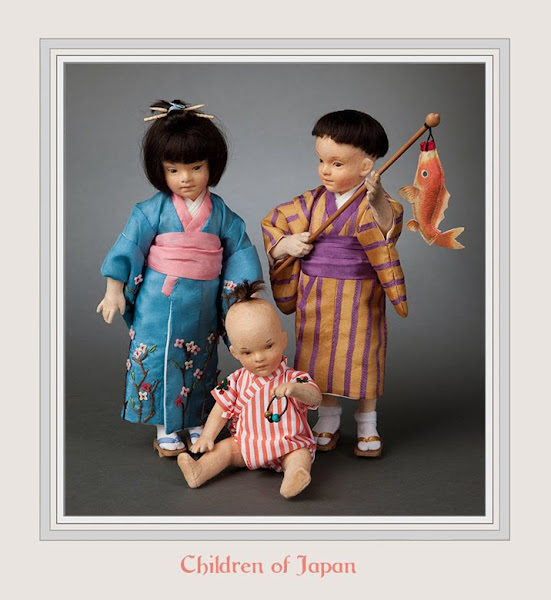

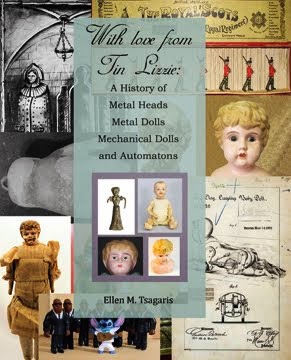
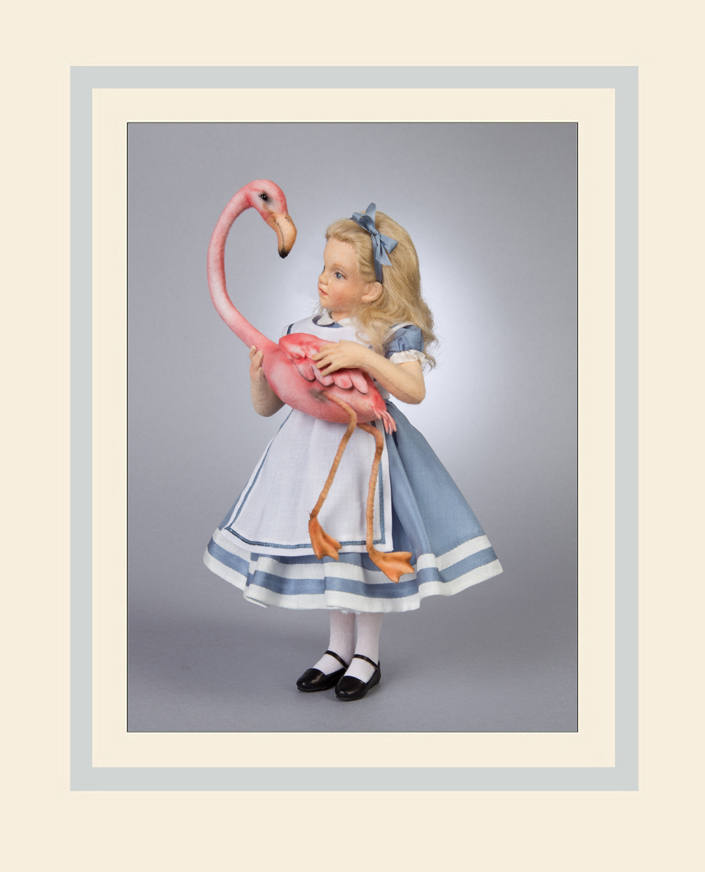


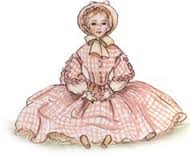


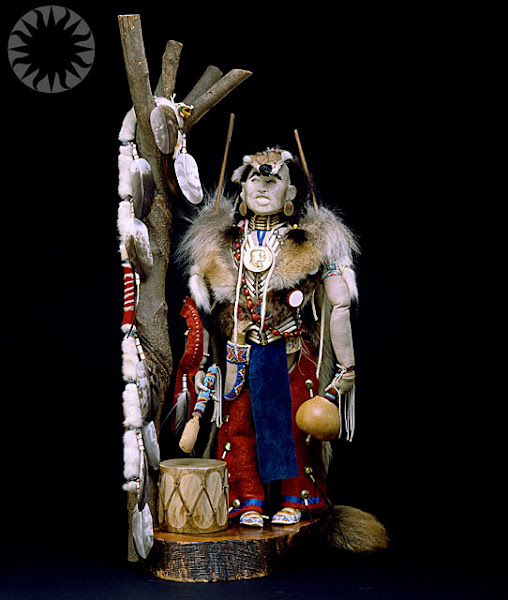
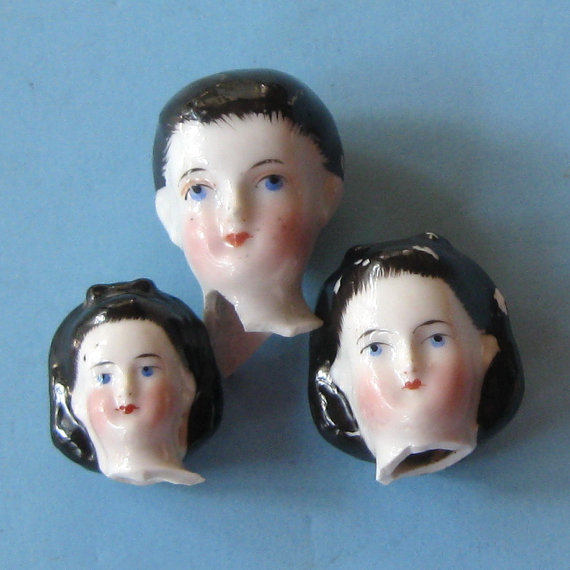
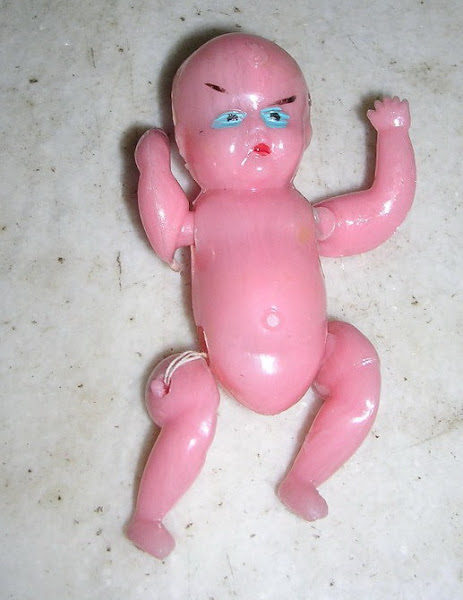
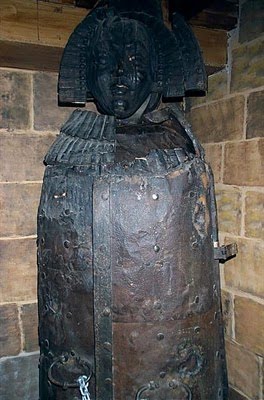

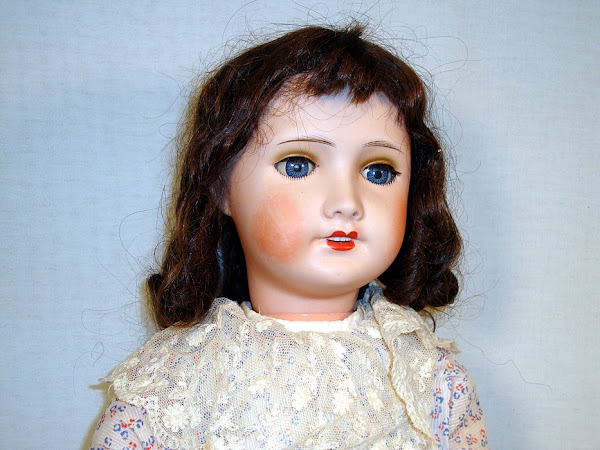



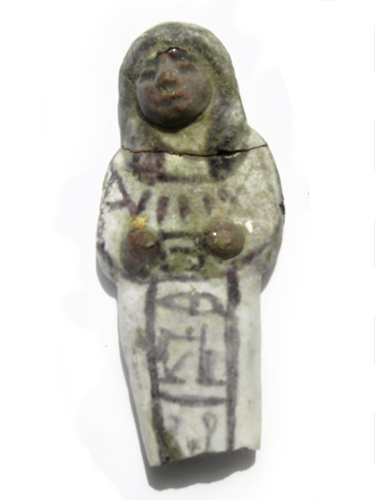
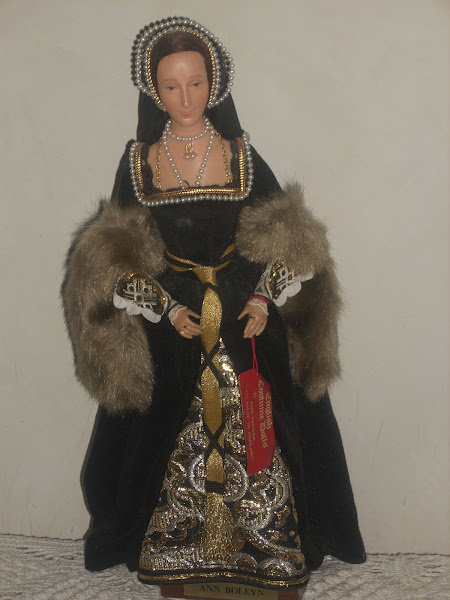





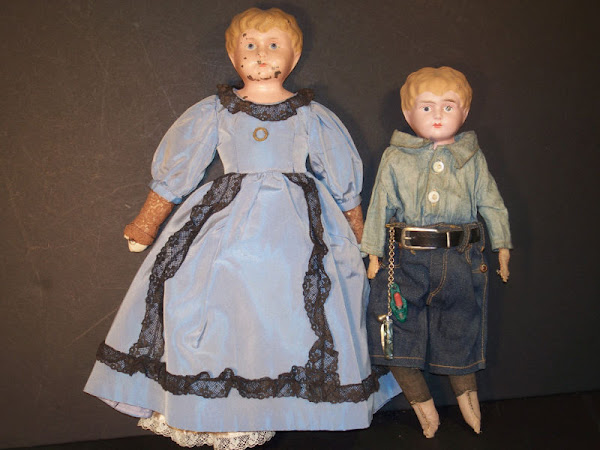


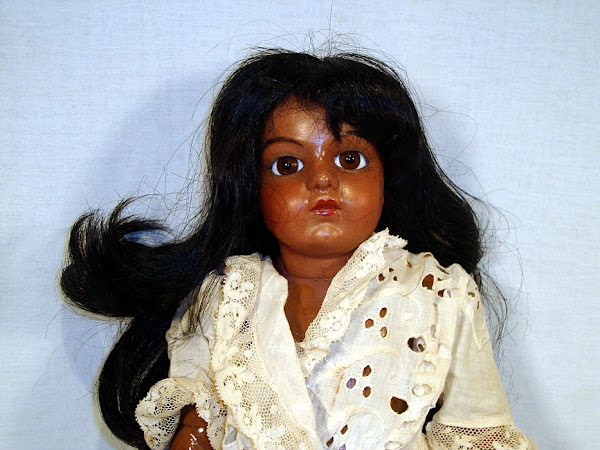
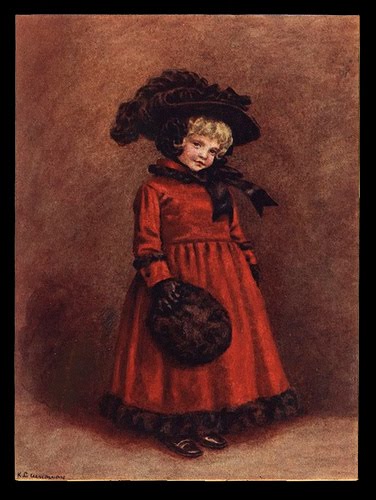

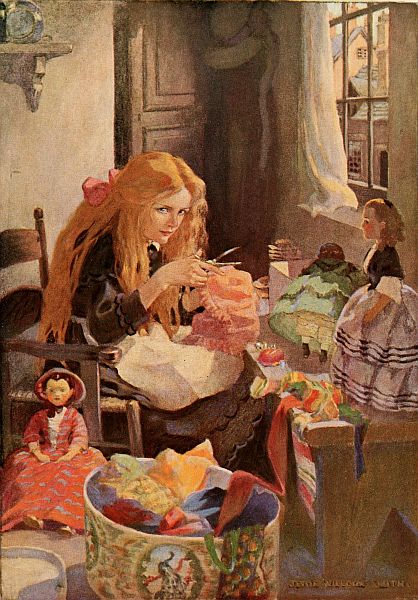


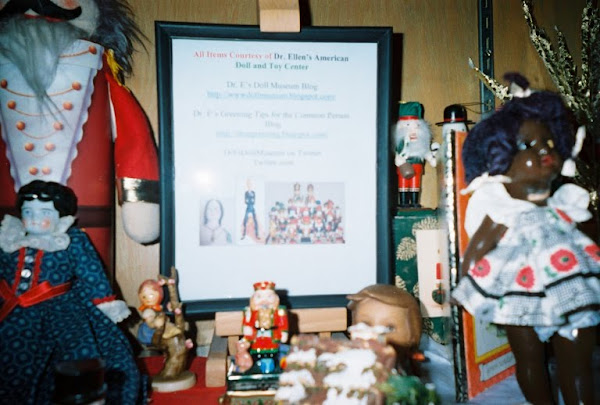






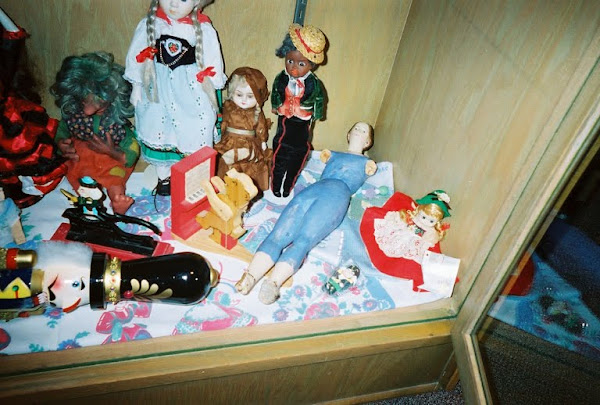
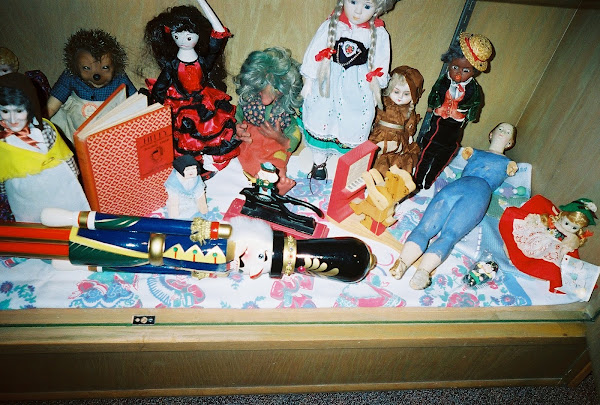
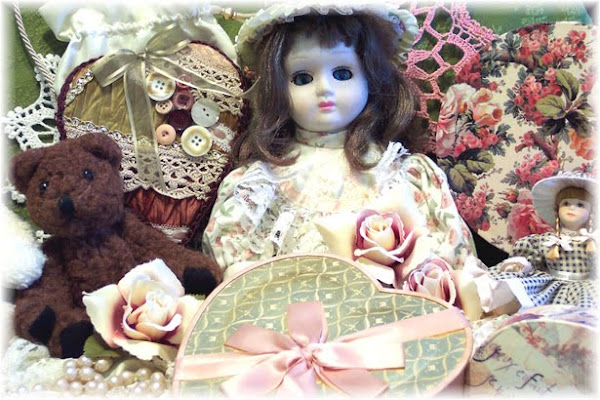
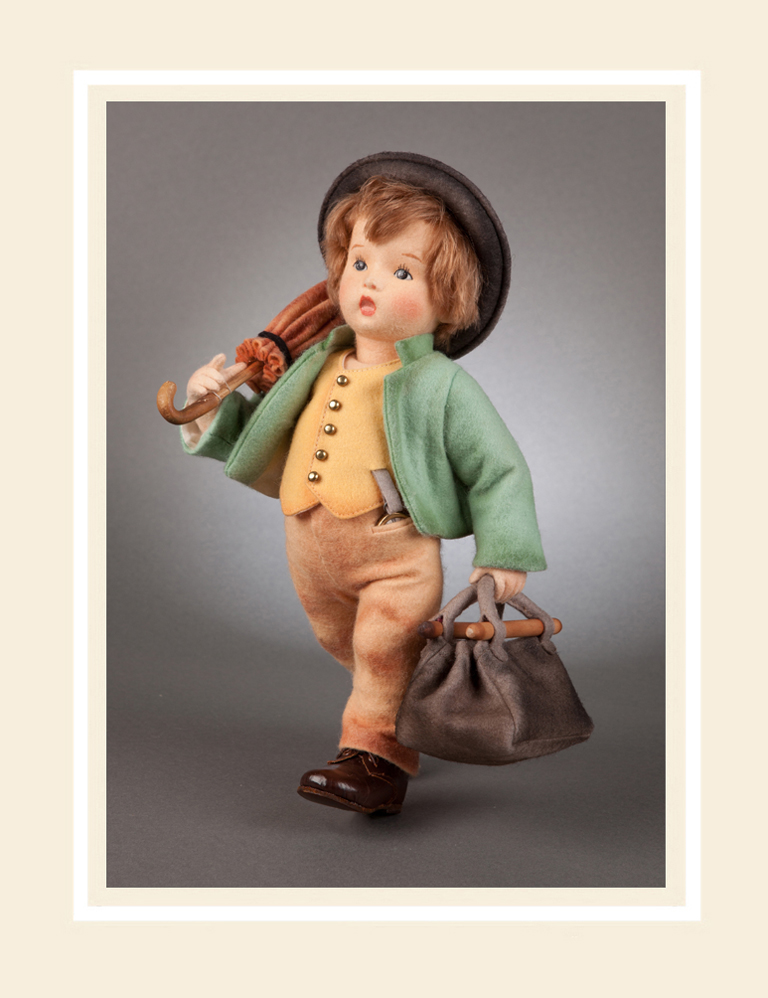

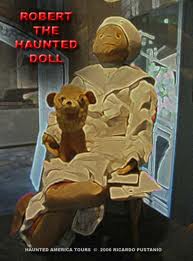

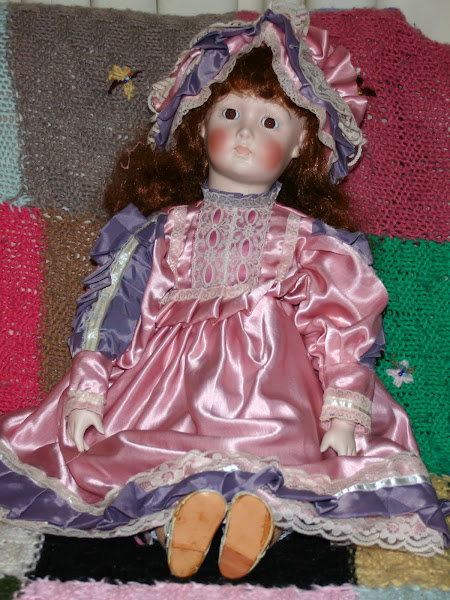
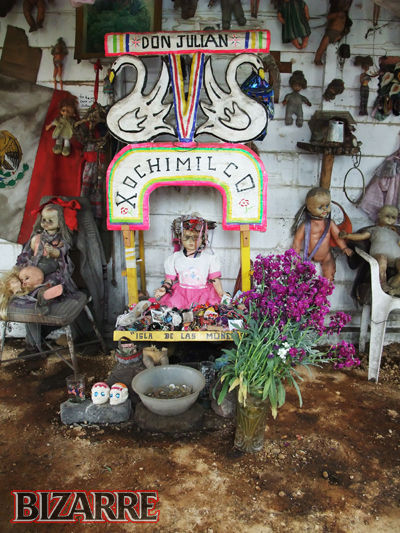
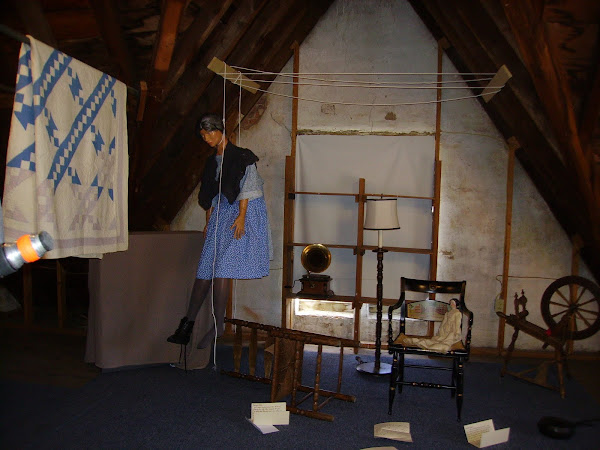
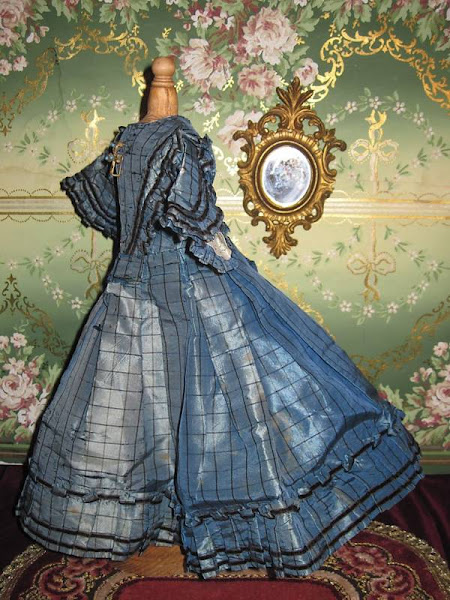wCWk~%24(KGrHqV,!h8Ew5GsnS3dBMUy3MzVPg~~_3.jpg)


